1804–1983
This page — first published in October 2013 — has received hundreds of thousands of visits, since then. It’s one of the most popular pages on this website. However, as of Spring 2020, it’s been superseded by this page: BEST 250 ADVENTURES OF THE 20TH CENTURY.
Feel free to peruse the list of titles here, but it no longer reflects my thinking about which adventure novels are the all-time best.
— JOSH (April 2020)
In chronological order:
- Walter Scott’s 18th c. frontier adventure Waverley (1814). Scotland, that savage tribal land just across the border from hyper-civilized England, was the original adventure frontier; and Walter Scott is the ur-Scottish adventure novelist. Waverley sends a young Englishman adventuring in the highlands of Scotland, during the Jacobite uprising. John Buchan on Scott: “What was needed was a writer who could unite both strains, for in the medieval world the two had been inseperable, the mystery and the fact, credulity and incredulity, the love of the marvellous and the descent into jovial common sense; who could make credible beauty and terror in their strangest forms by showing them as the natural outcome of the clash of human character; who would satisy a secular popular craving with fare in which the most delicate palate could also delight.”
- Mary Shelley’s Gothic science fiction adventure Frankenstein, or The Modern Prometheus (1818). From multiple points of view, we read about a brilliant scientist and his creation: a dehumanized creature who longs for love and friendship and, eventually, revenge. PS: There are two editions of the book; the 1831 “popular” edition was heavily revised and tends to be the one most widely read; scholars tend to prefer the 1818.
- Walter Scott’s 12th c. knightly adventure Ivanhoe (1820). The protagonist of which makes his first appearance at a tourney in disguise, known only as The Disinherited Knight. Also at that tourney is a mysterious archer named Locksley. Who can it be? This popular book was single-handedly responsible for the medievalist craze in early 19th-century England.
- James Fenimore Cooper’s frontier adventure The Last of the Mohicans (1826). Cooper’s Leatherstocking tales were popular and influential (esp. in France!), and therefore deserve a mention here — despite the fact that Mark Twain tore Cooper a new one. Despite its flaws — there are many! — this novel features an epic pursuit, and for that alone it deserves a place on this list.
- Charles Dickens’s crime adventure Oliver Twist (1837–1839). A great adventure, and the Artful Dodger is such a memorable character.
- Edgar Allan Poe’s Gothic sea adventure The Narrative of Arthur Gordon Pym of Nantucket (1838). Poe’s only complete novel — about a teenager who stows away on a ship, is kidnapped by mutineers and pirates, encounters cannibals, and explores the Antarctic before discovering the key to all Western mystical traditions — has been described as “at once a mock nonfictional exploration narrative, adventure saga, bildungsroman, hoax, largely plagiarized travelogue, and spiritual allegory.”
- Alexandre Dumas’s 17th c. swashbuckling adventure The Three Musketeers (1844). Introduces us to three unforgettable characters: the distinguished, highly educated Musketeer Athos; the religious and scholarly yet womanizing younger Musketeer Aramis; and the Falstaffian Musketeer Porthos. It is their sanguine companion D’Artagnan who coins the classic phrase “All for one, and one for all!”
- Alexandre Dumas’s avenger-type adventure The Count of Monte Cristo (1844–1845). It’s all here: a wronged man seeking revenge, a jailbreak, poisonings, smugglers, a sex slave (spoiler: she’s freed), and a treasure cave. Serialized in 117 installments, it’s on the long side; still, according to Luc Sante, this story is today as “immediately identifiable as Mickey Mouse, Noah’s flood, and the story of Little Red Riding Hood.”
- Herman Melville’s sea-going adventure Moby-Dick (1851). This is, we all know, much more than it appears to be on the surface. It is an allegory of (maybe) man’s gnostic rage against the occluded world in which he lives, separated from real reality. Perhaps more than you want to know about how whaling works, but one of the all-time great yarns.
- Lewis Carroll’s fantasy adventure Alice’s Adventures in Wonderland (1865).
- Wilkie Collins’s detective adventure The Moonstone (1868). Generally considered the first English-language detective novel.
- Jules Verne’s science-fiction adventure Twenty Thousand Leagues Under the Sea (1870). Introduces us to Captain Nemo, a scientific genius who roams the depths of the sea in his submarine — in quest of treasure, knowledge, and revenge.
- Mark Twain’s The Adventures of Tom Sawyer (1876).
- Robert Louis Stevenson’s 18th c. treasure-hunt adventure Treasure Island (1883). Which led to the popular perception of pirates as we know them today: e.g., peg-legged, one-eyed. Note that the castaway character Ben Gunn is a parody of Daniel Defoe’s character Robinson Crusoe!
- Mark Twain’s Adventures of Huckleberry Finn (1884–1885). Note that Twain, who scorned Walter Scott-type romances, uses the term “adventure” sardonically. He was poking holes in the prevailing sentimental and Romantic ethos of the literary establishment. Still, Twain’s novel is a fun romp through the American South in its grotesquerie, and it offers authentic thrills along the way.
- H. Rider Haggard’s frontier adventure King Solomon’s Mines (1885). Which set a new standard for thrills — thanks to the author’s illiberal belief that denizens of England are so coddled that they’ve forgotten their own savage nature. The first novel written in English that was based on the African continent, and the first “Lost World” adventure. NB: Haggard would write 18 books featuring Allan Quatermain, the hero of King Solomon’s Mines.
- Robert Louis Stevenson’s 18th c. avenger-type adventure Kidnapped (1886). In which young David Balfour is sold into servitude by his wicked uncle. With the help of Alan Breck, a daring Jacobite, David escapes and travels across Scotland by night — hiding from government soldiers by day.
- Rudyard Kipling’s Haggard-esque frontier adventure The Man Who Would Be King (1888). Two British adventurers become kings of a remote part of Afghanistan, because — it turns out — the Kafirs there practice a form of Masonic ritual and the adventurers know Masonic secrets.
- Arthur Conan Doyle’s knightly adventure The White Company (1891). One of his best adventures!
- Arthur Conan Doyle’s Sherlock Holmes crime adventure (story collection) The Adventures of Sherlock Holmes (1891–1892).
- Anthony Hope’s swashbuckling adventure The Prisoner of Zenda (1894). Which takes place in the fictional central European country of Ruritania, and which concerns a political decoy restoring the rightful king to the throne, was so influential that its genre is now called Ruritanian. Perhaps the first political thriller, and a perfect adventure novel. The 1937 film adaptation starring Ronald Colman, Madeleine Carroll and Douglas Fairbanks Jr., with a supporting cast including Raymond Massey, Mary Astor, and David Niven, is also perfect.
- Arthur Conan Doyle’s military adventure (story collection) The Exploits of Brigadier Gerard (1894–1895, as a book 1896).
- Rudyard Kipling’s atavistic adventure The Jungle Book (stories, 1894).
- H.G. Wells‘s science fiction adventure The Time Machine (1895).
- H.G. Wells‘s science fiction adventure The Island of Doctor Moreau (1896). Edward Prendick, a shipwrecked man, is left on the island home of Doctor Moreau, who creates human-like beings from animals. After Moreau is killed, the Beast Folk begin to revert to their original animal instincts.
- Rudyard Kipling’s sea-going adventure Captains Courageous (1896).
- Bram Stoker’s supernatural horror adventure Dracula (1897). Whose readers know what kind of monster the protagonists seek before they do. Described by Neil Gaiman as a “Victorian high-tech thriller,” the book’s use of cutting-edge technology — and true-crime story telling, from newspaper clippings to phonograph-recorded notes — creates an eerily realistic vibe.
- H.G. Wells‘s science fiction adventure The Invisible Man (1897).
- H.G. Wells‘s science fiction adventure The War of the Worlds (1898).
- Joseph Conrad’s Heart of Darkness (1899). The protagonist of which is sent up a river in Africa to seek the European manager of a remote ivory station who has turned into a charismatic monster, is a sardonic inversion of yarns by adventure authors who didn’t give much thought to the colonialist and racist context within which their civilization-vs.-savagery narratives played out. “The horror! The horror!”
- Rudyard Kipling’s espionage adventure Kim (1900–1901). In which an Irish orphan in India not only becomes the disciple of a Tibetan lama, but is recruited by the British secret service to spy on Russian agents participating in the Great Game. In the process, he races across India; Kipling — an imperialist, but a keen observer of India all the same — brilliantly captures the essence of that country under the British Raj.
- Arthur Conan Doyle’s Sherlock Holmes crime adventure The Hound of the Baskervilles (1901).
- H.G. Wells‘s science fiction adventure The First Men in the Moon (1901).
- Robert Erskine Childers’s espionage adventure The Riddle of the Sands (1903). This can be a demanding read for those with no interest in sailing or timetables. But it’s a thrilling yarn nevertheless, one which sought to alert British readers to the danger of German invasion. Its protagonists are archetypes of the amateur adventure hero, the likes of whom would later appear so memorably in the novels of John Buchan.
- Jack London’s Klondike adventure The Call of the Wild (1903). Expresses the author’s notion that because the veneer of civilization is fragile, humans revert to a state of primitivism with ease. PS: Note that London’s White Fang shows the flipside of this trajectory.
- Arthur Conan Doyle’s Sherlock Holmes crime adventure The Return of Sherlock Holmes (1903–1904).
- J.M. Barrie’s fantasy adventure Peter Pan (1904). Peter Pan began as a play, which debuted in London in 1904; the author then developed it into a novel, which was published in 1911. In both versions, the titular character — Peter Pan, the fearless, innocent, conceited, heartless boy who wouldn’t grow up — eavesdrops on the bedtime stories told by Mrs. Darling to her children Wendy, John and Michael. Discovered by Wendy, Peter invites her to fly with him to Neverland to be a mother to his gang, the Lost Boys. Wendy and her brothers fly to Neverland — narrowly avoiding disaster — then accompany Peter and the Lost Boys on various escapades… such as rescuing the princess Tiger Lily from the evil Captain Hook and his pirates. Wendy begins to miss her parents, but before she can take her brothers and the Lost Boys back to England, she is kidnapped by Hook. Peter’s fairy, Tinker Bell, meanwhile, sacrifices herself by drinking poison intended for Peter. (In the play’s most famous moment, Peter turns to the audience and begs those who believe in fairies to clap their hands.) Will Peter rescue Wendy and the others? And if he succeeds, will they stay with him in Neverland? Fun facts: Walt Disney obtained the animation rights to Peter Pan in 1935, but the movie wasn’t completed until 1953. There have been several musical productions of the play starring Mary Martin, Sandy Duncan, and Cathy Rigby as Peter Pan. As for the various live-action movie adaptations, the only one I like is Paramount’s 1924 silent movie starring Betty Bronson.
- G.K. Chesterton’s Radium Age sci-fi adventure The Napoleon of Notting Hill (1904). Before Francis Fukuyama’s 1989 essay “The End of History?” posited that the universalization of Western liberal democracy may signal the endpoint of humanity’s sociocultural evolution, G.K. Chesterton’s first novel described a stultifying, Wells-esque utopian world order — in the year 1984 — where religion has been banished, and violence is unknown, but at the cost of particularism, creativity, and progress. So bored are the British that they randomly select Auberon Quin — an eccentric prankster — as their king. Among other proto-Pythonesque provocations, Quin declares that each of London’s neighborhoods will henceforth be an independent city-state, and requires their lord mayors to dress in medieval costumes. Most Londoners enjoy this game… but ten years later, when the other cities plan to build a road that passes through Notting Hill, 19-year-old patriot Adam Wayne foments a protest movement. Wayne, the titular Napoleon of Notting Hill, turns out to be a born military tactician, and soon enough an all-out conflict, featuring swords and halberds, has broken out between London’s neighborhoods — prefiguring the 1981 Judge Dredd story “Block War.” Chesterton doesn’t gloss over the tragedy and stupidity of war… but ultimately, his point is that a healthy, vibrant society demands a little tragedy. Fun facts: The Irish revolutionary leader Michael Collins, who was 14 when the book was published, is known to have greatly admired The Napoleon of Notting Hill, which helped inspire his Irish nationalism. Also, it has been speculated that Orwell’s Nineteen Eighty-Four, which is also set in a dystopian British utopia, takes place in that year as an homage to Chesterton’s novel.
- E. Nesbit’s children’s fantasy adventure The Phoenix and the Carpet (1904). Nesbit’s writing is extraordinary, because: she is drily witty, in a way that makes her writing as entertaining to adults as to children; she was politically progressive, so there’s not quite as much to cringe at as we find in her contemporaries’ writing; and her conception of how magic and the everyday world might interact — the brilliant idea that magic has strict rules which need to be puzzled out, painfully — would prove influential on everyone from P.L. Travers to Edward Eager, C.S. Lewis, Diana Wynne Jones, and J.K. Rowling. Here, siblings Cyril, Anthea, Robert, and Jane, whom we first met in Five Children and It (1902), discover a flying carpet and an ancient Phoenix — a magnificent, vain creature which expects to be worshipped by modern Londoners. Over the course of several adventures, the children wear out the carpet’s fabric — which causes it to malfunction, entertainingly. There’s a burglar, a buried treasure, and a church jumble sale that goes entertainingly awry. Will the children figure out the best possible use for the carpet before it’s too late? Fun facts: The final installment in the Psammead series is The Story of the Amulet (1906). I’m also a fan of Nesbit’s Bastable series, her House of Arden series (including 1908’s The House of Arden), and her other children’s novels — including The Railway Children (1906) and The Enchanted Castle (1907).
- Baroness Orczy’s historical (18th c.) adventure The Scarlet Pimpernel (1905). Set during France’s post-Revolution Terror. Sir Percy Blakeney, the effete aristocrat who is secretly the daring Scarlet Pimpernel (or vice-versa), would inspire characters such as Zorro and Batman. “Is he in heaven, or is he in hell, that damned elusive Pimpernel?” Orczy would write numerous sequels, prequels, and spinoffs — including I Will Repay (1906), The Elusive Pimpernel (1908), Eldorado (1913), Lord Tony’s Wife (1917), and The Triumph of the Scarlet Pimpernel (1922). Fun fact: British actor Leslie Howard starred not only in the 1934 film adaptation of this book but in the 1941 British anti-Nazi thriller “Pimpernel” Smith.
- Jack London‘s Klondike adventure White Fang (1906). In this companion novel to London’s Call of the Wild, a hybrid wolf-dog born in the frozen wilds of northwest Canada learns to kill or be killed. Our protagonist is White Fang — so named by Grey Beaver, an Indian who takes the cub in and raises him. Right from the beginning, the action is brutal — nature red in tooth and claw. White Fang’s father is killed, his siblings starve, his mother first protects him and then rejects him. Grey Beaver is a harsh, uncaring master, and his other dogs, led by the fierce Lip-Lip, persecute the outsider; so White Fang grows up “the enemy of his kind” — a savage killer. He is purchased by Beauty Smith, a dog-fighter who pits White Fang against increasingly tough opponents… including wolves, a lynx, and a huge bulldog. When a gold hunter, Weedon Scott, purchases him from the dog-fighter, will White Fang at last be tamed? Fun fact: First serialized in Outing magazine, White Fang has been read as an allegory of humanity’s (or, at least, the author’s) progression from nature to civilization — a de-individualizing process that does violence to the soul, even as it makes contentment possible.
- Maurice Leblanc’s crime adventure collection Arsène Lupin, gentleman-cambrioleur (Arsène Lupin, Gentleman Burglar) (1907). In this collection of eight linked stories, we first meet gentleman thief and master of disguise Arsène Lupin. (Lupin would become a beloved figure in French pulp fiction; he’d eventually be featured in 17 novels and 39 novellas.) In “The Arrest of Arsène Lupin,” Bernard d’Andrèzy, a passenger on a ship to America, attempts to unmask Arsène Lupin, who has stolen a woman’s jewels; but who is d’Andrèzy? In “Arsène Lupin in Prison,” Lupin demands that a baron send him certain valuables, lest Lupin come and steal them; but he does so while he’s in prison. And in “The Escape of Arsène Lupin,” Lupin attempts to escape from prison via a complex stratagem in which he makes himself look like… a Lupin lookalike. Quel génie! Other stories: “The Mysterious Traveller,” “The Queen’s Necklace,” “The Safe of Madame Imbert,” “Sherlock Holmes Arrives Too Late,” “The Black Pearl,” and “Seven of Hearts.” Fun facts: These stories were first published in the French magazine Je sais tout beginning in July 1905.
- G.K. Chesterton’s metaphysical thriller The Man Who Was Thursday (1908). Subtitled “A Nightmare,” Chesterton’s best novel follows Gabriel Syme, a Scotland Yard man, as he infiltrates the London chapter of the European Anarchist Council. Lucian Gregory, an avant-garde poet, publicly endorses anarchism… in order to make himself seem harmless, when in fact he is up for election as “Thursday,” one of seven members of the Council, each named for a day of the week. Syme gets himself elected in Gregory’s place… only to discover that nothing is as it seems. The Council’s president, Sunday, is a sinister mastermind who has purposely recruited undercover police detectives and pitted them against one another! As Thursday and his colleagues pursue Sunday, the “nightmare” becomes more and more fantastical and absurdist. I the end, we’re left to puzzle over whether Sunday is evil or… Christ-like. Fun facts: Included on Michael Moorcock’s list of the 100 Best Fantasy Novels. Orson Welles’s 1938 adaptation of The Man Who Was Thursday for The Mercury Theatre on the Air is pretty great.
- Kenneth Grahame’s children’s fantasy adventure The Wind in the Willows (1908). When they aren’t enjoying the simple pleasures of life in England’s Thames Valley, three anthropomorphized animals — the naive Mole, the friendly Rat, and the fierce Badger — struggle to keep their hapless friend Toad, a wealthy idler with a mania for automobiles, out of trouble. Readers are treated to a jail break and hunted-man adventure, during which Toad — who was imprisoned for stealing a car, and is now disguised as an elderly washerwoman — flees from his pursuers via steam engine and horse-drawn barge, only to steal the same car again. Immediately after this sequence, which is so entertaining that Disney Land designed a ride in its honor, Toad’s friends must help him to recapture his stately home — via a secret tunnel sneak attack — from weasels and stoats who’ve invaded the Wild Wood. The preceding chapters are perhaps less thrilling than these, but still funny, sweet, and utterly charming. Fun facts: The Wind in the Willows has been adapted as a movie several times, most notably by Disney in 1949, Rankin/Bass in 1985/1987, and Terry Jones in 1996. British bands from Pink Floyd to Iron Maiden have referenced the mystical chapter “The Piper at the Gates of Dawn” in their music.
- Marjorie Bowen’s supernatural fantasy adventure Black Magic (1909). In medieval Flanders, Dirk Renswoude, a lonely craftsman of noble birth, meets Thierry, a young scholar who shares Dirk’s fascination with the black arts. Against a background of violent storms, mysterious comets, and a Walpole-esque mood of gothic horror, the two experiment with mystic circles, arcane incantations, and the summoning of demonic visions. Although Thierry is afraid of blasphemy, Dirk is ambitious — and has sworn allegiance to the Devil in return for worldly power. In fact, Dirk aims to become the Antichrist and Satanic Pope! Nevertheless, Dirk is not entirely villainous — he risks everything for Thierry, with whom he has fallen in love… and his backstory reveals a surprise twist that makes us sympathetic to his desire for the agency and independence denied to him by his family. Ysabeau, a cold-blooded schemer and murderess character, also becomes a sympathetic and even heroic figure; and Jacobea, the novel’s tormented heroine, is also well-portrayed. Despite a great deal of awkwardly formal speech, this is a tense, atmospheric thriller that gets entertainingly trippy at times. The novel’s visual set-pieces remind me of Mervyn Peake’s 1946–1959 Gormenghast series. Fun facts: Margaret Gabrielle Vere Long published over 150 historical romances, supernatural horror stories, popular histories and biographies — most frequently under the pseudonym “Marjorie Bowen.” Fritz Leiber, author of the witchcraft thriller Conjure Wife, called Black Magic “brilliant.”
- Marcel Allain and Pierre Souvestre’s crime adventure Fantômas (1911). A bloodthirsty avenger/artful dodger adventure about the ruthless Fantômas — who would become one of French crime fiction’s most popular characters. When Marquise de Langrune is murdered, her friend Rambert accuses his son, Charles, of having committed the heinous crime. Inspector Juve of the Paris Sûreté suspects that Fantômas was to blame, but it’s too late — Charles’s body is pulled from a river, an apparent suicide. Meanwhile, Lord Beltham has disappeared; Juve finds his body stuffed into a trunk belonging to Beltham’s friend, Gurn. Then, when a Russian princess is robbed, Juve questions Mademoiselle Jeanne, the hotel’s cashier — who knocks him out, before revealing herself to be… Charles, who is not dead! (Charles winds up becoming Juve’s assistant.) Juve captures Gurn, who is actually… Fantômas! How will Fantômas escape the guillotine? Fun fact: Allain and Souvestre would crank out over 30 subsequent Fantômas feuilletons together — including nine in 1911 alone! These lowbrow entertainments were devoured by high-lowbrow artists and authors — Raymond Queneau, Blaise Cendrars, René Magritte, Robert Desnos, Guillaume Apollinaire, James Joyce — some of whom were inspired to introduce adventure elements into their own writing.
- G.K. Chesterton’s crime adventure story collection The Innocence of Father Brown (serialized 1910–1911; as a book, 1911). Chesterton’s Father Brown character — a plump, unassuming Roman Catholic priest — is, in important ways, the anti-Sherlock Holmes. He is modest, empathetic, un-dashing and un-athletic. Like Holmes, however, he has made a lifelong study of evildoers: “Has it never struck you,” he demands, in his first outing, “that a man who does next to nothing but hear men’s real sins is not likely to be wholly unaware of human evil?” In this first collection of Father Brown stories, we also meet Aristide Valentin, head of the Paris Police, and Flambeau, the world’s most famous criminal; both characters, at times, will be Brown’s friends and foes. In “The Blue Cross,” the first Father Brown story, Valentin attempts to prevent Flambeau from robbing Father Brown; but Father Brown remains one step ahead of both men the entire time. What is Father Brown’s method? H puts himself imaginatively into the minds of criminals. He also relies on casuistry — the resolving of moral problems by the application of theoretical rules to particular instances. That is to say, he is prejudiced! Fun fact: The stories collected here first appeared in the magazines The Story-Teller and The Saturday Evening Post. The best Father Brown movie remains the 1954 film, Father Brown, starring the perfectly cast Alec Guinness.
- Alfred Jarry’s ’pataphysical adventure Gestes et opinions du docteur Faustroll pataphysicien: Roman néo-scientifique suivi de Spéculations (trans. as Exploits and Opinions of Dr. Faustroll, Pataphysician) (1911). The scientist-inventor Dr. Faustroll travels — in a high-tech (capillarity, surface tension, equilateral hyperbolae are involved) amphibious copper skiff — from the Seine from point to point through the neighborhoods and buildings of Paris. He is accompanied by his Wookiee-like baboon butler Bosse-de-Nage, and also by the story’s narrator, Panmuphle, a lawyer attempting to convict the good doctor of debt. Opposed to mainstream science’s principe de l’induction, Faustroll practices a “science of imaginary solutions” that he calls ’pataphysics. Whereas the inductive reasoner brackets his imagination and blinkers his perspective, the ’pataphysician embraces as many perspectives as possible; no conjecture is regarded as impossible. Spoiler alert: Dr. Faustroll dies! But he manages to send a telepathic letter to Lord Kelvin describing the afterlife and the cosmos. Fun fact: Jarry is best known as the author of the proto-Dada play Ubu Roi. This posthumously published novel is regarded, by exegetes, as the central work to his oeuvre.
- Edgar Rice Burroughs‘s atavistic adventure Tarzan of the Apes (serialized 1912; as a book, 1914). When England’s Lord and Lady Greystoke are marooned in the western coastal jungle of equatorial Africa, their infant son is adopted by Kala of the Mangani — a species of manlike apes who speak a primal universal language understood by other animals, too. “Tarzan” (Mangani for “white skin”) grow up to be a fierce warrior and skilled hunter; he also discovers his parents’ abandoned cabin, and teaches himself to read English. Not long after, another party is marooned on the coast: including professor Archimedes Q Porter and his daughter, Jane; French Naval Officer Paul D’Arnot (who befriends Tarzan, and teaches him how to behave among Europeans); and Tarzan’s cousin. Will Tarzan assume his rightful role, as Earl of Greystoke in England? Or will he remain in the jungle? Fun facts: Serialized in All-Story Magazine. Burroughs would write over two dozen Tarzan adventures; and the franchise has grown to include movies (starring Johnny Weissmüller, in the 1930s–40s), TV and radio, and comics (drawn by Jesse Marsh, Russ Manning, and Doug Wildey from 1948–1972, and by Joe Kubert from 1972–1976).
- Arthur Conan Doyle’s The Lost World (1912). Having assembled a crew of adventurers, the brilliant, blustering physiologist and physicist Prof. Challenger journeys to a South American jungle… in search of a lost plateau crawling with iguanodons. It’s a ripping yarn — the first popular dinosaurs-still-live tale, prototype for everything from King Kong to Jurassic Park. At the same time, however, it’s a philosophical novel, one which animates — in a thrilling, humorous fashion — the author’s obsessive drive (also seen in his Sherlock Holmes stories) to reconcile the claims of logical reason and intuition. Challenger’s foil, the respected zoologist Professor Summerlee, is an avatar of the inductive method of reasoning; we first meet him when he rises from the audience at a lecture in order to accuse Challenger of making non-testable assertions. Although Summerlee is an admirable figure, in the end his refusal to accept any facts that haven’t been revealed by means of instruments and techniques of observation and experiment make him look like a dogmatic nincompoop. Plus: Battles with proto-humanoids! Fun fact: Doyle followed up this bestselling novel with The Poison Belt (1913) and The Land of Mist (1926), as well as two short stories about Challenger. Reissued by Penguin Classics.
- Zane Grey’s Western adventure Riders of the Purple Sage (1912). If you’re only going to read one Western, this is the one. Set in the cañon country of southern Utah in 1871, its relatively complex plot involves polygamists, a notorious gunman searching for his long-lost sister, and a mysterious masked rider! Mormon-born Jane Withersteen has inherited a valuable ranch; when she befriends Venters, a “Gentile” (non-Mormon), the Mormon elders begin to persecute her. Venters heads out in pursuit of gang of rustlers that includes a mysterious Masked Rider; meanwhile Lassiter, a laconic Mormon-killer, arrives at Jane’s ranch in search of his sister. Will he and Jane fall in love? How will they escape from the vengeance of the Mormons… and from rustlers, too? Fun fact: One of the most influential western novels. Riders of the Purple Sage has been filmed five times; a comic-book version was published by Dell in 1952.
- Edgar Rice Burroughs’s A Princess of Mars (serialized 1912; pub. in book form, 1917). Transported to Mars — via something like astral projection — ex-soldier John Carter finds himself embroiled in a war between the Red and Green Martians. The barbaric, nomadic Green Martians are 15 feet tall, with six limbs; they inhabit the abandoned cities of Barsoom (that is, Mars). The Red Martians, meanwhile, are civilized humanoids, organized into city-states that control Barsoom’s water. Carter’s unusual coloring, and the extraordinary strength he is afforded by the planet’s weak gravity, make him uniquely capable of forming alliances among honorable members of both Barsoomian peoples. He falls in love with Dejah Thoris, beautiful daughter of a Red Martian chieftain, and rescues her from both Green and Red Martians before leading a Green Martian army against the enemy of Thoris’s state. Fun facts: Serialized pseudonymously, in the same year that Burroughs’s Tarzan of the Apes appeared, this is the first in the author’s popular “Barsoom” planetary romance series. It was originally titled Under the Moons of Mars. PS: I might be in the minority, on this subject, but I quite enjoyed the book’s 2012 Hollywood adaptation, John Carter.
- Earl Derr Biggers’s semi-comical thriller Seven Keys to Baldpate (1913). William Magee, a dime-store novelist who hopes that solitude will allow him to produce a great work of literature, acquires what he thinks is the only key to Baldpate, a New Jersey mountaintop resort that’s closed for the winter. Which may sound like the set-up of The Shining, but in fact this is an apophenic adventure. Six uninvited guests — a hermit, a peroxide blonde, a disgraced college professor, a political op, a bald-headed gangster, and a high-society dame — show up at the resort, each of whom tells Magee a far-fetched tale about who they are and why they’ve come. Magee finds himself caught up in a fast-paced plot, complete with witty repartee, that’s more far-fetched than his own stories. Is everyone involved in a crime caper of some kind? What are they up to? Fun facts: Before Earl Derr Biggers invented his famous detective character Charlie Chan, this was his most popular book. It was adapted by George M. Cohan as a hit play, then several times as a movie; the 1935 version written by Cohan is the best-known of these.
- Marie Belloc Lowndes’s psychological thriller The Lodger (1913). The author grew up in London in the late 19th century, during Jack the Ripper’s killing spree; in this atmospheric murder-mystery-without-a-sleuth, she takes us back to that era. Ellen and Robert Bunting are an older couple who have retired from a life as servants to open a rooming house… but they’ve been unsuccessful, and they’re about to lose everything. One day, however, a Mr. Sleuth arrives at their door and offers them a generous monthly fee for the use of their rooms. At the same time, a killer — who signs himself “The Avenger” — begins to stalk London’s foggy streets. Slowly, Mrs. Bunting begins to suspect that her lodger’s odd behavior may indicate that he is the killer. However, fearful of financial ruin, she doesn’t share her suspicions with her husband. The pace is slow, the tonality brooding and melodramatic. Brrr! Fun facts: Alfred Hitchcock adapted Lowndes’s novel as a silent movie of the same title in 1927. Hitchcock also adapted the story, in 1940, as the first installment in the radio drama series Suspense.
- André Gide‘s picaresque Les caves du Vatican (in English: Lafcadio’s Adventures, The Vatican Catacombs, other titles). Gide described this antic, Shakespearean comedy-style yarn, set in 1890s Paris and Rome, as a sotie — that is, a satirical play exposing humankind’s foolishness. Bourgeois morality and complacent religiosity do take a beating, here. Three of our five protagonists are Anthime, a pedantic freethinker and scientist living in Rome, who experiences a religious conversion; Julius, a smug, middlebrow Parisian novelist hoping to win a Nobel prize by writing a crime novel about an acte gratuit — an action that is unmotivated; and Amédée, a devout, naive Catholic — all of whom are brothers-in-law, and all of whom become entangled to various degrees in a con game, the victims of which are led to believe that the Pope (Leo XIII, at the time) has been kidnapped, replaced with an imposter, and incarcerated underneath the Vatican. Our fourth protagonist is Protos, a con man who poses as a Catholic priest raising money to rescue the true Pope from the Freemasons; and our fifth is Lafcadio, a teenaged would-be ubermensch who reads nothing but adventures like Aladdin and Robinson Crusoe, and whose goal in life is to perform an acte gratuit — whether for good or ill. When Lafcadio, whom we discover is the illegitimate half-brother of Julius and a former schoolmate of Protos, encounters Amédée, who has headed out to singlehandedly rescue the Pope, who will survive the encounter — the hero or the antihero? Fun facts: First serialized January–April 1914 in La Nouvelle Revue Française. Gide was among those few French writers of the early 20th century who took inspiration from pulp fiction, as a rebuke to the earnestness of highbrow European fiction. A few years later, André Breton would write, to fellow absurdist litterateur Tristan Tzara, “You can’t imagine how much André Gide is on our side.”
- John Buchan’s Richard Hannay adventure The Thirty-Nine Steps (1915). When mining engineer Richard Hannay discovers the existence of a ring of German spies who have stolen British plans for the outbreak of war, he is framed for murder. Fleeing to Scotland, he must elude not only spies but the police. The best hunted-man thriller (or “shocker,” to use the author’s term) ever, at least until Geoffrey Household’s Rogue Male. Like Edgar Rice Burroughs and Jack London, Buchan’s prose juxtaposes realistic hunted-man chases, violent weather, and hand-to-hand combat with fantasy and atavistic (alas, usually racist) elements. Adapted into a humorous adventure movie of the same title by Alfred Hitchcock.
- John Buchan’s Richard Hannay adventure Greenmantle (1916). In the second of Buchan’s five terrific Richard Hannay “shockers,” this sequel to The Thirty-Nine Steps introduces us to: Sandy Arbuthnot, an Orientalist and master of disguise; the doughty Afrikaner hunter and scout Peter Pienaar; and the fat, dyspeptic American anti-fascist John Blenkiron. During the First World War, the Germans plot to organize a jihad to rouse the British Mahometans in India to fight for the Caliph against England. Germany needs to control a mystical Muslim figure, Greenmantle, who can “madden the remotest Moslem peasant with dreams of Paradise”; the beautiful but evil Hilda von Einem sets out to seduce her false prophet… but ends up falling in love with him. Can Hannay and his companions stop the plot in time? Fun fact: The character of Sandy Arbuthonot is loosely based on the extraordinary real-life Orientalist and British diplomat Aubrey Herbert.
- Talbot Mundy’s espionage/occult adventure King of the Khyber Rifles (1916). At the outset of the First World War, Captain King, a kind of secret agent for the British Raj, is ordered to investigate the possibility that Turkey might try to stir Muslims into a jihad against the British Empire. Traveling (in disguise) from India to the Khyber Pass and Khinjan in Pakistan and Afghanistan, King makes contact with Yasmini, a beautiful woman worshipped by the fierce hill tribesmen on the Raj’s northwest frontier. Is Yasmini loyal to the Raj… or is she trying to raise an army of her own? Meanwhile, King seeks out the murderous mullah who dreams of a jihad… and discovers an ancient secret — the Sleepers — concealed in a sacred cave. Fun facts: This is the author’s most famous novel; it influenced Robert E. Howard and other prewar fantasy adventure writers, and it was adapted as a movie twice (in 1929 and 1953) — not to mention as a 1953 Classics Illustrated comic. PS: This novel’s plot is strongly reminiscent of Rosemary Sutcliffe’s 1954 YA adventure, The Eagle of the Ninth. Hmmm…
- A. Merritt’s Radium-Age sci-fi/fantasy adventure The Moon Pool (1918). The scientist Dr. Goodwin, the dashing pilot/adventurer Larry O’Keefe, and others descend into the Earth’s core — in pursuit of an entity that sometimes rises to the surface of the planet and captures men and women. In addition to a lost race of powerful, handsome “dwarves” and a lost race of froglike humanoids, the explorers discover that the entity they seek is the Dweller, essentially an AI created by an advanced race, known as the Shining Ones (ancient astronauts?). The Dweller has the capacity for great good and great evil, but over time is has tended to become evil rather than good. Yolara, a beautiful woman who serves the Dweller, falls in love with O’Keefe; so does Lakla, a beautiful woman who serves the Shining Ones. The adventurers must persuade or coerce the Dweller to become good — but how? Fun fact: Merritt was a best-selling author during this period. The Moon Pool, which originally appeared as two short stories in All-Story Weekly, is sometimes cited as an influence on Lovecraft’s “The Call of Cthulhu.” Reissued by Bison Frontiers of Imagination.
- Edgar Rice Burroughs’s The Land That Time Forgot (1918). During WWI, a shipwrecked American shipbuilder (Bowen Tyler), beautiful Frenchwoman Lys La Rue, and the crew of a British tugboat capture a German U-boat — and sail it to the Antarctic, dodging Allied ships — until they find themselves drawn to an uncharted magnetic island… inhabited by beast-men in various states of evolution. The British and German sailors agree to work together, under Tyler, to survive (Swiss Family Robinson-style) until they can somehow refuel the U-boat. However, when Lys is captured by proto-humans and the Germans abscond with the sub, Tyler must set off into the interior of the island. Fun facts: Some Burroughs fans consider this the author’s best novel. Confusingly, in 1924 it was published — along with two sequels (The People That Time Forgot, Out of Time’s Abyss) under the omnibus title The Land That Time Forgot. Reissued by Bison Frontiers of Imagination.
- Louis Joseph Vance’s Lone Wolf espionage adventure The False Faces (1918). Ten years before the debut of Simon “The Saint” Templar, Leslie Charteris’s master criminal who during WWII would become a British agent, there was The False Faces, in which French master thief and dashing man about town Michael Lanyard, aka the Lone Wolf, turns spy. In the second of Vance’s eight Lone Wolf adventures, we find Lanyard at the front — crossing “No Man’s Land” from the German zone back to the British. He has been hunting for Ekstrom, the Prussian spy responsible for the brutal death of his wife and child; however, Ekstrom has fled to America. Lanyard, in disguise, follows him — overcoming one peril after another, from a U-boat attack on his passenger ship (“with the lurid unreality of clap-trap theatrical illusion the U-boat vomited a great, spreading sheet of flame”) to a multinational nest of spies in Manhattan. The action is non-stop! Will the Lone Wolf revenge himself? Fun facts: There were some two dozen Lone Wolf movies made. Henry B. Walthall starred as Michael Lanyard in the 1919 American silent film adaptation of The False Faces; and Lon Chaney starred as the movie’s villain.
- John Buchan’s Richard Hannay espionage adventure Mr. Standfast (1919). In his third outing, Richard Hannay — the unwilling British agent who exposed a German spy ring (in The Thirty-Nine Steps, 1915) and thwarted a German-backed Muslim uprising (in Greenmantle, 1916), is recalled from active service on the Western Front, where he is a Brigadier General, and tasked with raveling around Great Britain in his least likely undercover role yet: a conscientious objector! There’s a dangerous German spy at large, an officer of the Imperial Guard who can effortlessly pose as everything from a leading pacifist thinker to a Kansas City journalist; the military-minded Hannay must now infiltrate England’s community of bohemian, intellectual pacifists and objectors. The American agent John Blenkiron (from Greenmantle) plays an important role, and the Boer ne’er-do-well and hunter Peter Pienaar becomes an ace pilot — and the book’s moral center. Meanwhile, we meet for the first time the brave British agent Mary Lamington — with whom both Hannay and the German spy fall in love; and in Scotland, Hannay runs afoul of Geordie Hamilton, a tough Fusilier who later will become Hannay’s personal aide. Another terrific character is the pacifist and mountaineer Launcelot Wake. There are codes to be broken, amazing chase scenes and close shaves, and an eerie chateau near the Western Front! Fun facts: Buchan’s subsequent Richard Hannay novels are The Three Hostages (1924) and The Island of Sheep (1936).
- Johnston McCulley’s swashbuckling adventure The Curse of Capistrano (also published as The Mark of Zorro) (1919). In the pueblo of Los Angeles, capitol of the Spanish colony of California, the powerful and influential Vega family — aristocrats, known as caballeros, who frequently resort to violent swordplay in defense of their honor — are troubled by the effete, nonviolent attitude of young Don Diego Vega. Who is half-heartedly wooing Lolita, beautiful daughter of a caballero who has recently lost most of his land and wealth; Lolita, however, would prefer a much more passionate lover. Meanwhile, a masked, sombrero cordobés-sporting vigilante known only as Zorro (that is to say, the Fox) has risen up against the corrupt governor — whose depredations have recently ruined not only caballeros like Lolita’s father, but local Indians and the Franciscan friars who seek to protect them. When Captain Ramon, the governor’s villainous henchman, threatens to ruin Lolita’s honor, the listless Don Diego does nothing, but Zorro won’t stand for it! This is melodramatic pulp fiction — McCulley was a prolific contributor to early pulps like Argosy and Detective Story — but the action is exciting, and the Don Diego/Zorro setup was ahead of its time. Fun facts: Serialized in 1919 in All-Story Weekly. The Douglas Fairbanks-starring 1920 film adaptation of McCulley’s novel, The Mark of Zorro, was a huge success; subsequent editions of the The Curse of Capistrano would be titled The Mark of Zorro. The masked vigilante characters Batman and The Lone Ranger would be largely inspired by Zorro.
- Karel Čapek’s Radium Age science fiction play R.U.R.: Rossum’s Universal Robots (1920–1921). Čapek, a brilliant Czech litterateur, satirized the capitalist cult of efficiency, and expressed his fear of the unlimited power of corporations, in this play. On a mission from a humanitarian organization devoted to liberating the Robots (who aren’t mechanical; they’re the product of what we would now call genetic engineering), Helena Glory arrives at the remote island factory of Rossum’s Universal Robots. She persuades one of the scientists to modify some Robots, so that their souls might be allowed to develop. One of these modified Robots issues a manifesto: “Robots of the world, you are ordered to exterminate the human race… Work must not cease!” Chaos ensues. Fun fact: R.U.R. (w. 1920, performed 1921) gave the world the term “robot,” which the author’s brother, Joseph, coined as a play on the Czech term for unremunerated labor.
- Yevgeny Zamyatin’s Radium Age sci-fi adventure We (1921). This dystopian novel, set in a totalized social order whose citizens (“ciphers,” with numbers for names) eat, sleep, work, and even make love like clockwork, extrapolates from the rhetoric of those communists who advocated extending Taylorism and other capitalist scientific-management techniques beyond the factory into all spheres of life. Their ancestors were right to invent a more equitable social order, the female revolutionist I-330 tells D-503. But afterward, she adds (speaking in a mathematics-inflected register intended to subvert D-503’s lifelong conditioning) “they believed that they were the final number — which doesn’t exist in the natural world, it just doesn’t.” Fun fact: We circulated in samizdat for years — in which form it influenced George Orwell’s Nineteen Eighty-Four. Reissued by Penguin Classics.
- Rafael Sabatini’s historical adventure Scaramouche (1921). When a cynical young Breton lawyer, Andre-Louis Moreau, denounces the aristocracy — this is shortly before the outbreak of the French Revolution — in front of a riled-up crowd, he becomes a wanted man. He joins a troupe of travelling Commedia dell’Arte actors, assuming the stock character of Scaramouche — a scheming rogue who clownishly burlesques his aristocratic superiors. However, Moreau’s true identity is discovered and he is forced to go into hiding. He bluffs his way into an apprenticeship with the Master of Arms at a fencing academy — and, over time, he becomes a dangerously skillful swordsman. During the Revolution, Moreau emerges from hiding and goes into politics… he has become an idealist! However, he must fight a duel to the death with an old adversary. Fun fact: Scaramouche was worldwide bestseller for Sabatini, rivaled only by his other adventures, including The Sea Hawk (1915) and Captain Blood (1922). The novel was adapted into a 1923 swashbuckling movie starring Ramón Novarro.
- John Buchan‘s Huntingtower (1922). Published between the third and fourth of his tremendous Richard Hannay novels, Huntingtower was a departure for John Buchan. The book’s protagonist is not a soldier-turned-spy, but instead a retired Scottish grocer who joins a quixotic effort to rescue a Russian noblewoman from Bolsheviks. With this novel, Buchan was attempting to take the curse of irony off the word “adventure” — that is, to bring adventure into everyday life. Having sold his grocery business, Dickson McCunn sets out on a hiking trip across Scotland… and meets John Heritage, a modernist poet who McCunn doesn’t respect. However, the two join forces when they discover that an exiled Russian noblewoman has been imprisoned by Bolshevik agents. They assemble an unlikely fighting force — an injured laird and his menservants, a group of street urchins from Glasgow — and sally forth to save a damsel in distress… and to protect Scotland against Russian intrigues. Fun fact: The first of Buchan’s three Dickson McCunn books; the others are Castle Gay (1930) and The House of the Four Winds (1935). Huntingtower was serialized, here at HILOBROW, from January through April 2014.
- Rafael Sabatini’s Captain Blood: His Odyssey (1922). Peter Blood, an Irish physician who’d formerly been a soldier and sailor, and who has now settled peacefully in southwestern England, wants no part in 1685’s Monmouth Rebellion against King James II; however, he does tend to rebels wounded at the Battle of Sedgemoor. He is arrested, convicted of treason, and sold into slavery on a sugar plantation in the Caribbean. Blood becomes friendly with Arabella, the daughter of his new owner, the governor of England’s colony of Jamaica… who hunts Blood, with the intention of hanging him, when Blood and other convict-slaves escape and become successful Caribbean pirates. When French forces attack Jamaica, will Blood overcome his enmity for England and sail to the colony’s rescue? Fun facts: The novel, which first took the form of stories published in 1920–1921, was very popular; Sabatini was inspired, in part, by the real-life adventures of Henry Pitman. Captain Blood has been adapted as a movie several times, most memorably in 1935; this was to be Errol Flynn’s breakout role.
- Dorothy L. Sayers‘s crime adventure Whose Body? (1923). In the very first Lord Peter Wimsey adventure, Scotland yard detective Charles Parker brings his friend Wimsey along as he investigates a naked body which has turned up in the bath of an architect’s London flat. The dead man strongly resembles a missing Jewish financier… but Wimsey deduces (presumably, by noticing that the man is uncircumcised!) that this is not so. So who is this fellow, and what’s happened to Levy? Wimsey cracks the case — which involves an eminent member of London society who is secretly a lunatic with delusions of grandeur. Wimsey — the character was influenced by the high-spirited, literature-quoting protagonist of E.C. Bentley’s 1913 spoof Trent’s Last Case — is at his most antic, here. However, we learn that he’s suffering from WWI-related post-traumatic stress… which is why his friends and family encourage his sleuthing. Not one of my very favorite Wimsey novels, perhaps, but every one of them is fun. Fun facts: Sayers was one of the first women to get a degree from Oxford University. Wimsey’s first words in the novel, famously, are, “Oh, damn!”
- P.G. Wodehouse’s comic adventure Leave It to Psmith (1923). In the fourth and final Psmith story, the monocle-sporting, adventure-seeking titular character has fallen on hard times; he has just quit a job working in the fish business. His school chum Mike Jackson, married to Phyllis (who incurred the wrath of her mother, Lady Constance, by eloping with Mike), is also barely scraping by as a school teacher. So when Freddie, son of the Earl of Emsworth (who is Lady Constance’s brother), suggests they steal Lady Constance’s necklace in order to free up some cash for Phyllis, Psmith tricks the Earl of Emsworth — who believes that Psmith is another of the freeloading poets his sister is always inviting to stay — into bringing him to Blandings Castle. There, he woos Phyllis’s charming friend Eve, who resists his advances… because she believes that he’s another friend’s husband (the poet). Soon enough, a real pair of criminals shows up to steal the necklace, and it’s up to Psmith to save the day! Fun facts: Psmith first appears in Mike (1909; in 1953, confusingly, the second part of this book was republished as Mike and Psmith), then in Psmith in the City (1910) and Psmith, Journalist (1915). This story was first serialized in the Saturday Evening Post in 1923.
- P.C. Wren’s French Foreign Legion adventure Beau Geste. When a relief column from the French Foreign Legion — the military unit deployed to patrol France’s colonial empire during the 19th century, and which had a reputation as a refuge for disgraced and wronged men of all nations — approaches the besieged Fort Zinderneuf, somewhere in the Sahara, they discover that every one of its soldiers is dead. One of the relief infantrymen vanishes, and the fort seems haunted! The back story to this mystery is yet another mystery: Some years earlier, when the famous “Blue Water” sapphire is stolen from the home of their Aunt Patricia, Michael “Beau” Geste disappears, leaving behind a note confessing his guilt. His brothers, Digby and John, loyally follow Beau into disgrace — and they all join the French Foreign Legion. In Africa, the brothers make some good friends — two slang-talking Americans who save their lives more than once — but also some enemies, among greedy Legionnaires who long to steal the Blue Water. If you can overlook the narrator’s nationalist, classist, racist, and anti-Semitic jibes, this is a fun, swashbuckling story. There’s plenty of desperate action, and the Geste brothers are admirably virtuous characters. The main character’s nickname, by the way, is a self-fulfilling prophecy: A beau geste is a heroic, self-sacrificing action. Fun facts: The book’s sequels are Beau Sabreur (1926) and Beau Ideal (1928). Ronald Colman starred in the 1926 silent film version; William A. Wellman’s 1939 remake, starring Gary Cooper, is the book’s best-known adaptation.
- John Buchan‘s Richard Hannay adventure The Three Hostages. The first three Hannay adventures — The Thirty-Nine Steps (1915), Greenmantle (1916), and Mr Standfast (1919) — form a trilogy set just before and during the First World War. Along the way, he’s acquired as comrades Sandy Arbuthnot, British agent and master of disguise and Mary Lamington, a British agent with whom he falls in love. In this, his fourth outing, Hannay — now living in rural wedded bliss, is called upon to investigate the kidnapping of three young persons. Hannay must infiltrate a diabolical criminal gang, whose leader, Medina, is a master hypnotist seeking to control the disordered minds left over from the war. (“The barriers between the conscious and the subconscious have always been pretty stiff in the average man. But now with the general loosening of screws they are growing shaky and the two worlds are getting mixed. It is like two separate tanks of fluid, where the containing wall has worn into holes, and one is percolating into the other. The result is confusion, and, if the fluids are of a certain character, explosions.”) Hannay pretends to be under the mastermind’s evil sway — which makes for a somewhat passive narrative, compared with the previous books. Sandy and Mary also go undercover, unbeknownst to Hannay. In the end, there is an exciting hunted-man episode, as Medina stalks Hannay across the craggy Scottish highlands. Marred, alas, by the author’s racist attitude towards Jews and blacks. Fun facts: The excellently named English actress Diana Quick, who portrayed Julia Flyte in the 1981 Brideshead Revisited miniseries, plays the brave, courageous Mary Hannry in the 1977 BBC adaptation of The Three Hostages.
- Earl Derr Biggers’s crime adventure The House Without a Key (1925). The author was best known, at the time, for his 1913 semi-comical thriller Seven Keys to Baldpate; it was adapted into a hit Broadway play and several films. In 1924, Biggers read about the exploits of Chang Apana, a shrewd, tenacious Chinese-Hawaiian detective in the Honolulu Police Department; he inserted a similar character into the thriller he was writing at the time. The House Without a Key, set in Hawaii, became the first in a series of six immensely popular Charlie Chan novels. Fun Fact: Except for Sherlock Holmes, for some years Charlie Chan — who was, in part, designed to counteract the British adventure’s tradition of the sinister, untrustworthy Oriental; but whose mannerisms and habits of speech cannot but help make today’s enlightened reader wince — was literature’s best-known sleuth.
- Talbot Mundy’s frontier/occult adventure The Devil’s Guard (also known as Ramsden) (1926). From 1922–1932, Talbot Mundy serialized several yarns — in the pulp magazine Adventure — about James Grim, an adventurer known as “Jimgrim.” Unlike Rider Haggard’s and Kipling’s imperialist protagonists, as an American, Jimgrim believes in self-rule for colonized countries; he is particularly committed to Arab independence. Having left the British service to form the agency of Grim, Ramsden, and Ross, he devotes himself to doing good in Egypt, then India and the Far East. In The Devil’s Guard, Jimgrim & co. go to Tibet searching for the legendary Sham-bha-la. Along the way, he encounters adepts from two mystical orders — a White Lodge devoted to good, and a Black Lodge devoted to evil. An adventure of the soul, the story involves both a grueling journey through the Himalayas and a quest for ancient spiritual wisdom. Fun fact: The Devil’s Guard, which directly inspired the Black Lodge/White Lodge mythos of Twin Peaks, is part of a tetralogy that began with Caves of Terror (1922), continued with The Nine Unknown (1923) and would end in 1930 with Jimgrim. There are also a number of Jimgrim short stories. Mundy, a Theosophist, has been called “the philosopher of adventure.”
- Dashiell Hammett‘s Red Harvest (serialized 1927; as a book, 1929). The Continental Op, a short, overweight, cynical private investigator employed by the Continental Detective Agency’s San Francisco office, is one of literature’s first hard-boiled detectives — the prototype for Raymond Chandler’s Philip Marlowe and Hammett’s own Sam Spade. (The character made his debut in Black Mask in 1923; Red Harvest is Hammett’s first novel.) Called to a corrupt western town — modeled on Butte, Montana — the Op agrees to help Elihu Willsson, a local industrialist, rid the city of the competing gangs who Willsson invited there in the first place. He also investigates the murder of Willsson’s son, a local newspaper publisher. The Op starts a gang war — pipe bombs, arson, gun fights, and corrupt cops galore — but he’s framed for the murder of a gangster’s moll. Even his own agency isn’t sure he’s innocent! Fun facts: André Gide called the book “a remarkable achievement, the last word in atrocity, cynicism, and horror.” Akira Kurosawa’s 1961 samurai film, Yojimbo, was probably influenced by Hammett’s novel; Kurosawa was a fan.
- W. Somerset Maugham’s espionage adventure story collection Ashenden: Or, the British Agent (1928). During World War I, “R.”, a Colonel with British Intelligence, uses threats and promises to enlist Ashenden, a well-known writer (presumably the same Ashenden who narrated Maugham’s 1919 novel The Moon and Sixpence), as a secret agent. Dispatched to Lucerne, Ashenden, who does not use a weapon, must resort to bribery, blackmail, and sometimes luck in order to succeed in various counter-intelligence operations. Long before Le Carré, we get the idea that right is not always on our hero’s side. For example, in “The Hairless Mexican,” Ashenden is party to the assassination of a Greek traveler whom he and the titular killer assume, mistakenly, to be a German agent. In addition to exposing the ruthlessness and brutality of espionage, Maugham is particularly interested in the senseless, absurd ways in which ordinary people behave during war-time; for example, the titular character in “Mr. Harrington’s Washing” insists — fatally — on retrieving his laundry during Russia’s 1917 revolution. Fun facts: This is the first spy novel written by someone who actually worked as a secret agent; Ashenden — the narrator of Maugham’s later novels Cakes and Ale and The Razor’s Edge is very much an autobiographical character. Alfred Hitchcock’s excellent 1936 film Secret Agent, starring John Gielgud and Peter Lorre, is a loose adaptation of “The Hairless Mexican” and another story from this collection.
- Ernest Hemingway‘s WWI adventure A Farewell to Arms (1929). A hardboiled account — by a disillusioned American, Frederic Henry, serving as a paramedic in the ambulance corps of the Italian Army — of the horrors of WWI. “I was always embarrassed by the words sacred, glorious, and sacrifice and the expression in vain,” Henry recounts. “I had seen nothing sacred, and the things that were glorious had no glory and the sacrifices were like the stockyards at Chicago if nothing was done with the meat except to bury it…” Our narrator is introduced to Catherine Barkley, an English nurse, whom he indifferently attempts to seduce; he gets to know Catherine better as he recuperates under her care, after being wounded on the Italian front; he is sent back to the front — leaving a pregnant Catherine behind in Milan. The Austro-Hungarian forces break through the Italian lines in the Battle of Caporetto, and the Italians retreat; this section — in which Frederic kills one of his own men — is sometimes described as one of the great fictional depictions of warfare. Fredric goes AWOL and returns to Catherine, with whom he escapes to Switzerland. Happy ending? Not if you know anything about Hemingway’s fiction. Fun facts: Hemingway drew on his own experiences serving in the Italian campaigns during WWI; he was not, however, involved in the battles described. The book — which was adapted as a 1932 film starring Gary Cooper and Helen Hayes; the 1957 remake with Rock Hudson was not well-received — was his first best-seller.
- Richard Hughes’s sardonic sea-going adventure A High Wind in Jamaica (1929). Initially titled The Innocent Voyage, Hughes’s novel, published a year before Arthur Ransome’s Swallows and Amazons, recounts the adventures of five English siblings — John, Emily, Edward, Rachel, and Laura — who are accidentally abducted by a kindly pirate crew. There’s a violent storm and a destructive earthquake; the pirates sail to exotic islands; the children encounter snakes, monkeys, sucker-fis, a tiger, and a miniature crocodile. What fun! Except… Hughes’s story isn’t innocent so much as it an enquiry into innocence, one that — to quote the English litterateur Michael Holroyd — “patrols the eccentric, sometimes amoral borders between a child’s and an adult’s natural territory.” The children are treated with indifference by the pirates, though Jonsen, the pirate captain, recognizes in himself a paedophiliac attraction to the 13-year-old Emily, and is ashamed of himself. (A 15-year-old Creole girl who’d accompanied the English children, meanwhile, becomes a pirate’s lover.) Jonsen tries unsuccessfully to unload the children at their home base of Santa Lucia; later, he delivers the children to a passing British steamer — which leads to his capture and trial. Will Emily tell the truth about what has happened, at Jonsen’s trial? Does she even know what the truth is? Fun facts: A High Wind in Jamaica was included in the Modern Library’s 100 Best Novels, a list of the best English-language novels of the 20th century; it has been credited for influencing and paving the way for William Golding’s Lord of the Flies. Alexander Mackendrick’s 1965 movie adaptation stars Anthony Quinn and James Coburn.
- Dashiell Hammett’s crime/treasure-hunt adventure The Maltese Falcon (1930). San Francisco private eye Sam Spade and his partner are hired, by a beautiful woman, to follow a man; while doing so, Spade’s partner is killed. Spade, who once had an affair with his partner’s wife, is a suspect. Meanwhile, a shady character names Cairo pulls a gun on Spade, because he suspects that the woman, O’Shaughnessy, has given him a valuable figurine — the titular Maltese Falcon. Spade discovers that Cairo and O’Shaughnessy, along with a third figure, “G,” all seek the figurine. Tempted by wealth and love, Spade sticks to his own moral code… and brings his partner’s killer to justice. Fun fact: Grittily realistic, morally ambiguous, the book is considered by aficionados to be the standard by which all subsequent American mysteries must be judged. And, of course, the 1941 film adaptation by John Huston is a masterpiece.
- Max Brand’s Western adventure Destry Rides Again (1930). Because he glories in proving his superiority to everyone around him, tough-guy Harrison Destry has few friends and many enemies in his hometown of Wham, Texas. So when he’s framed for a stagecoach robbery, a rigged jury sends him to prison. Six years later, Destry returns — intent on demonstrating that the men who set him up and falsely convicted him are no good. One by one, he gets his revenge. Along the way, he comes to the realization that his scornful, superior attitude was wrong-headed, and that he must change his own ways. But he has one formidable opponent left to battle: his best friend. Fun fact: Writing as Max Brand, Frederick Schiller Faust cranked out many thoughtful and literary Westerns; this is Brand’s best-known title. The 1939 movie of the same title, starring Marlene Dietrich and James Stewart, features an entirely different plot.
- Francis Iles’s psychological thriller Malice Aforethought (1931). In the novel’s first paragraph, we learn that Dr. Bickleigh, who lives in the exclusive Devonshire hamlet of Wyvern’s Cross, intends to murder his domineering, shrewish wife, Julia. This was an innovative twist on the genre, at the time; this sort of thing is known in the trade as an “inverted detective story.” In fact, not only does the reader know who dunnit, but the residents of Wyvern’s Cross do, too. So it’s a psychological thriller, in which the author’s goal is to keep us feeling sympathy for a murderer as long as possible. This Iles (Anthony Berkeley Cox) does by playing up Bickleigh’s meekness and his wife’s awfulness; we’re almost rooting for him, by the time the deed is done. (It takes time — Bickleigh influences Julia to take ever larger doses of painkillers.) The narrator’s depiction of Wyvern’s Cross as a claustrophobic, hypocritical social order is very funny. However, we also begin to see that Bickleigh is a self-centered sociopath, a serial philanderer. When the woman Bickleigh loves announces her engagement to another man, we wonder: What next? Fun fact: The novel’s plot is loosely based on a real-life case. Along with Agatha Christie and Freeman Wills Crofts, Anthony Berkeley Cox, who wrote as Francis Iles (among other noms de plume), founded London’s legendary Detection Club. He is considered a key figure in the development of crime fiction.
- A. Merritt’s The Face in the Abyss (1931). This semi-occult SF novel combines Merritt’s stories “The Face in the Abyss” (serialized Sept. 1923) and its sequel, “The Snake Mother” (serialized Oct.-Dec. 1930). In the Peruvian Andes, treasure-hunter Nicholas Graydon rescues Suarra, handmaiden to Adana, the Snake Mother of Yu-Atlanchi. Adana is the last of a race of superintelligent serpent people whose servants, the Old Race, are immortal. Although possessed of fragments of their superior science, they are now obsessed only with sex, hunting mutants with dinosaurs, and dream machines. (Who can’t relate?) Adana, who possesses spectacular paranormal abilities, is humankind’s only defense against Nimir, a Sauron- or Voldemort-like mage who’d conquer the world if he could inhabit a physical body. He wants Graydon’s. Fun fact: Merritt was once considered the greatest living science fiction and fantasy writer; he even had a magazine — A. Merritt’s Fantasy Magazine — named after him.
- Leslie Charteris’s Simon Templar adventure novel She Was a Lady (1931). In She Was a Lady, the seventh Saint book, Simon Templar is no longer a criminal; in fact, he’s working for Scotland Yard. His first mission is to investigate a crime ring — led by Jill Trelawney, a beautiful young woman who has sworn revenge on Scotland Yard — which helps its members evade police dragnets and ambushes. Templar busts up the ring, but then… he and Trelawney team up, and embark on what appears to be a new crime wave. What’s going on? Templar and Trelawney — who doesn’t seem to be as ruthless and resourceful as we’ve heard she is; she requires rescuing a few times — are hunting down the men who framed her father (a Scotland Yard bigwig who was dismissed for corruption), and drove her to her life of crime. There’s a meta-fictional aspect to this novel that’s very pleasing for the contemporary reader: e.g., the Saint is forever comparing himself (favorably) to a storybook hero. Fun fact: When first published in the United States in 1932, this novel was titled Angels of Doom. But most editions published after 1941 were titled The Saint Meets His Match. Adapted, in 1929, as a film starring George Sanders.
- Hergé‘s Tintin adventure Les Cigares du Pharaon (Cigars of the Pharaoh, serialized 1932–1934; as a color album, 1955). In Tintin’s fourth outing, and one of his trippiest, the young Belgian reporter is traveling in Egypt when he and his dog, Snowy, stumble upon an underground tomb… in which he discovers the mummified bodies of missing Egyptologists! They pursue drug traffickers across the Middle East and India. Along the way, Tintin meets the bumbling, spoonerism-spouting policemen Thomson and Thompson (“with a ‘p,’ as in ‘psychology'”) for the first time; the criminal mastermind Rastapopoulos makes his first appearance here, too. Tintin hits it off with the Maharaja of Gaipajama, and must rescue the Maharaja’s son from a fakir! Fun fact: Hergé was inspired, in part, by the tabloid speculation surrounding an alleged Curse of the Pharaohs following the 1922 discovery of the tomb of Tutankhamun.
- Edwin Balmer and Philip Gordon Wylie’s Radium Age sci-fi adventure When Worlds Collide (1932). Two rogue planets are entering the sun’s orbit! The League of the Last Days — an international band of 1,000 brilliant scientists, action heroes, and fertile women (I exaggerate, but not much) — hatch a desperate plan, and set about designing, constructing, and outfitting rocket-arks. We are treated to two terrifying apocalyptic scenes: One, when the rogue planets first pass by the Earth, triggering stupendous cataclysms; and the other, when worlds collide: “The very Earth bulged… It became plastic. It was drawn out egg-shaped. The cracks girdled the globe. A great section of the Earth itself lifted up and peeled away….” But it’s the post-apocalyptic scenes that are the most haunting: a deserted Chicago whose skyscrapers are knocked out of plumb; violent, half-naked mobs battling the National Guard in Pittsburgh; an army of hate-filled Midwesterners that nearly succeeds in wrecking the rocket-ship project. Sequel: After Worlds Collide (1934). Fun facts: The book influenced the strip Flash Gordon, while Siegel & Shuster lifted key ideas from both When Worlds Collide and Wylie’s earlier SF novel, Gladiator when they created Superman. George Pal’s 1951 movie adaptation of Worlds is a sci-fi classic.
- Graham Greene’s political thriller Stamboul Train (also known as Orient Express) (1932). Onboard a train from Ostend, Belgium to Istanbul: an accidental collective of lost souls. We’ve got Dr. Czinner, an exiled revolutionary leader headed back to Belgrade — where the revolution has already failed; Myatt, a Jewish merchant on a business trip (he suspects his firm’s agent in Turkey has been cheating them); Coral, an ailing showgirl in search of love (who believes she has found it in Myatt); Mabel, a lesbian journalist, chasing a big story, and her young lover; not to mention a sociopathic cat burglar, a novelist, a priest, an army major, and a luxury-loving police chief. Over the course of the three-day journey, there’s sex, murder, robbery, and a trial. Myatt, who faces anti-Semitism both on and off the train, travels back to Subotica to rescue Coral, when she disappears. Fun fact: Of this novel, Greene said: “In Stamboul Train for the first and last time in my life I deliberately set out to write a book to please, one which with luck might be made into a film. The devil looks after his own and I succeeded in both aims.” It was adapted as a movie in 1934.
- Guy Endore’s horror/historical adventure The Werewolf of Paris (1933). Often described as “the Dracula of werewolf stories,” Endore’s story concerns Bertrand Caillet, a French “wild boy” whose nightmares are replete with sadistic sex and lupine transformation… are the mutilated corpses that seem to follow him everywhere evidence that he is a monster? Caillet wanders around France, on a murder and terror spree, seeking to tame the raging beast within (with whom he cannot communicate). Eventually, he ends up in Paris during its 1870–1871 siege by Prussian forces and the ill-fated Paris Commune; the resulting mayhem allows Caillet to satisfy his desires without fear of discovery; he also begins to feed upon the blood of his willing lover — the beautiful and depraved Sophie de Blumenberg. Though not nearly as explicit as today’s horror fiction, The Werewolf of Paris was, for its time, stunning in its frank treatment of sex and violence. The novel’s Gothic-esque frame story is narrated by Caillet’s step-uncle, who sets out to hunt down and destroy the werewolf… while speculating that humankind is the true evil monster. Fun fact: A #1 New York Times bestseller upon publication. Terence Fisher’s The Curse of the Werewolf (1961), starring Oliver Reed, was the first film adaptation of the story.
- James Hilton’s fantasy adventure Lost Horizon (1933). When the European and American residents of Baskul are marooned during a Persian revolution, a small group — including Hugh Conway, a veteran member of the British diplomatic service (and an ironist whose worldview is perhaps beginning to turn cynical) — flees in a plane that is hijacked. Crash-landing near a remote Tibetan valley, they’re rescued and taken to the nearby lamasery of Shangri-La… which they’re not permitted to leave! Mallinson, Conway’s young deputy, is eager to depart… but the other travelers find themselves drawn, for various reasons, to Shangri-La’s peaceful, contemplative life. Mallinson falls in love with a young Manchu woman, Lo-Tsen, whom he wants to take with him when he escapes; Conway, meanwhile, gets to know the High Lama, from whom he learns the amazing secret of Shangri-La. When Mallinson organizes an escape plan, will Conway go with him? Or will he remain in the valley, and take over as High Lama? Fun facts: The novel was a huge popular success, at the time. When Simon & Schuster produced the first mass-market, pocket-sized paperback books in America in 1939, Lost Horizon was Pocket Books #1. Frank Capra directed the 1937 film adaptation, starring Ronald Colman; it seems likely that the movie influenced Steve Ditko’s Dr. Strange.
- Roy Crane’s Captain Easy Sunday comic strip (1933–1937). Crane’s long-running Wash Tubbs (1924–1988) has been called the first true action/adventure comic strip. However, the diminutive, girl-crazy Tubbs was a comical character, and the strip — like Kahle’s Hairbreadth Harry and Wheelan’s Minute Movies befotre it — was influenced by silent-movie melodramas and vaudeville. In 1928, the debut of Foster’s Tarzan and Knowlan and Calkins’s Buck Rogers launched the era of the more dramatic, authentic adventure strip; in 1929, Crane introduced the tough Southerner Captain Easy as Tubbs’s sidekick. Though drawn in a “cartoony” way, the strip was an exciting one… and in 1933 Easy got his own Sunday page, Captain Easy, Soldier of Fortune. Crane exploited the possibilities of a full newspaper page to their fullest: As R.C. Harvey notes, “When Crane drew Easy at the brink of a cliff, he gave depth to the scene by depicting it in a vertical panel that is two- or three-tiers tall. When Easy leads a cavalry charge or paddles a canoe down a lazy river, the panel is as wide as the page, giving panoramic sweep to the scene depicted.” Alas, in 1937, Crane’s syndicate began requiring Sunday strips to be modular. Crane quit the Sunday strip, and in 1943 quit Captain Easy altogether. Fun facts: Crane has been credited with pioneering the use of onomatopoeic sound effects — BAM, POW, WHAM — in comic strips. Wash Tubbs and Captain Easy were featured in Big Little Books during the 1930s; and in Dell comic books in the ’30s and ’40s. Superman co-creator Joe Shuster cited Crane as an influence. Caniff’s Terry and the Pirates (1934–on): second-time-as-tragedy?
- James M. Cain‘s crime adventure The Postman Always Rings Twice (1934). When Frank Chambers, a small-time con man looking to go straight, winds up stranded outside of Los Angeles, he accepts a job pumping gas and washing dishes at a roadside filling station and tavern. The proprietor, Nick, is an older Greek immigrant; Nick’s wife, Cora, is young and disturbingly sexy. As with Walter and Phyllis in Cain’s Double Indemnity (1943), Frank and Cora are a volatile admixture. Alone, neither of them would have contemplated murdering Nick; together, though, they become a murderous duo. Their affair is a torrid one: “Her eye was all black, and her breasts weren’t drawn up and pointing up at me, but soft, and spread out in two big pink splotches. She looked like the great grandmother of every whore in the world.” Frank wants Cora to run away with him, but she knows she’ll just end up working in another greasy spoon. When Nick winds up dead, the local prosecutor suspects that something’s fishy, and turns Frank and Cora against one another; however, a clever attorney gets Cora a suspended sentence. Will they live happily ever after? Fun facts: Writing for HILOBROW, Luc Sante opined: “Cain, who wrote about crime without being a crime writer, was instead a kind of sawed-off Zola, a stranger to mystery.” The best movie adaptation of Postman is neither Bob Rafelson’s 1981 version (Jack Nicholson and Jessica Lange), nor Tay Garnett’s well-known 1946 film noir (Lana Turner and John Garfield), but — according to Sante — Luchino Visconti’s unauthorized Ossessione (1943). The novel was banned in Boston.
- Milton Caniff‘s picaresque adventure comic strip Terry and the Pirates (1934–1946). Terry Lee, a bright-eyed teenager, and his mentor, the handsome but hot-tempered writer and adventurer Pat Ryan, arrive in China in search of a lost gold mine. Connie, a buck-toothed, pidgin English-spouting comical character, becomes their interpreter and guide as they tangle with pirates, warlords, and other villains such as Papa Pyzon, Captain Judas, Klang, and the cold-hearted but beautiful Dragon Lady. This stereotypical fantasy, whose premise was lifted directly from Caniff’s previous strip, Dickie Dare, improved after the first year or so once the artist, who shared a New York studio with Noel Sickles (creator of the Scorchy Smith strip), learned from Sickles the art of chiaroscuro — emphasizing drama and atmosphere through dark and light contrasts. Pacing his plots like the adventure serials which ran in movie theaters, and conducting meticulous research into Chinese current events, Caniff gave us one of the greatest adventure strips of all time. In 1937, when a dispute between Japanese and Chinese troops escalated into the battle that marked the beginning of World War II, Caniff turned the Dragon Lady into a freedom fighter; once the United States joined the war, Ryan joined the Navy. Terry, meanwhile, unlike other comic-strip kids, grew older and more mature until he was the strip’s hero. Terry and the Pirates was a massively popular success, thanks in no small part to Caniff’s strong, sultry female characters, including the blonde con artist Burma. Fun facts: Terry and the Pirates influenced everyone from Hugo Pratt and Jack Kirby to Mike Mignola and Frank Miller; Caniff has been called “the Rembrandt of the comic strip.” A radio serial based on the comic was broadcast three days a week by NBC between 1937 and 1939, and again in 1941–1942 and 1943–1948. Seeking creative control of his own work, Caniff left the strip in 1946, and started Steve Canyon, which was published until the author’s death in 1988.
- Robert E. Howard’s atavistic fantasy adventure Conan the Conqueror (aka The Hour of the Dragon) (1935–1936). The plot — Conan’s Aquilonian throne has been usurped, thanks to the sorcery of the resurrected mage Xaltotun; Conan must track down the Heart of Ahriman, a magic gem which alone can defeat Xaltotun, before leading an army of loyal Aquilonians and allies against the usurper — is a picaresque. Conan is paralyzed by an extraterrestrial fiend, and his consciousness is blasted by the advanced technology of Xaltotun. With the help of a beautiful slave girl, he escapes a pitch-black dungeon. Disguised as an executioner, he rescues a countess from an iron tower. Disguised as a slave, he pursues the Heart of Ahriman across Hyboria — from Aquilonia to Stygia. He is shanghaied, only to lead a galley-slave rebellion. He is pursued by relentless Khitanese (Chinese) assassins. He does battle with a Poe-esque murderous ape, a ghoul, a giant snake, and a Haggard-esque vampire queen. “I trod again,” Howard has Conan muse, “all the long, weary roads I traveled on my way to the kingship… All the shapes that have been I passed like an endless procession…” We are saying goodbye.
- John Buchan’s atavistic Richard Hannay adventure The Island of Sheep (1936). The fifth and final Hannay adventure is partly set in that part of the world about which the author wrote best: the lush, hilly Scottish borderlands. Hooray! Asked to protect the son (Haraldsen) and granddaughter (Anna) of an old Nordic friend from a sinister conspiracy, Hannay and his teenage son Peter John, along with Sandy Arbuthnot (whom we first met in the 1916 novel Greenmantle) comes out of retirement. Fending off murderous thugs who seek the secret of a great treasure discovered by Hannay’s friend, Hannay and co. wind up on a desolate island in the Faroes, halfway between Iceland and Norway. (The siege and its resolution are reminiscent of Buchan’s 1922 novel, Hightower, which was serialized here at HILOBROW.) Peter John and Anna play an important role, in saving the day… but so does mild-mannered Haraldsen, once his berserker Viking heritage is awakened! Fun fact: A crucial theme of Buchan’s late novels, including A Prince of the Captivity (1933) and Sick Heart River (1941), is the search for a sanctuary, an earthly paradise where one feels safe… and where one feels that one truly belongs.
- John P. Marquand’s Mr. Moto espionage adventure Thank You, Mr. Moto (1936). Probably the best of the six Mr. Moto novels, though it follows the same formula as the others. Tom Nelson, an American expat living in Peking, warns a beautiful woman — Eleanor Joyce — not to get involved in any schemes involving Major Best, a British ex-Army officer who sells stolen Chinese artifacts, and who seems to know something about trouble brewing in the city. Best is killed, and someone tries to kill Nelson, too. Was it the polite, but sinister Japanese operative, Mr. Moto? (Moto, as ever, is an intriguing figure: He is pro-Japan, but not anti-China. He seeks to defuse political crises, usually instigated by importunately militant Japanese agents, but without harming Japan’s interests. Anyone who’s read Terry and the Pirates comics, or Tintin and the Blue Lotus, will find it difficult to sympathize with Moto’s cause — and yet, he manages to be a sympathetic character.) In this case, Moto and Nelson strike up a true friendship, and Moto (along with Eleanor Joyce) helps save the day when they’re all kidnapped by a Chinese bandit. Fun fact: Originally published in serial form, in 1936, in the Saturday Evening Post. Loosely adapted in 1937, as the movie Thank You, Mr. Moto starring Peter Lorre (in yellowface).
- H.P. Lovecraft’s science fiction adventure At the Mountains of Madness (1936). A 1930 scientific expedition to Antarctica — from Arkham, Massachusetts’s Miskatonic University — discovers the ruins of a vast, ancient city… and the frozen bodies of some strange creatures, part-plant and part-animal. Part of the expedition is massacred — and it appears as though some of the frozen creatures have come back to life! Exploring the ruins, the surviving explorers determine that it was built by Elder Things, who first came to Earth shortly after the Moon took form, and built their cities with the help of shape-shifting, all-purpose “Shoggoths” (like Al Capp’s Shmoos, but slightly more uncanny). The Elder Things battled both the Star-spawn of Cthulhu and the Mi-go; and as the Shoggoths gained independence, their civilization began to decline. (Hello, Planet of the Apes.) Only one explorer escapes with his sanity intact… and he must warn another expedition to stay away from an even worse, unnamed thing which lurks in Antarctica! Fun fact: Originally serialized in the February, March, and April 1936 issues of Astounding Stories. Andrew Hultkrans analyzed At the Mountains of Madness for HILOBROW’s CROM YOUR ENTHUSIASM series.
- Hergé’s Tintin adventure L’Île noire (The Black Island, 1937–1938; as a color album, 1943). In a crime thriller influenced by adventure writer John Buchan, Tintin pursues a criminal gang from the Belgian countryside (where he’s shot) to southeastern England (where he’s framed for robbery). Arriving at the estate of Dr. Müller, who operates a private mental institution, Tintin finally discovers what this gang is up to: they’re counterfeiters! The action then moves to a Scottish coastal village — perhaps inspired by Castlebay, in the Outer Hebrides — where Tintin and Snowy infiltrate a half-ruined castle, on an island, guarded by a gorilla! Meanwhile, detectives Thomson and Thompson are in top form. Fun facts: Dr. Müller, who would become a recurring character in the Tintin series, was inspired by Georg Bell, a Scottish forger who had been a vocal supporter of the Nazi regime; and also by the seemingly respectable Professor Jordan, in Hitchcock’s 1935 film adaptation of John Buchan’s The Thirty-Nine Steps.
- J.R.R. Tolkien’s children’s fantasy adventure The Hobbit (1937). In a hole in the ground there lived a hobbit: Bilbo Baggins. Tempted out of his sedate village by Gandalf, an itinerant wizard, Bilbo joins a company of dwarves on a journey across Middle Earth — to a destroyed dwarvish kingdom under the Lonely Mountain, where a hard of dragon-guard treasure awaits. Along the way, they encounter high elves and wood elves, man-eating trolls, giant spiders, and wart-riding goblins. On the shore of an underground lake, Bilbo steals a magical ring from a creature named Gollum; just how magical the ring is, readers wouldn’t discover until Tolkien’s epic sequel, The Lord of the Rings, published 1954–1955. Once the dragon is defeated, and the treasure recovered, Bilbo and the dwarves find themselves at the center of a major battle between what are essentially the Allies and Axis powers of Middle Earth. How is a hobbit supposed to survive? Fun facts: Tolkien’s novel was inspired by George MacDonald’s The Princess and the Goblin, Samuel Rutherford Crockett’s adventure The Black Douglas, and Jules Verne’s Journey to the Center of the Earth. Speaking of the latter, it’s my theory that Middle Earth is inside our planet!
- Arthur Ransome’s YA seagoing adventure We Didn’t Mean to Go to Sea (1937). Their adventures in and around an unnamed lake in the English Lake District now behind them, the Walker siblings — John, Susan, Titty, and Roger — are waiting in Harwich, a port on the North Sea, for their father’s return from China. While spending the night on a new friend’s sloop, they drift out to sea — and rather than risk wrecking the boat among the sandbanks and shoals of the estuary, they navigate across to Holland in a full gale. Without the Amazons along, the voyage is a test of the Swallows’ self-reliance and resourcefulness. Will they make their parents proud? Many readers consider this, the seventh installment in the Swallows and Amazons series, the best of the bunch. Fun fact: The Times Literary Supplement said, of this book at the time: “Here are real children using their faculties and keeping their wits when they are shrewdly tested.”
- T.H. White’s Arthurian fantasy adventure The Sword in the Stone (1938). When the Wart, a young squire-in-training living under the protection of Sir Ector, in early 13th-century Britain, encounters the eccentric, time-traveling (and time-confused) wizard Merlin, little does he suspect what kind of tutoring that he and his foster-brother, Kay, a knight-in-training, will receive. When the Wart becomes an ant, for example, he learns a thing or two about totalitarianism and conforming to expectations; when he becomes a fish in the castle’s moat, he experience an unjust world where might makes absolute right; when he becomes a goose, he experiences a mutually supportive, egalitarian social order without materialism, hierarchy, or violence. Along the way, the Wart gets an adolescent’s view of medieval life — the hunting, the rituals around knighthood, the jousting. Comic relief is provided by King Pellinore, whose battles with Sir Grummore and endless pursuit of the Questin’ Beast are truly wonderful; thrills are provided by Robin Hood, particularly the bad-ass Maid Marian who excels at tracking… and is a fierce warrior for justice. This is a leisurely, episodic yarn with an eye-opening reveal. Fun facts: This is the first installment in a tetralogy, collectively titled The Once and Future King; the next book in the series is The Witch in the Wood (1939). White wrote most of this material while living in Ireland, as a de facto conscientious objector during WWII. The 1960 Broadway musical Camelot and the animated 1963 movie The Sword in the Stone were loosely inspired by White’s oeuvre.
- Eric Ambler’s espionage/crime adventure Epitaph for a Spy (1938). Josef Vadassy, a Paris-based teacher originally from a Yugoslavia-controlled Serbian province (to which he cannot return because his left-leaning father and brother were executed by the Yugoslav police), is on vacation at the seaside — celebrating his impending French citizenship — when he’s accused of spying on French naval installations. The novel’s simple declarative style — “I arrived in St. Gatien from Nice on Tuesday, the 14th of August. I was arrested at 11:45 a.m. on Thursday, the 16th, by an agent de police and an inspector in plain clothes and taken to the Commissariat.” — signaled the espionage thriller’s break with cloak-and-dagger melodrama. To clear his name, Vadassy is forced to assist with the French agents’ counter-espionage operation: Which of his fellow hotel guests is the real spy? As ever, Ambler is sympathetic with the plight of stateless individuals. Fun facts: Adapted in 1944 as the suspenseful, moody Hotel Reserve, starring James Mason. Ambler was an anti-fascist sympathetic to the Soviet Union until the Nazi-Soviet Pact of 1939.
- C.S. Forester’s Horatio Hornblower historical sea-going adventure Flying Colours (serialized 1938; as a book,1939). In this unusual Horatio Hornblower adventure, Hornblower has surrendered his ship, the Sutherland (after the Battle of Rosas Bay, recounted in the previous series installment, A Ship of the Line), and is now a prisoner in a French fortress. He and his first lieutenant, Bush, who lost a foot in the battle, are to be taken to Paris and executed on charges of piracy; even if he did make it back to England, Hornblower will face a mandatory court-martial for surrendering his ship. His wife, whom he doesn’t love, is pregnant. Along with the Sutherland‘s coxswain, Brown, Hornblower and Bush escape from their captors and find harbor with a sympathetic French nobleman… and his beautiful daughter-in-law. Will they ever make it back to England? Although there is some thrilling action along the way, this is a story about Hornblower’s character — his keen awareness of his own shortcomings, his dissatisfaction with glory. Fun facts: Published as the third installment in the Horatio Hornblower series, Flying Colours is eighth by internal chronology. It is one of three Hornblower novels adapted into the 1951 film Captain Horatio Hornblower R.N., starring Gregory Peck.
- Eric Ambler’s espionage adventure Cause for Alarm (1938). While in Milan, Nicky Marlow, a young engineer selling British grenade-making machinery (on the eve of another world war), is approached by German, Soviet, and Yugoslavian agents seeking his aid in gathering intelligence from Italian armament manufacturers. When he finds both his career and his life threatened by the Nazi agent, not to mention by Mussolini’s secret police, who use casual violence as a tool of social control, Marlow must place his trust in Andreas Zaleshoff, an anti-fascist American businessman of Russian descent who may be a Soviet spy. When Marlow and Zaleshoff flee the city, heading through northeastern Italy, by train and on foot, to the Yugoslavian border, the story kicks into high gear. (Some readers feel that this is where the story becomes too Buchan-ish; Ambler is the link connecting Buchan with Le Carré.) Like many of Ambler’s protagonists, Marlow must tap into a hidden reservoir of bad-assery. Fun facts: The charming and heroic Zaleshoff and his beautiful sister, Tamara, also an anti-fascist agent, also play a significant role in Ambler’s 1937 thriller Uncommon Danger.
- Raymond Chandler’s Philip Marlowe crime adventure The Big Sleep (1939). In Los Angeles private eye Philip Marlowe’s first outing, he is hired by the elderly General Sternwood to stymie an attempt by a bookseller, Arthur Geiger, to blackmail Sternwood’s out-of-control younger daughter, Carmen. Marlowe discovers that Geiger is actually in the pornography business; he stakes out Geiger’s home, only to discover Geiger dead and Carmen drugged and naked, in front of an empty camera. The next day, he finds out that the Sternwoods’ car was found driven off a pier, with their chauffeur dead inside. The police want to know if Marlowe was hired to find Regan, the missing husband of Carmen’s big sister, Vivian; Vivian wants to know, too. It’s a complex story, with plenty of double-crossing and secrets that aren’t revealed into late in the game; and there’s some gritty action. But what’s so extraordinary about The Big Sleep — what makes it one of the best novels (in any genre) of the 20th century — is Chandler’s hardboiled, yet witty prose. Critics often disparage Chandler, when they compare his work with that of the tougher Dashiell Hammett; Chandler himself was a Hammett fan, calling his predecessor “the ace performer.” But Chandler’s wit is killer: “She lowered her lashes until they almost cuddled her cheeks and slowly raised them again, like a theatre curtain. I was to get to know that trick. That was supposed to make me roll over on my back with all four paws in the air.” And his puzzle-like plots are beautifully constructed. Here, even when all the loose ends of the plot have been wrapped up, Marlowe is nagged by Regan’s disappearance — when he investigates, that’s when his troubles really begin. Fun facts: Howard Hawks’s 1946 adaptation of The Big Sleep, starring Humphrey Bogart and Lauren Bacall, is terrific; William Faulkner, Jules Furthman and Leigh Brackett, enhancing Chandler’s own writing, turned out one of the most wickedly clever screenplays ever. There is also a 1978 British adaptation, starring Robert Mitchum.
- Eric Ambler’s espionage/crime adventure The Mask of Dimitrios (1939; US title: A Coffin for Dimitrios). Ambler’s fifth thriller is the one for which he is best known. Charles Latimer, a writer of genteel murder mysteries on holiday in Turkey, is introduced to a Colonel Haki, who claims to admire his stories — and who turns out to be head of the Turkish secret police. Haki has just discovered the body of a drowned man whose identity papers reveal that he is Dimitrios Makropoulos, a large-scale drug dealer, pimp, and murderer; he challenges Latimer to find anything romantic about the life of this villain. Our protagonist embarks on journey across Europe, in an attempt to fill in the missing gaps of Dimitrios’s official police record; he has become fascinated with this character, not as an indivdual but as a symbol of the increasingly ruthless times. Each person that Latimer meets — from a left-wing journalist to a master spy — has an idiosycratic story to relate. But Latimer pokes his nose into the wrong places, and soon he’s involved in desperate matters — not a struggle of good vs. evil, but a struggle among amoral entrepreneurs to profit from ethnic cleansing, ideological conflict, and political assassination. Some readers may find the novel too expository, not sufficiently action-packed; but its slow unfolding of secrets and atmospherics, and realistic depiction of exotic locales, makes it a classic of its genre. Fun facts: The Dimitrios character was inspired by the early career of munitions kingpin Sir Basil Zaharoff; and the story’s fictional assassination attempt was loosely based on a 1923 attempted assassination of Bulgaria’s prime minister. Jean Negulesco directed a 1944 adaptation of the novel, starring Sydney Greenstreet, Zachary Scott, Faye Emerson, and Peter Lorre.
- Geoffrey Household’s hunted-man adventure Rogue Male (1939). One of my favorite thrillers — and, along with The Thirty-Nine Steps (1915) and “The Most Dangerous Game” (1924), one of the top-three most excellent hunted-man stories of all time. Our protagonist, an unnamed British professional hunter, is passing through a Central European country that is in the thrall of a vicious dictator; on a whim, he uses his stalking skills to penetrate undetected into the dictator’s private compound — then gets his target lined up. Before he can decide whether or not to pull the trigger, he’s captured. Tortured by the dictator’s secret service, then left for dead, the hunter flees through enemy territory back to England. This ordeal is already an amazing one, well worth the price of admission. But our protagonist isn’t safe, in London; agents of the dictator are after him. After a harrowing pursuit through the London Underground, he sneaks off to rural Dorset and goes underground — literally. This time, he’s the one being stalked — by a relentless, sadistic hunter, Major Quive-Smith (George Saunders, in the 1941 film version: perfect casting), who is in the pay of the enemy. When Quive-Smith tracks our man to his “holloway,” who will survive? Fun facts: In Fritz Lang’s fine 1941 movie adaptation, Man Hunt, starring Walter Pidgeon and Joan Bennett, the dictator is explicitly identified as Hitler. There was also a 1976 BBC TV adaptation starring Peter O’Toole as the British hunter. David Morrell, author of the 1972 hunted-man thriller First Blood, has acknowledged being deeply influenced by Rogue Male. Also see Robert Macfarlane’s Holloway, originally published in 2012 by the amusingly titled Quive-Smith Press.
- Raymond Chandler’s hardboiled crime adventure Farewell, My Lovely (1940). Private investigator Philip Marlowe returns in what is considered the author’s best work. The plot is eventful: Marlowe agrees to help the police (in fictional Bay City, California) bring a killer to justice; he accompanies a man (who is later killed) to a money-for-jewelry exchange after the man’s girlfriend’s jade necklace is stolen; and he is beaten, drugged, and locked up in a private sanitarium. The novel was adapted for the screen in 1944 (starring Dick Powell) and 1975 (starring Robert Mitchum).
- Fletcher Pratt and L. Sprague de Camp’s fantasy adventure Land of Unreason (1941). When Fred Barber, an American diplomat, is wounded during a WWII air raid in England, he is sent to recuperate at a country home in Yorkshire. There, on Midsummer’s Eve, he irreverently drinks a bowl of milk left as an offering for the fairies, substituting liquor in its place. Offended, the intoxicated fairies whisk Barber off to the illogical, ever-changing, Midsummer Night’s Dream-esque Land of Faerie. He is recruited by Titania and Oberon, who send him on a secret mission to the totalitarian Kobold Hills… where it is rumored that swords are being forged for war against the fairies (who cannot resist metal), and where an ancient enemy may have returned. Along the way, Barber encounters dryads and sprites, nympholepts and leprechauns, ogres, and a talking whirlwind. After undergoing a number of transformations, he begins to wonder who he really is… and so do we. Fun fact: First published in the October 1941 issue of the fantasy magazine Unknown Worlds. It was reissued by Ballantine Books’ Adult Fantasy series in 1970. Cover art shown here by the great illustrator Boris Artzybasheff.
- Frans G. Bengtsson’s atavistic adventure Röde Orm (Red Orm; commonly known as The Long Ships) (1941/1945). A record of three voyages undertaken by the resourceful, antiheroic “Red Orm” Tosteson in the late 10th century. We first meet Orm as a youth, when he is abducted by Vikings. He and his crew-mates are captured by Andalusian Muslims, and serve as galley slaves in the Mediterranean. Returning finally to Denmark, Orm falls in love with King Harald’s daughter, Ylva. Later, after the reconquest of that part of England in which the laws of the Danes held sway, Orm marries Ylva and moves to Sweden. Having converted to Christianity (though he never entirely loses his pragmatic Norse paganism), in addition to raising a family Orm converts heathens. Some years later, he heads into what is now Russia in search of buried treasure. Told in the style of a Norse saga; that is to say, it’s violent, unsentimental, surprisingly funny. Fun facts: Published in two parts in 1941 and 1945; reissued not long ago by the New York Review of Books. Loosely adapted, by Jack Cardiff in 1964, as a Viking movie starring Richard Widmark. I am grateful to James Parker (who will retell Finland’s “Kalevala” epic at HILOBROW this year!), for having turned me on to this amazing book.
- Helen MacInnes’s espionage adventure Above Suspicion (1941). In 1939, on the eve of a summer hiking jaunt in Germany and Austria, Oxford professor Richard Myles and his wife, Frances, are asked by a friend in British Intelligence to obtain information about a spy network. Although Europe is on the brink of war, the brave anti-fascist couple is eager to do their part. Trailed by Nazis wherever they go, Richard and Frances travel from one clandestine rendezvous to another, witnessing the rise of totalitarianism — and, in the end, fleeing for their lives. The author’s first novel, it’s considered exemplary because of MacInnes’s nuanced understanding of European history, politics, culture, and geography. Fun fact: MacInnes was married to a Classics scholar, who during WWII served as an MI6 British intelligence agent. The couple spoke fluent German and spent their summers travelling in Europe. Loosely adapted, in 1943, as a movie starring Joan Crawford and Fred MacMurray.
- Agatha Christie’s espionage adventure N or M? (1941). During the Second World War, Agatha Christie’s detective duo Tommy and Tuppence — whom we first met in The Secret Adversary (1922), when they hung out a shingle as Young Adventurers — hunt for two of Hitler’s top secret spy agents in Britain. Their only clue is a message left by a dying British agent: “N or M. Song Susie.” At a seaside boarding house, where the (now middle-aged) married couple pretend to be strangers, they encounter a part-Spanish landlady, Mrs. Perenna, and her sulky daughter, Sheila; retired Major Bletchley; a young German refugee, Von Deinem; an elderly woman and her hypochondriac husband; and a devoted mother, Mrs. Sprot, with a lisping toddler, Betty? Who are the spies? And how does each one of these characters feel about the war? Fun fact: Tommy and Tuppence would return in By the Pricking of My Thumbs (1968), and Postern of Fate (1973). Did you know? British Military Intelligence investigated Christie, because of the “Bletchley” character; they were afraid that she had somehow learned of — and was making incautious reference to — England’s top-secret codebreaking center, Bletchley Park.
- Nevil Shute’s hunted-man adventure Pied Piper (1942). One of my favorite Shute adventures! John Howard, a 70-year-old Englishman vacationing in France in 1940, decides to cut his fishing trip short when Hitler’s forces invade (German forces occupied Paris in June of that year). Howard agrees to take two English children with him. But as the situation in France grows desperate, trains stop running, roads become clogged with refugees, and other children — French, Dutch, Polish — join in Howard’s little band. We learn that Howard is a widower, and that his son, an RAF pilot, was recently killed in action. Despite his own frailty and suffering, Howard remains patient with the quarrelsome, refractory children, and shepherds them to the coast… at which point the Germans catch up with them! Fun fact: Pied Piper was adapted, in 1942, as a movie starring Monty Woolley, Roddy McDowall and Anne Baxter.
- Helen MacInnes’s espionage adventure Assignment in Brittany (1942). Bertrand Corlay, an injured Breton soldier, happens to look remarkably similar to Martin Hearne, an Englishman who works for British Military Intelligence — and who speaks fluent French. So Hearne is parachuted into occupied northern France, in the summer of 1940, with the assignment of passing information about German troop movements back to HQ. In order to avoid detection and capture, Hearne must fool not only Corlay’s mother, but his beautiful girlfriend. (There’s a romantic “Martin Guerre” aspect to Hearne’s adventure.) But the girlfriend turns out to be a secret Nazi sympathizer; and Corlay, it seems, was not what he claimed to be. Betrayal and violence ensue — and we grow to appreciate the grim camaraderie that arises among an occupied people. Also, we learn quite a bit about Breton language, customs, and history. Fun fact: Serialized in The Saturday Evening Post in 1942; the book was required reading for Allied intelligence agents sent to work with the French underground. Adapted as a movie, starring Jean-Pierre Aumont and Signe Hasso, in 1943.
- Graham Greene’s espionage adventure The Ministry of Fear (1943). At a humble charity fête held in wartime London, Arthur Rowe, a bookish fellow whose guilty conscience has long prevented him from engaging with others, wins a cake… which contains a roll of film that he wasn’t intended to receive. As Luftwaffe bombs rain down on the shell-shocked city, creating a nightmarish dreamscape — “in which familiar people appear in terrible and unlikely disguises” — Rowe must elude German agents who are after his cake. Despite, or because of the peril he faces, Rowe finds himself coming back to life. Is this a comic farce? A psychological thriller? It’s both. There’s an attempt on his life, a murder at a séance, and an air raid that saves his life — but robs him of his memory. For the first time in years, he is a happy man… because he can’t remember what he’s done. But will he let the spies triumph? Fun facts: Greene credited Michael Innes’s The Secret Vanguard — a witty, Buchan-esque yarn about spies and kidnapping set largely in the Scottish Highlands — as his inspiration, in writing what he intended to be a “funny and fantastic thriller.” Fritz Lang adapted The Ministry of Fear for the screen in 1944.
- James M. Cain’s crime adventure Double Indemnity (1943). Walter Huff is an insurance agent who has dedicated his career to foiling insurance scams; in fact, he’s beginning to fantasize about using his inside knowledge in order to pull off the perfect scam. When Phyllis, the beautiful wife of one of his clients, asks him suggestively about a policy that she wants to take out on her husband, he proposes that they team up to kill the guy — and split the money. Huff puts together a “double indemnity” policy for Phyllis, one which will pay double the contract’s face value in cases of accidental death. They then arrange a railroad accident for their victim. Everything goes well, but Phyllis, it seems, never had any intention of splitting the money with Walter. What’s worse, Keyes, one of Walter’s colleagues, begins to suspect foul play and opens an investigation. Will the conspirators end up trying to kill one another? Fun facts: A shorter version of the story, based on a 1927 case that Cain covered while working as a journalist in New York, was serialized in Liberty magazine in 1936. The novel served as the basis for the 1944 film noir of the same name, adapted by Raymond Chandler and directed by Billy Wilder. The movie stars Fred MacMurray, Barbara Stanwyck, and Edward G. Robinson. The 1981 neo-noir Body Heat is an homage of sorts to Wilder’s movie.
- Carl Barks’s Donald Duck comics (1943–1978). After quitting his job at Walt Disney Studio, in 1943 Carl Barks began freelancing for Walt Disney’s Comics and Stories — which by the mid-1950s would become the best-selling comic book in the United States. He’d write and draw some 500 uncredited Donald Duck stories for this and other magazines, including Four Color and Uncle Scrooge. Today, Barks’s best-loved stories are the longer (24–32 pp.) stories via which he introduced generations of children to Twenties- and Thirties-type adventure tropes. Donald and his nephews Huey, Dewey and Louie (whose Junior Woodchucks Guidebook is one of the great fictional propaedeutic enchiridions), not to mention Donald’s miserly uncle, Scrooge McDuck, are intrepid, resourceful, ingenious treasure- and artifact-hunters. Some of their most notable outings include: “The Old Castle’s Secret” (June 1948), the first of Uncle Scrooge’s many mystery/horror treasure hunts; “Sheriff of Bullet Valley” (October 1948), a western adventure/mystery; “Lost in the Andes!” (April 1949); “The Golden Helmet” (July 1952), in which Donald and his nephews hunt for a Viking helmet that gives the possessor legal claim to North America; “Back to the Klondike” (September 1952); “Tralla La” (June 1954), in which Scrooge seeks out a Himalayan utopia inspired by James Hilton’s 1933 novel Lost Horizon; and the March 1960 sci-fi adventure “Island in the Sky.” Check out Fantagraphics’ reissues! Fun facts: Steven Spielberg and George Lucas were fans, particularly of the 1954 Uncle Scrooge adventure “The Seven Cities of Cibola.”
- Kenneth Fearing’s noir crime adventure The Big Clock (1946). George Stroud, a disaffected wage slave who works for a Time-Life-esque magazine publisher in New York, is sleeping with his boss Earl Janoth’s girlfriend on the sly. When she is found murdered, Janoth puts Stroud in charge of investigating the murder. Meanwhile, Stroud is the chief suspect. In a dual race against time, Stroud must both clear himself of murder charges and track down evidence to convict the real killer. His predicament reveals to him a deep existential insight: We are all trapped in an invisible prison: the “big clock” of the title is, in part, short-hand for bureacracy. But it’s more than that, too: “This gigantic watch that fixes order and establishes the pattern for chaos itself,” Fearing writes: “it has never changed, it will never change, or be changed.” Fun fact: Adapted as a movie in 1948 by John Farrow; the film stars Ray Milland, Charles Laughton, Rita Johnson, George Macready, and Maureen O’Sullivan. Also, the book was loosely adapted as the 1987 thriller No Way Out, starring Kevin Costner.
- Michael Innes’s espionage adventure The Journeying Boy (1949; also published as The Case of the Journeying Boy). According to the Internet Archive, the topics of this book are: tutors and tutoring, teenage boys, and nuclear physicists. Yes… but keep reading! Humphrey Paxton, the adolescent son of a wealthy, brilliant English atomic boffin, is being packed off to rural Ireland for a school vacation; Mr. Threwless, a no-nonsense tutor, is hired to accompany him there. When the two meet, for the first time, at the King’s Cross station en route to the Irish ferry, neither is entirely sure that the other is who he’s supposed to be. An atmosphere of paranoia pervades. On the train, which is carrying circus performers, the boy temporarily disappears — a meta-textual homage, one suspects, to Ethel Lina White’s The Wheel Spins and Hitchcock’s 1938 adaptation, The Lady Vanishes. Thewless finds himself kidnapped, then released, by ambulance drivers. Meanwhile, a London moviegoer turns out to have been murdered — and Humphrey, who knows something about the crime, is sought by Scotland Yard. The action switches back and forth between a Buchan-esque hunted-man story set in Ireland — both the darkly religious north and the free-and-easy south — and a police procedural set in London; the reader knows more about what’s going on than do any of the characters, except perhaps for Humphrey, whom Thewless thinks is a fantasist and a delinquent. Some readers may feel that the book’s final scenes are a bit too Boy’s Own — criminal gangs, phony accents, secret caves — but Innes always knows exactly what he’s doing. The ending is very satisfying. Fun facts: The Scotland Yard detective here isn’t Inspector Appleby, who appeared in over 30 novels; this is one of a few non-Appleby books that the author, J.I.M. Stewart, wrote as Michael Innes.
- Hammond Innes’s survival adventure The White South (1949; also published as The Survivors). Duncan Craig, an English wartime corvette captain en route to Cape Town in search of exciting peacetime employment, meets Colonel Bland, chairman of the South Antarctic Whaling Company, and Bland’s daughter-in-law Judie, daughter of Nordahl, the company’s Norwegian co-owner; she is unhappily married to Bland’s conniving son, Erik. Erik was put in charge of the Southern Star, a vast factory ship surrounded by a flotilla of whale catcher boats and fuel and refrigerator ships; Judie’s father has gone overboard. Craig is hired to ferry Colonel Bland and Judie from Cape Town to the Star; and he reluctantly becomes embroiled in the investigation into Nordahl’s death. Whales appear, and there’s an exciting, modern Moby Dick-like sequence in which they’re pursued, caught killed, and gutted; Craig captains a catcher during this operation. However, when Craig’s catcher — and a corvette captained by Erik, who is revealed as a villain — are trapped in pack ice, and the Southern Star attempts to rescue them, the crews of the two small boats must struggle to survive. The story now becomes Shackletonian, in a good way; this is in every way a more successful novel than Innes’s previous efforts. Fun facts: “I can still hear the roar of the ice as the great bergs close in upon those stranded men of the whaling fleet,” Daphne du Maurier said of The White South… which the author researched on location. Mark Robson adapted it as Hell Below Zero (1954), which stars Alan Ladd.
- Robert Lawson’s children’s adventure The Fabulous Flight (1949). At age 7, Peter Pepperell suffers an injury that causes him to begin shrinking; soon enough, he’s pocket-sized… and he can communicate with small animals, too. As Peter grows older, his father, a Washington D.C. honcho and model-building fanatic, teaches him to rig and sail model sailboats — besides the fantastical premise of both books, this is the only similarity between Lawson’s book and E.B. White’s Stuart Little (1945) — and ride a rabbit, using a custom-designed saddle. In addition to mustering and drilling a regiment of backyard rodents, Peter befriends a seagull named Gus, who takes him on thrilling aerial tours of Washington. Lawson’s illustrations are charming and realistic; this could have been a perfectly good children’s fantasy even if it hadn’t turned into an adventure novel. But it does: When Mr. Pepperell’s friends in the State Department learn that a mad scientist has developed a tiny but deadly weapon of mass destruction, and is holed up in an armed fortress in a tiny European country, Peter and Gus volunteer for the dangerous mission of stealing the thingamajig. Peter’s father designs a cabin which straps onto Gus’s back, and as a child I pored over Lawson’s illustrations of this apparatus; it’s great. The duo’s fabulous flight involves a European tour of sorts, adventures over the ocean, gangsters, and a massive explosion! Fun facts: Lawson illustrated dozens of children’s books by other authors, including such well-known titles as Munro Leaf’s The Story of Ferdinand (1936), Richard and Florence Atwater’s Mr. Popper’s Penguins (1938), and T.H White’s The Sword in the Stone. I’m also a big fan of Lawson’s Ben and Me (1939) and its companion volumes.
- Graham Greene’s crime adventure The Third Man (1950). Invited to postwar Vienna — divided up between the Russians, British, Americans, and French — by his lifelong friend, the multitalented Harry Lime, upon arriving Rollo Martins discovers that Lime is dead. Informed that Lime had been a villainous figure — a ruthless racketeer who’d trafficked in diluted penicillin, among other horrors — Martins begins a solo investigation, in order to clear his friend’s name. Fun fact: The novel grew out of a treatment prepared by Greene as he was writing the screenplay for the terrific 1949 movie of the same title. Orson Welles was perfectly cast as the cheerfully amoral Lime; Welles also recorded The Lives of Harry Lime, a 1951–52 radio serial.
- Ray Bradbury’s science fiction adventure The Martian Chronicles (1950). What is The Martian Chronicles? Like Winesburg, Ohio, it’s somewhere in-between a story collection and an episodic novel. It’s a future history recounting successive attempts to explore and colonize Mars, and what happens after that. It’s a revisionist western, criticizing the destructive and exploitative way that Earthmen colonize Mars, and wipe out the Martians. It’s a work of social philosophy, since the colonizers import Earth’s problems — from racism to commercialism and poor taste — to Mars. And it’s one of the great works of science fiction’s so-called Golden Age. Fun fact: The Martian Chronicles is credited by historians of the genre as a pivotal event — perhaps the pivotal event — in science fiction’s growing respectability.
- Patricia Highsmith’s suspense thriller Strangers on a Train (1950). While on a train to see his unfaithful wife, Miriam, architect Guy Haines tells a stranger, Charles Anthony Bruno, that he wants to divorce her. Bruno proposes an idea to “exchange murders”: Bruno will kill Miriam, that is to say, if Guy kills Bruno’s father. It will be the perfect crime: Neither of them will have a motive for their murder, and both of them can establish alibis. Guy doesn’t take Bruno seriously… until he returns from a trip, and discovers that his wife has been murdered. Bruno demands that Guy fulfill his part in the bargain… will he do it? Fun fact: Adapted as the classic film of the same title, in 1951, by Alfred Hitchcock.
- Robert Heinlein’s science-fiction adventure The Puppet Masters (1951). In 2007, slug-like creatures arrive in flying saucers and begin to take over. It seems they can take control of their victims’ nervous systems, and manipulate them like puppets. Government officials don’t believe in any of this nonsense, until the Old Man, head of a top-secret government agency, infiltrates the affected area with his top agents: Sam (the Old Man’s son), and the beautiful Mary… whom, we eventually discover, was puppetized by these creatures when she was a child colonist on Venus. Even as the Old Man directs government efforts to combat the invasion of these body-snatchers, Sam is puppetized by a slug! The government’s counter-attack fails, and it’s up to Sam and Mary to work out a desperate last-ditch anti-slug effort. An exciting Cold War-inflected thriller (it’s been described as a “not-too-thinly veiled metaphor for the eternal vigilance needed to keep the Communist menace in check”) which I discovered, as a teen, via the 1980 Science Fiction Book Club edition. Fun fact: Originally serialized in Galaxy (September, October, November 1951). In 1990, Heinlein’s widow gave permission for the publication of an earlier — longer, and more risqué — version of the manuscript.
- Nicholas Monsarrat’s WWII sea-going adventure The Cruel Sea (1951). In 1939, George Ericson, a Merchant Navy officer, is recalled to the Royal Navy and given command of the Compass Rose, a corvette built to escort convoys. His sub-lieutenants, Lockhart and Ferraby, are inexperienced. Criss-crossing the Atlantic, Ericson’s crew endures foul weather and the constant threat of German U-boats; the tension becomes unbearable. Slowly, the crew is knit into an effective team. Along the way, Lockhart falls in love with a Women’s Royal Naval Service officer. (We learn about the private lives — sometimes sordid — of other characters, too.) Based on the author’s experience of serving in WWII’s Battle of the Atlantic, the novel’s seven chapters cover seven years of fighting. Fun fact: Adapted as a movie in 1953, with a screenplay by Eric Ambler. I read this as a teenager, and remember being devastated when some of the characters were killed.
- Geoffrey Household’s espionage adventure A Rough Shoot (aka Shoot First) (1951). One evening, salesman and family man Roger Taine is hunting on his “rough shoot” (land he’s leased for this purpose), on England’s southern coast, when he spies a man sneaking around. Taking him for a poacher, he fires some painful but harmless buckshot at his backside… but the man falls onto a spiked device he was setting up, and is impaled. Taine buries the body, then waits for police inquiries… which never come, because the man, for some reason, is never reported missing. What appears to be a crime novels turns into a political thriller when Sandorski, a freelance secret agent from Poland, arrives on the scene. Turns out that the dead man was a neo-Nazi spy, and the spiked device was a homing beacon which other members of his organization (the People’s Union) intend to use when secretly flying into England. The dead man’s comrades want revenge — and hunt Taine across the rooftops of London. Fun fact: Written as a serial upon Household’s return to writing thrillers after World War II, during which time he worked for British Military Intelligence, this is the first of two short adventures, published one after the other, about the same protagonist. It was adapted (by Eric Ambler) in 1953 as a British film starring Joel McCrea and Evelyn Keyes.
- John Wyndham’s post-apocalyptic science fiction adventure The Day of the Triffids (1951). When a bright meteor shower (or did orbiting weapons accidentally detonate?) causes a worldwide epidemic of blindness, one of the handful of sighted survivors in England is Bill Masen, a biologist studying triffids – tall, venomous carnivorous plants capable of locomotion and communication. Navigating a London gone haywire, Masen rescues Josella Playton, a wealthy novelist, from a blind man who has forced her to serve as his guide… and the two of them plan to join a colony of the sighted outside London. Instead, they are kidnapped by a group that chains sighted men and women to groups of the blind, and forces them to scavenge for food and supplies. Masen eventually escapes and helps establish a self-sufficient colony in Sussex… which, unfortunately, is menaced not only by hordes of triffids but by a militarized rival colony! Fun fact: Brian Aldiss singled out The Day of the Triffids as an example of what he called a “cosy catastrophe” — that is, a subgenre of apocalyptic fiction in which a handful of survivors enjoy a relatively comfortable existence.
- Alfred Bester’s Golden Age sci-fi adventure The Demolished Man (serialized 1952; as a book, 1953). A cartoonish but far-out police procedural — one in which we immediately learn who the murderer is. In the year 2301, telepathic police operatives (“Espers,” or “peepers”) have made premeditated murder impossible; there hasn’t been one in decades… until Ben Reich, a megalomaniac industrialist, decides to murder his business rival, D’Courtney. He enlists the support of a renegade Esper, who not only assists with the plotting and execution of the murder, but teaches Reich a maddening jingle — an earworm — that will prevent anyone from prying into his mind. Enter Lincoln Powell, Esper and police prefect, who uses his network of peepers to help him obtain evidence, while racing to find D’Courtney’s daughter, an eyewitness to the murder, before Reich does. There’s plenty of action and high-tech gadgetry — including flash grenades that destroy the retinas of on-lookers, and “harmonic” guns. If Reich is caught, he’ll be subject to “demolition,” in which the offender’s personality and memories are extracted…. Fun fact: Winner of the first Hugo Award. In 1959, Thomas Pynchon applied for a Ford Foundation Fellowship, proposing to adapt The Demolished Man as an opera. His application was denied.
- Jim Thompson‘s crime adventure The Killer Inside Me (1952). In the mid-1980s, when I was in college, Black Lizard Books reprinted several Jim Thompson novels, including this one, and the obscure pulp writer was suddenly hip. (Sean Penn called The Killer Inside Me “the best book I’ve ever read.”) Lou Ford, the psychopathic deputy sheriff and this novel’s narrator, is an amazing character. He appears to be a typical small-town police officer, amiable and boring; in fact, he’s a depraved sociopath, a sexual sadist, and a murderer. As he cheats on his girlfriend, abuses a prostitute, blackmails a rich man, murders, and and frames others for his crimes, do we root for Lou or not? Its a tough one. Fun fact: Adapted as a movie twice, with Stacy Keach and Casey Affleck playing Lou Ford, but neither time very well. Stanley Kubrick called The Killer Inside Me “probably the most chilling and believable first-person story of a criminally warped mind I have ever encountered.” High praise!
- Hammond Innes’s Robinsonade/frontier adventure Campbell’s Kingdom (1952). This is one of Innes’s better adventures; perhaps I enjoy it so much because it is particularly Buchan-esque. Like Buchan’s 1941 yarn Sick Heart River, Campbell’s Kingdom concerns a British man who — having been diagnosed with a terminal illness and given a year to live — lights out for the Canadian northwest, seeking meaningful work and a place where he feels that he truly belongs. Bruce Wetheral, dying of cancer, inherits his grandfather’s land in the Canadian Rockies. His grandfather believed there were vast oil reserves there; the oil was never discovered, and the family’s name was disgraced. Was he a con man? Declining an offer for the land — which will be flooded once a proposed dam is constructed — Wetheral makes his way to “Campbell’s Kingdom” and decides to drill for oil. There’s action, romance, harsh weather, and guerrilla tactics agalore; Innes’s research into the drilling business lends verisimilitude. Fun fact: The novel was a bestseller. It was adopted as a forgettable 1957 British adventure film starring Dirk Bogarde.
- Ray Bradbury’s sci-fi adventure Fahrenheit 451 (1953). In a peaceful, complacent future America, books — along with all other vectors of critical thought — are forbidden. But Guy Montag, a “fireman” whose job involves burning books whenever a cache is located, is beginning to have doubts. His wife, like everybody else, seems content to spend all of her time watching participative soap operas, yet she attempts suicide — perhaps because her couch potato life is so empty. A gentle teenager, who loves to walk everywhere, in a car-dominated culture, and who asks probing questions, is killed senselessly, by a speeding driver. So Montag begins to read some of the books he was supposed to have burned… and soon enough, joins an underground effort to print and distribute books, and to discredit his fellow firemen. Once his own wife betrays him, Montag goes on the run. A powerful polemic about freedom… but also an exciting hunted-man adventure. Who can ever forgot the firemen’s robotic dog, trailing Montag with its super-sensitive yet lethal hypodermic snout? Fun fact: Fahrenheit 451 is often described as the first sci-fi novel to cross over from genre writing to the mainstream of American literature. (It’s too bad that it’s taught in high schools, because that makes people dislike it.) Adapted, in 1966, as an amazing-looking (if a bit stilted) movie by François Truffaut. HBO released a TV film based on the novel in 2018.
- C.S. Lewis’s Narnia fantasy adventure The Silver Chair (1953). In the fourth Chronicles of Narnia installment, only a year has passed in England — but decades have passed in Narnia. Eustace Scrubb, the horrid Pevensie cousin whose attitude was transformed during the previous adventure, The Voyage of the Dawn Treader, is now a fine chap — who attempts to protect a fellow student, Jill Pole, from his own former gang of bullies at their soul-destroying progressive boarding school. Summoned to Narnia to seek the missing Prince Rilian, heir of the now-elderly King Caspian, Aslan gives the children four Signs to guide them on their quest; they are guided on their journey toward the giant-lands north of Narnia by an excellent, Oz-like new character, the gloomy Marsh-wiggle Puddleglum. Many adventures ensue, through fantastical and eerie landscapes: There is a sinister but glamorous Lady of the Green Kirtle, accompanied by a silent knight in black armour; Eustace and Jill are placed on the menu for a giants’ feast; an army of gnomes captures them as they voyage though a hollow-Earth-like Underworld; and they meet the Lady of the Green Kirtle’s protegé, an insane young man who must be bound to a silver chair every night — lest he turn into a deadly green serpent! Fun facts: Recent editions of the book, in series which are sequenced according to Narnian history, list this as the sixth installment. I prefer to read them in their original publication order.
- Poul Anderson‘s sci-fi/fantasy adventure Three Hearts and Three Lions (serialized 1953; as a book, 1961). Often inadequately classified as a work of fantasy (I’ve classified it this way myself), Three Hearts and Three Lions is that rarest of phenomena: a fun, ingenious blend of science fiction and fantasy alike. When Holger Carlsen, a Danish-born American engineer who during WWII returns to Denmark to join the resistance (in an effort to smuggle out a physicist who alone can end the war), is grazed on the head by a bullet, he is transported to a parallel Earth — a medieval fantasy-land where Charlemagne is king, and trolls and unicorns wander the woods. Stranger still, Holger discovers a knight’s equipment (emblazoned with three hearts and three lions) and horse waiting for him; and he knows how to use the weapons and speak an archaic form of French. Soon, he becomes embroiled in an epic showdown: the forces of Faery are poised to overthrow humankind and their allies who support Law over Chaos. Embarking on a quest for an anti-chaos WMD, the legendary sword Cortana, Holger is joined by a gruff dwarf, a swan-may, and a Saracen knight; he is also aided by his understanding of science and engineering — because “magic,” it turns out, is indistinguishable from advanced technology. Fun fact: A novella version first appeared in the magazine Fantasy & Science Fiction. Anderson’s obsession with Northern European legends, and his admiration for medieval virtues — developed further in The Broken Sword (1954) — directly inspired the game Dungeons & Dragons. His notion of a battle between Law and Chaos, and that of the Eternal Champion, were also directly influential on Michael Moorcock’s creation of Elric of Melniboné.
- Poul Anderson’s fantasy adventure The Broken Sword (1954). In the 11th century, when the Danes held sway over northern and eastern England, but the “White Christ” as the Vikings called Jesus) was threatening the power of the Norse, English, and Irish gods, Skafloc, son of the half-Christian Viking chieftan Orm the Strong, is kidnapped and raised by elves; in his place, the elves leave a troll-born changeling called Valgard. Alfheim, homeland of the elves, trolls, sprites, sidhe, goblins, etc., is everywhere apparent… but as Christianity spreads, Alfheim is diminishing, vanishing. Meanwhile, a troll army is massing to destroy Alfheim forever. The Norse gods, engaged in a war with the Frost Giants, set the story in motion thanks to their strategic maneuvers. Skafloc, who grows up to be a warrior and wielder of elf magic, is presented with a broken iron sword; a gift of the Norse gods, it can only be repaired by the frost giant Bolverk. Valgard, meanwhile, grows up to be a brutish Viking berserker; when he discovers the truth of his own origins, he joins the trolls. Anderson, whose Hrolf Kraki’s Saga (1973) would retell Danish sagas, remains true to Norse stories of heroic achievement: the action is brutal, everybody loses. Fun facts: Reviewers of The Broken Sword often note the similarities between its plot and that of The Lord of the Rings, published the same year. Both Anderson and Tolkien mined “the Northern thing” as they developed their own modern versions of epic fantasy; Anderson’s version was less hopeful, and less successful. Michael Moorcock declared The Broken Sword the superior effort, and noted its influence on his Elric saga.
- J.R.R. Tolkien‘s fantasy adventure The Lord of the Rings (w. 1937–1949, p. 1954–1955). Frodo Baggins, an unassuming hobbit, inherits a magical ring from his uncle, Bilbo; their wizard friend, Gandalf, discovers that it’s none other than the One Ring, forged by the Dark Lord Sauron thousands of years ago, and used to corrupt and control the elves, dwarves, and men who wore subsidiary rings of power. Accompanied by his loyal friends Sam, Merry, and Pippin, Frodo carries this terrible artifact to Elrond, one of the most powerful elves remaining in Middle Earth; en route, the hobbits are aided by the immortal Tom Bombadil, and by a mysterious and grim Ranger, Aragorn. Though Frodo is badly wounded by Sauron’s Black Riders, who are on the trail of the ring, the hobbits attend the Council of Elrond. It is decided that the ring must be destroyed by casting it into the fire of Mount Doom, in Sauron’s far-off and foreboding stronghold, Mordor; Frodo reluctantly but courageously volunteers to carry the ring. Accompanying him are his hobbit friends, Aragorn, Gandalf, Gimli the Dwarf, Legolas the Elf, and the human warrior Boromir. Forced to take a perilous path through the Mines of Moria, they are attacked by a host of orcs and an ancient demon; meanwhile, Boromir begins to desire the ring for himself — so Frodo decides to flee the fellowship. Orcs capture Merry and Pippin, and Aragorn, Gimli and Legolas pursue them. Gandalf rouses the King of Rohan to ride to the ancient fortress of Helm’s Deep; tree-people known as Ents lead an attack on the stronghold of a turncoat wizard; Gollum, a twisted hobbit-creature whom we’ve met before, guides Frodo and Sam via secret paths to Mordor… but leads them into the lair of a giant spider. Epic! I’ve written about The Return of the King, the rousing final volume of The Lord of the Rings, elsewhere. Fun facts: This three-part book, which began as a sequel to Tolkien’s 1937 fantasy novel The Hobbit, was the final movement of a larger epic on which the author had worked since 1917; it is probably the most influential work of fantasy of the 20th century. Half of the book was adapted by Ralph Bakshi as a creepy animated movie in 1978; it is now a cult classic. Peter Jackson’s live action adaptations (2001–2003) were a box-office smash.
- Patricia Highsmith’s crime adventure The Talented Mr. Ripley (1955). Having accepted a millionaire’s request to bring his footloose son, Dickie, back to New York from Italy, Tom Ripley becomes obsessed with Dickie’s upper-class mannerisms and lifestyle. One thing leads to another, and [SPOILER] he murders Dickie and assumes his identity. This is the first in a popular series of Ripley novels. It was adapted for the screen in 1960 (with Alain Delon), and again in 1999 (with Matt Damon).
- Edward Eager’s YA fantasy adventure Knight’s Castle (1956). The second installment in Eager’s famous Magic series is my favorite. Sent to stay with their more sophisticated cousins, Eliza and Jack, Roger and Ann are delighted with a toy castle play set they’re given. After they see the movie Ivanhoe (released in 1952, it stars Robert Taylor as Sir Wilfred of Ivanhoe, Elizabeth Taylor as Rebecca, Joan Fontaine as Rowena, and George Sanders as Sir Brian De Bois-Guilbert), the four children use the castle set to play an elaborate imaginative game riffing on Ivanhoe — one in which not everything goes the way it does in Walter Scott’s tale. At night, on several occasions, the cousins find themselves transported into the world they’ve created… where they must set things straight. (The original LARP?) As with all of Eager’s Magic books, the trick is figuring out the rules by which this magical alternate reality is governed. Fun fact: The other titles in this series include Half Magic (1954), Magic By the Lake (1957), The Time Garden (1958), Magic Or Not? (1959), The Well-Wishers (1960), and Seven-Day Magic (1962). Eager was a huge fan of E. Nesbit’s magical adventures, and pays tribute to Nesbit here.
- Alistair MacLean’s WWII commando adventure The Guns of Navarone (1957). This was one of my favorite adventure novels, when I was a teenager. New Zealand mountaineer Keith Mallory, American demolitions expert Dusty Miller, Greek resistance fighter Andrea, and two other commandos — a particularly satisfying example of the Argonaut Folly’s “crackerjack” sub-genre — are sent on a mission impossible. They must destroy an impregnable German fortress (on the fictitious Greek island of Navarone) that threatens Allied ships racing to the rescue of British soldiers trapped in the Aegean! Cliffs are scaled, storms are weathered, gun fights blaze — and if all this weren’t enough, there’s a trademark MacLean plot twist or three. Who among the commandos is a double agent? And which double agent is triple agent? Fun fact: Adapted as a perfectly good 1961 movie starring Gregory Peck, David Niven, and Anthony Quinn; MacLean’s 1968 followup, Force 10 from Navarone, is a sequel to the movie, not the book. FWIW, the excellent 1965 song “The Guns of Navarone,” adapted from the movie’s theme by The Skatalites, is the best-selling ska single ever.
- Hergé‘s Tintin adventure Tintin au Tibet (Tintin in Tibet, serialized 1958–1959; as an album, 1960). In his 20th outing, Tintin envisions his friend Chang (a Chinese boy who’d helped him out in The Blue Lotus), injured and calling for help from the wreckage of a crashed plane in the Himalayas — is it just a dream? No matter, Tintin, Captain Haddock, and Snowy immediately fly to Kathmandu, hire a sherpa and porters… and begin a hazardous trek towards the plane’s crash site. Mysterious tracks frighten off the porters, who believe that the abominable snowman who figures in the Himalaya people’s ancient legends and folklore is actually out there. While scaling a cliff face, Haddock slips and nearly kills Tintin; then, they lose their tent. Tintin sends Snowy to a nearby Buddhist monastery of Khor-Biyong for help… just before an avalanche hits. Is this the end of the Tintin saga? Fun facts: This was one of Hergé’s favorite Tintin stories; and the Dalai Lama awarded it the Light of Truth Award — because, he believed, Tintin in Tibet helps promote democracy and human rights for the Tibetan people.
- Philip K. Dick‘s Golden Age sci-fi adventure Time Out of Joint (1959). Ragle Gumm lives with his sister and her husband in a quiet suburb; the year is 1959. Gumm earns a living by winning — again and again — a local newspaper contest, “Where Will The Little Green Man Be Next?” When odd things start happening — a soft-drink stand turns into a slip of paper that reads “SOFT-DRINK STAND”; he’s sure that the bathroom has a pull-cord light, even though it has always had a wall switch — Gumm thinks he may be having a nervous breakdown. But his brother-in-law begins to notice reality-discrepancies, too. When the two men try to leave town, there’s always something that traps them there. Still, Gumm stubbornly investigates. Are most aspects of his life staged, in order to keep him focused on the “Where Will The Little Green Man Be Next?” quiz? (Because, say, his answers to the quiz help Earth’s planetary defense forces — in 1998 — predict the movements of rebel lunar colonists?) And if so, is what he’s doing critically important to humankind — or is he helping keep a tyrannical social order in place? A minimally sci-fi novel about false reality; an important turning point in the Philip K. Dick’s oeuvre. Fun facts: Obviously an influence on The Truman Show, The Matrix, and Ender’s Game; and more recently, American Ultra. In a 1981 interview, Dick recounted that the bathroom pull-cord incident “happened to me, and it was what caused me to write the book. It reminded me of the idea that Van Vogt had dealt with, of artificial memory, as occurs in The World of Null-A [1948] where a person has false memories implanted. A lot of what I wrote, which looks like the result of taking acid, is really the result of taking Van Vogt seriously!”
- Richard Condon’s political thriller The Manchurian Candidate (1959). Several years after Bennett Marco, Raymond Shaw, and the rest of their Korean War infantry platoon were captured by a Soviet commando unit and held captive in Manchuria, Marco suffers from a recurring nightmare. In it, sweet little old ladies, who are somehow also Chinese and Soviet officials, command Shaw to murder two of his comrades. But Shaw is a hero; and those two men died in combat… right? Marco — now an Army Intelligence officer — looks up Shaw, whose stepfather is a prominent McCarthy-esque politican, Senator Johnny Iselin — and the two men become friendly. Marco gets involved with a supportive woman, Rose, while Raymond falls for the girl next door. Jocelyn is the daughter of Senator Jordan, a political foe of Iselin’s; Raymond’s ambitious, domineering mother Eleanor disapproves… but Raymond continues to see Jocelyn. Meanwhile, Marco uncovers an audacious plot — backed by the Communist powers — to install an American president of their choosing, who will become their stooge! Raymond is an unwitting participant in this nefarious scheme. Can Marco get to the bottom of the plot before it’s too late for Raymond… and America? Condon’s prose style is strong medicine; there are verbal pyrotechnics to complement the mind-bending plot. Fun facts: Several passages of the novel, it has been suggested, were plagiarized from Robert Graves’s 1934 novel I, Claudius. The Manchurian Candidate was adapted by John Frankenheimer as an excellent 1962 movie starring Frank Sinatra, Laurence Harvey and Janet Leigh, with Angela Lansbury in a chilling role. There is also a 2004 remake starring Denzel Washington.
- Donald Hamilton’s Matt Helm adventure Death of a Citizen (1960). Before Liam Neeson played a retired CIA op forced to rescue his daughter, there was Matt Helm. A one-time special agent — that is, a deadly and relentless assassin of Nazis — for the US government in Europe during the Second World War, Helm is living contentedly in Santa Fe when a former colleague, who plans to kill one of the scientists at Los Alamos, kidnaps his daughter. Can Helm shed his “citizen” persona, and become the ruthless killer he’d once been? And if he succeeds in doing so, will he ever be able to return to his peaceful family life? Fun fact: This is the first in a series of 27 Matt Helm novels. Not to be confused with the sardonic Matt Helm movies starring Dean Martin.
- Geoffrey Household’s hunted-man adventure Watcher in the Shadows (1960). One of the greatest hunted-man adventures of all time! Mild-mannered, reclusive zoologist Charles Dennim is sent a mail bomb — why? During the war, we discover, Dennim was a double agent working for the Allies as a Gestapo officer in a concentration camp… and now the husband of one of the Gestapo’s victims, who doesn’t know the Dennim was one of the good guys, wants revenge. Dennim must use his wartime skills to stay one jump ahead of his equally capable foe; he goes to earth in the English countryside — but the hunt picks up again almost immediately. Fun fact: By the author of Rogue Male, one of the other greatest hunted-man adventures of all time. After languishing in obscurity for years, in 2010 Watcher in the Shadows was reissued by the British thriller reprint house Ostara.
- Roald Dahl’s children’s adventure James and the Giant Peach (1961). Both crazy book-banners and Roald Dahl fans like to hate on James and the Giant Peach — the former, because the book promotes disobedience and celebrates communalist living; the latter, because as fables go it’s pointless and silly. All of these are reasons to enjoy the book, which I do very much. What child doesn’t love peachpits, insects and annelids, sharks, and fantasies of steamrollering cruel adults before escaping across the ocean to a better life? Forced to live with his aunts Spiker and Sponge, after his parents are killed, young James is treated as a servant until he meets a fairy-talish old man who gives him magical crocodile tongues. James spills the tongues near a barren peach tree, which produces an enormous peach — inhabited by a human-sized, talking grasshopper, centipede, earthworm, spider, ladybug, silkworm, and glow-worm. James’s knowledge and ideas are highly prizes by this motley crew, whom he helps avoid various terrible fates as they float and fly to… New York. It’s not exactly a picaresque — in fact, it’s more of a mobile Robinsonade, concerned with using ingenuity and the tools at hand in order to survive terrible threats. Like, it kinda reminds me of Roger Zelazny’s 1967 sci-fi novel Damnation Alley! Fun fact: The first edition featured beautiful illustrations by Nancy Ekholm Burkert. Quentin Blake’s illustrations are also terrific.
- Lionel Davidson’s atavistic treasure-hunt adventure The Rose of Tibet (1962). In 1950, Charles Houston, a directionless British art teacher, discovers that his half-brother has disappeared on the China-Tibet border while filming a mountaineering expedition — and sets off to confirm his death. Because the People’s Liberation Army is threatening to invade Tibet (as we know, this happened in October 1950), Houston and a teenage sherpa make a perilous and illegal journey across the mountains. At a monastery whose abbess is never seen without her mask, Houston is taken for a god — and entrusted with a fortune in emeralds. He then flees with the loot and the priestess, with the Red Chinese in hot pursuit. Real-life characters of the period — the young Dalai Lama, the swashbuckling explorer Heinrich Harrar, even the author Lionel Davidson — make an appearance, but this is throwback Haggard-esque fantasy at its finest. Indiana Jones, eat your heart out. Fun fact: Graham Greene once said, “I hadn’t realised how much I had missed the genuine adventure story until I read The Rose of Tibet.”
- Stan Lee and Steve Ditko‘s sci-fi adventure The Amazing Spider-Man (1962–on). Lee and Ditko — borrowing ideas from pulp fiction and Jack Kirby — introduced the Spider-Man character in August 1962, in Marvel’s anthology comic Amazing Fantasy. Unlike most other superheroes of the time, who disguised their true (superheroic) identities by pretending to be un-extraordinary working stiffs, Peter Parker’s true identity is an awkward, nerdy teen who lives with his elderly aunt in Queens. “The Amazing Spider-Man” is a schtick — borrowed from the world of wrestling — allowing the nebbishy Parker to act like a suave, tough hero. It doesn’t work: He’s considered a menace by the police and the general public. An ingenious conceit! Comic-book readers could relate. A solo series followed, beginning with The Amazing Spider-Man #1 the following year. Fun facts: The Spider-Man character has also appeared in nine animated and live action television series, syndicated newspaper comic strips, a Broadway show, dozens of video games, and in five big-budget films.
- Len Deighton’s espionage adventure The IPCRESS File (1962). Readers complain that this is a confusing adventure, which it is — but that’s very much on purpose, as Deighton is self-consciously having fun with the conventions of the genre. His protagonist is nameless; and the British intelligence agency for which he works, WOOC(P), might as well be, since we never discover what the acronym stands for. Even the titular file’s name is an acronym for an absurd phrase: “Induction of Psycho-neuroses by Conditioned REflex with Stress.” Influential Brits are being kidnapped, including a scientist code-named Raven; our spy — let’s call him Harry, as someone mistakenly does here — attempts to negotiate for the release of Raven, unsuccessfully. Agents are killed, but not the agents Harry thought. Harry is approached by his old boss from military intelligence, who attempts to sell him information. There’s an American neutron bomb test in the Pacific, following which Harry himself is kidnapped and subjected to weeks of interrogation, brainwashing and torture. By whom? Is Harry’s own department the enemy? Are his enemies actually Britain’s allies? Fun facts: The IPCRESS File is Deighton’s first spy novel. It was adapted in 1965 as a popular movie starring Michael Caine. The cover design shown here was widely imitated for many years.
- Richard Stark’s (Donald E. Westlake) crime adventure The Hunter (1962). Like John Wayne showing up without a horse in Stagecoach, we first meet Parker entering New York on foot — crossing the George Washington Bridge without a penny to his name. He’s a tough heist man who’s been double-crossed, we learn by his partner and wife, Lynne. He was left for dead but not killed — big mistake. Relentlessly Parker hunts his loot… even when it turns out that the Syndicate (or, as its higher-ups prefer, the Organization) has taken possession of it. We can’t help but admire Parker’s methods. He’s careful, methodical, and when the time comes, brutal; he doesn’t hurt anyone unless it’s necessary, but it’s often necessary. The POV shifts back and forth between Parker and his victims — it’s a very effective piece of hardboiled prose. Fun facts: Adapted in 1967 as John Boorman’s excellent neo-noir movie Point Blank, starring Lee Marvin. Chow Yun-fat, Mel Gibson, and Jason Statham have also starred in adaptations. This is the first Parker novel; Westlake would write over 20 others.
- Madeleine L’Engle’s YA sci-fi adventure A Wrinkle in Time (1963). Thirteen-year-old Meg Murry’s scientist father has vanished, while researching tesseracts — i.e., fifth-dimensional phenomena in which the fabric of space and time “folds” in upon itself. One night, Meg, her genius 5-year-old brother Charles, and a dreamy high-school junior, Calvin, visit the family’s eccentric new neighbor, Mrs. Whatsit, who seems to know something about tesseracts. Mrs. Whatsit, and her companions Mrs. Who and Mrs. Which, turn out to be extraterrestrial/angelic/unicornic beings — who “tesser” the children to their home world, where they explain that the universe is under attack from an evil being known only as The Black Thing. (The Earth is under attack, too — protected only by great religious figures, philosophers, and artists. Which reminds me of Susan Cooper’s 1965–1977 Dark is Rising sequence.) Meg’s father is being held captive on the dark planet of Camazotz, whose inhabitants operate under the control of a single mind — “IT,” an evil disembodied brain with telepathic abilities. Can Meg, the unlikeliest hero ever, triumph over IT, rescue her father and brother… and the Earth, too? Fun fact: Written in 1959–1960 and turned down by 26 publishers, A Wrinkle in Time won the 1963 Newbery Medal. Also in the trilogy: A Wind in the Door (1973) and A Swiftly Tilting Planet (1978). Adapted, in 2012, as a graphic novel by Hope Larson; and adapted, by Ava DuVernay, as a 2018 movie.
- Thomas Pynchon’s apophenic adventure V. (1963). In 1956, Benny Profane, a discharged U.S. Navy sailor, reconnects with Pig Bodine and the Whole Sick Crew, goofball bohemian pals of his in New York, who get in and out of scrapes and eke out a living by any means necessary — including alligator-hunting in New York’s sewers. They are off the radar, instinctively avoiding the normalizing apparatuses of what Yippies would later call “the creeping meatball.” We also meet Herbert Stencil, an older man who for years has been on the track of a mysterious entity (person? place? MacGuffin?) known as “V.” (“V. ambiguously a beast of venery, chased like the hart, hind or hare, chased like an obsolete, or bizarre, or forbidden form of sexual delight.”) Stencil’s story is mostly back-story, until he hires Benny to travel with him to Malta. What we have here, then, is a playful mashup and deconstruction of two out of three sub-genres of (what I’ve dubbed) the Hide-and-Go-Seek Game adventure genre: Artful Dodger and Apophenia. V. is a sci-fi novel in much the same way that Philip K. Dick’s and Kurt Vonnegut’s best works are sci-fi: barely. Two characters, SHOCK and SHROUD, are synthetic humans designed to test the effects of nuclear radiation; and the novel’s aimless plot can be read as a what-if story about right action at the end of history. V. is also a philosophical novel about the pleasures and perils of idleness. Fun fact: The third Hide-and-Go-Seek sub-genre, Conspiracy, is one that Pynchon would playfully deconstruct in subsequent novels, including The Crying of Lot 49 (1966) and Gravity’s Rainbow (1973).
- Jim Thompson‘s crime adventure The Grifters (1963). When Roy Dillon, a young salesman and grifter in Los Angeles, winds up in the hospital after one of his marks hits him in the stomach with a baseball bat, he contemplates going straight. After all, he’s stashed away fifty thousand dollars in his hotel room. Then his neglectful mother, Lilly, a long-time hustler and con artist who is only 14 years older than Roy, shows up out of the blue. Lilly begins manipulating her son, for example, by hiring a sexy nurse to care for him in his convalescence — in order to drive away Roy’s older girlfriend, Moira Langtry, who believes that Roy is merely a salesman. Moira strongly resembles Lilly, which leads us to believe that Roy struggles with incestuous desire for his own mother; the resemblance may also work to Lilly’s advantage in another way. The surprises and twists keep coming; the con artists con each other, and ultimately themselves; poor Roy can’t trust anyone, but he lets his guard down. Among other things, the book is a primer on con games, and a polemic about alienated modern urbanites. Fun facts: Adapted into a 1990 neo-noir movie by Stephen Frears. John Cusack, Annette Bening, and Anjelica Huston played the principal roles.
- John le Carré’s espionage adventure The Spy Who Came in from the Cold (1963). Two years after Le Carré’s first spy novel, Call for the Dead, in which East German Secret Service assassin Hans-Dieter Mundt narrowly escapes George Smiley (of the British intelligence service “the Circus”), Mundt has risen to the top of his department… and is wreaking havoc. As The Spy Who Came in from the Cold begins, Alec Leamas, head of the Circus’s West Berlin office, sees his last and best double agent shot while defecting from the East: Mundt’s work. He’s recalled to London, but asked to stay “in the cold” — by faking his own defection to East Germany, then neutralizing Mundt by sowing disinformation about him. Smiley’s plan, which (of course) is not entirely what it seems to be, is further complicated by Leamas’s brief love affair with the idealistic secretary of her local cell of the Communist Party of Great Britain. This is a suspenseful spy thriller and also a sardonic inversion of the genre; the reader ends up perturbed by the ethics of the so-called good guys, and sympathizing with at least one of the bad guys. Fun facts: In 1965, Martin Ritt directed the movie adaptation of the novel, starring a terrific Richard Burton as Leamas. Publishers Weekly has called The Spy Who Came in from the Cold the “best spy novel of all time.”
- Robert A. Heinlein‘s science fantasy adventure Glory Road (1963). This light-hearted fantasy yarn, the author’s first, remains — despite its Heinleinian skeeviness and sexism — one of my favorites. When “Easy” Gordon, a scar-faced (early) Vietnam War vet, responds to a classified ad looking for an “indomitably courageous” adventurer seeking “glorious adventure, great danger,” he encounters Star, a brave and beautiful sorceress, and her dwarf assistant Rufo. The trio embarks on the “glory road” — via interdimensional travel — the lineaments of which seem drawn from Gordon’s own reading of J.R.R. Tolkien, L. Frank Baum, Robert E. Howard, Edgar Rice Burroughs, and H. Rider Haggard. There are fire-breathing dragons, rodents of unusual size, illusions and spells — all of which turn out to have plausible-sounding scientific and mathematical explanations; this story is a missing link between Fletcher Pratt and L. Sprague de Camp’s 1940–41 Harold Shea series and The Princess Bride, not to mention Piers Anthony’s Xanth series and Robert Lynn Asprin’s MythAdventures series. As it transpires, Gordon’s glory road adventure isn’t what it seems, and in fact it’s merely his entrée into a mind-expanding multiverse; this allows Heinlein to trot out his theories about America’s screwed up customs (e.g., taxes, marriage, traffic). Even Star’s submissive attitude towards Gordon isn’t what it seems. An exciting, self-reflexive, silly romp written by an author at the very top of his game. Fun facts: First serialized in The Magazine of Fantasy & Science Fiction (July – September 1963) and published in hardcover the same year. In his 1979 Afterword, Samuel R. Delany calls Glory Road “endlessly fascinating,” and claims that it “maintains a delicacy, a bravura, and a joy.”
- Sid Fleischman’s YA historical adventure By the Great Horn Spoon! (1963). Yet another terrific kids’ adventure spoiled by teachers who forced students to read it because it’s “educational.” Twelve-year-old Jack runs away from Boston, during the California Gold Rush of 1848–55, to seek his fortune in the west; his family’s English butler, Praiseworthy, tags along. They stow away on a steamship, during which they encounter the novel’s villain, Cut-Eye Higgins, and manage to foil one of his schemes. Unfortunately, Higgins escapes with another passenger’s map leading to a rich gold mine. In San Francisco, the greenhorns are befriended by colorful miners with monikers like Quartz Jackson and Pitch-pine Bill; equipped with mining gear, they head out to the diggings. No matter where they find themselves, Jack and Praiseworthy distinguish themselves by their keen analytic minds, hard work, and honesty; Praiseworthy also becomes known as something of a tough guy, who is renamed “Bullwhip” by their miner friends. Like all of Fleischman’s terrific picaresques from around this time — Mr. Mysterious & Company (1962), Chancy and the Grand Rascal (1966), Jingo Django (1971) — the characters are vividly dimensionalized, the language is terrific, and the historical contexts are brought to life in amusing — not educational, ugh — detail. In the end, will Jack and Bullwhip make their fortunes and return to staid, stuffy Boston? No! Fun facts: Adapted as a 1967 Western comedy film, The Adventures of Bullwhip Griffin, by James Neilson. Roddy McDowall plays the titular character.
- Louise Fitzhugh’s YA espionage adventure Harriet the Spy (1964). Perhaps my favorite YA novel ever. Harriet is an amazing character. She’s praiseworthy in her intrepid, self-motivated, eccentric (and un-supervised) adventuring; a talented crafter of gnomic aperçus; a loyal friend and a terrifying enemy. And yet, she’s in the wrong; the reader knows it, and so does everybody else in the book. It’s an emotional roller-coaster ride.
- Philip K. Dick’s science fiction adventure The Three Stigmata of Palmer Eldritch (1965). Via an odyssey of nested hallucinations, Dick burns the Gnostic idea that the world is the creation not of God, but of an evil, lesser deity, forever into the reader’s mind. The title character is a demiurge who brings to mankind a “negative trinity” of “alienation, blurred reality, and despair.” Probably my favorite PKD novel, after A Scanner Darkly.
- Michael Moorcock’s fantasy adventure Stormbringer (1965). Even though Stormbringer, which takes its title from the name of Elric’s cursed sword (which confers upon the user health and fighting prowess, but must be fed souls in return), is a “fix up” combining four novellas from the early 1960s, it was ahead of its time even when reissued as part of DAW’s canonical 1970s Elric series. Moorcock’s albino, drug-addicted protagonist Elric of Melniboné was influenced by Bertolt Brecht’s amoral, antiheroic criminal character Macheath; even when Elric tries to do the right thing, he ends up destroying those about whom he cares most.
- Sol Yurick’s hunted-man adventure The Warriors (1965). After an assembly of New York gangs devolves into chaos, the Coney Island Dominators, a black/Hispanic gang of murderers and rapists, must trek home from the Bronx — all the while defending their thuggish sense of manhood — through gang turfs. It’s loosely based on Xenophon’s Anabasis (c. 370 BC), which recounts the travails of Greek mercenaries betrayed and stranded deep within enemy territory. The Warriors was adapted into a cult 1979 movie of that title.
- Lloyd Alexander’s YA fantasy adventure The Black Cauldron (1965). The second in a series of Alexander’s Chronicles of Prydain books, which use Welsh mythology (Prydain is the medieval Welsh term for the Brittonic parts of the island of Britain), particularly the Mabinogion, for inspiration, The Black Cauldron is my favorite. The antiheroic Prince Ellidyr, who loves only his horse, sickly Gwystyl of the Fair Folk, the sorceresses Orddu, Orwen, and Orgoch, and the doomed minstrel Adaon are tremendous characters. It’s like Moorcock’s Elric series without the sex, drugs, and despair.
- Frank Herbert’s science fiction adventure Dune (1965). A potboiler about one family’s declining empire, a mythology-saturated fantasy about the founding of a new social order, and a band-of-brothers yarn (Thufir Hawat, the human computer; Gurney Halleck, the troubadour warrior; Duncan Idaho, master swordsman), Dune is also a criticism of humankind’s despoliation of nature in the name of progress. Plus: Alia, a telepathic four-year-old girl, who roams the battlefields of Arrakis slitting the throats of imperial stormtroopers! The Bene Gesserit, who subtly guide humanity’s development! The worm-riding Fremen! Dune was adapted into David Lynch’s cult 1984 movie of that title.
- Thomas Pynchon’s postmodernist, apophenic adventure The Crying of Lot 49 (1966). Has discontented California housewife Oedipa Maas uncovered a centuries-old conflict between two mail distribution companies? Or is she perhaps merely detecting signals where there is only noise? “The ordered swirl of houses and streets, from this high angle, sprang at her now with the same unexpected, astonishing clarity as the circuit card had. Though she knew even less about radios than about Southern Californians, there were to both outward patterns a hieroglyphic sense of concealed meaning, of an intent to communicate.” Fun fact: Pynchon’s fictional aerospace engineering company, Yoyodyne, is referenced in the movie The Adventures of Buckaroo Banzai.
- Lionel Davidson’s hunted-man/treasure-hunt adventure A Long Way to Shiloh (aka The Menorah Men) (1966). When Caspar Laing, an Indiana Jones-like British professor of Semitic Languages, is asked to translate an ancient scroll that may give directions to the hiding place of a menorah rescued when Nero’s army in Israel sacked the Temple in 70 AD — that is to say, a sacred relic which is the very symbol of Judaism — he quickly gets tangled up in Middle Eastern politics. The Jordanians, it seems, are also hunting for the menorah… and what’s worse, the scroll is purposely misleading. Veers from deadly cat-and-mouse chills to hermeneutic thrills. Also, it’s funny! One of my all-time favorite adventures.
- John Christopher’s The White Mountains (1967). The first installment in John Christopher’s Tripods trilogy is among my all-time favorite YA adventures. In the not-too-distant future, 13-year-old Will decides to leave his home town (somewhere in England) rather than go through with the Capping ceremony — a coming-of-age process whereby adolescents’ heads are fitted with a docility-ensuring metallic mesh, by three-legged metal creatures known as Tripods. His cousin Henry, with whom he doesn’t get along, joins him… and on their way across Europe to the Alps (the titular White Mountains), they also meet a French boy, Jean-Paul, who is skinny and frail but a sharp-witted student of the abandoned technologies they discover on their trip. Slowly, we discover that the Tripods are alien invaders who’ve decimated and enslaved humankind, compelling them to return to a pre-industrial way of life. Adults are of no use, when it comes to resisting the Tripods, because they’ve all been capped… except for a few rebels in the Alps. Christopher is a masterful world-builder; and he specializes in realistic teen protagonists, who tend to be jerks (petty, prideful, competitive) until they get over themselves. Fun fact: The White Mountains was followed by The City of Gold and Lead (1967) and The Pool of Fire (1968). The 1988 prequel, When the Tripods Came, isn’t as thrilling — though it uncannily predicts the British children’s TV programs Teletubbies (1997–2001) and Boohbah (2003–2006).
- Hugo Pratt‘s Una ballata del mare salato (Ballad of The Salt Sea) (1967). In 1914, just prior to the outbreak of World War I, a sinister rogue named Rasputin is up to no good, circumnavigating the islands north of Australia in a catamaran crewed by Melanesian natives, when he picks up a sailor who’s been marooned by his own crew: Corto Maltese. (This is an anti-heroic entrance worthy of John Wayne’s in Stagecoach.) In subsequent adventures, we’ll learn that Maltese, the son of a British sailor and an Andalusian–Romani witch and prostitute, was born in Malta, participated in the Russo-Japanese War, and sympathizes with underdogs… but in this, the first Corto Maltese adventure, he is a pirate. Ballad of The Salt Sea is a tangled yarn — pirates, a German lieutenant, cannibals, wealthy Australian heirs held for ransom, a young Maori navigator, and an evil criminal genius in a hooded cloak all play important roles. Everyone betrays everyone else; Corto Maltese himself, though likable, can’t be trusted. Fun fact: Pratt’s artwork is gorgeous — the missing link between Milt Caniff and Frank Miller — and exegetes claim that he did extensive research, on everything from native tattooings to warships. Along with the first Tintin and Asterix books, Ballad of The Salt Sea was voted by the French public as one of Le Monde’s “100 Books of the Century”.
- Charles Portis’s western adventure True Grit (1968). Mattie Ross, a narrator whose lack of humor makes the absurdities of her story’s larger-than-life characters all the more delicious, recounts her efforts — many years earlier, in 1873, at age 14 — to revenge herself upon her father’s killer, who has fled from western-central Arkansas into Indian Territory (now Oklahoma). In Fort Smith, Mattie hires an aging, hard-drinking, one-eyed marshal, Reuben J. “Rooster” Cogburn; and insists on accompanying him. Her odyssey has been compared to Huck Finn’s, thanks to the gorgeous regionalisms and figures of speech it captures. Rooster and Mattie are joined by LaBoeuf, a self-satisfied Texas Ranger also seeking the killer — at which point the novel veers into crackerjack territory, as the old-timer demonstrates that “true grit” more than makes up for relatively clumsy, brutal craft. The action is bloody and exciting, but Mattie’s voice — intelligent, dry, cantankerous — is the real attraction here. Is this a revisionist western? I don’t think so. Instead, Portis (who didn’t consider this his best book) is demonstrating how western adventures should have been written in the first place. Fun facts: John Wayne would win a Best Actor Oscar for his portrayal of Rooster Cogburn in the 1969 movie adaptation; the 2010 Coen Brothers adaptation is excellent.
- Ursula K. Le Guin‘s fantasy adventure A Wizard of Earthsea (1968). In the world of Earthsea, magic is an inborn talent — and those born with the most powerful gifts are sent to school on the island of Roke, where they are trained to become responsible, staff-carrying wizards. (Hello, Harry Potter.) Ged, a reddish-skinned shepherd boy, is trained by the humble mage Ogion to use his impressive powers in harmony with nature; however, Ged is impatient and reckless. (Hello, Ben Kenobi and Luke Skywalker — not to mention Qui-Gon Jinn and Anakin.) At Roke, Ged shows off to his fellow students by releasing a shadow creature that attacks him. Injured and afraid, he leaves school and seeks wizard work (including protecting a village from dragons!) while also evading the shadow creature, which continues to haunt him… until his old teacher, Ogion, advises Ged to confront his fears. Fun facts: This is Le Guin’s first book for a young adult audience; Margaret Atwood has called it one of the “wellsprings” of fantasy literature. The next two installments in the Earthsea Trilogy are The Tombs of Atuan (1970/1971) and The Farthest Shore (1972). Later books in the Earthsea cycle: Tehanu, Tales from Earthsea, and The Other Wind. In 2005, Le Guin expressed her disappointment when the Sci Fi Channel’s loose adaptation of the Earthsea trilogy cast a white actor as Ged.
- Kurt Vonnegut’s New Wave sci-fi adventure Slaughterhouse-Five, or The Children’s Crusade: A Duty-Dance with Death (1969). Much like the bumbling protagonist of Jaroslav Hašek’s pioneering antiwar novel The Good Soldier Švejk (1921–1923), Billy Pilgrim is an ill-trained, disoriented, cowardly chaplain’s assistant. During the Battle of the Bulge in 1944, he is captured and transported to Dresden. In 1945, as British and American bombers dropped several thousand tons of high-explosive bombs and incendiary devices on the city, Pilgrim and his fellow prisoners and their guards take refuge in a cellar beneath Schlachthof-fünf, the titular “slaughterhouse five”; they are among the only survivors of the (still-controversial) attack. We experience all of this in flash-backs or flash-forwards, because Billy has become “unstuck in time,” not to mention in space. At one point, years later, on his daughter’s wedding night, Billy is captured by aliens and transported to Tralfamadore, the fatalistic residents of which can observe all points in the space-time continuum simultaneously. Like them, Billy becomes a philosophical ironist because — thanks to his time-traveling — the entire human experience strikes him as absurd. Is he crazy, or a visionary? Fun facts: As a prisoner of war in 1945, Vonnegut experienced the Dresden firebombing; the narrator of Slaughterhouse-Five is the author, speaking in his own voice. The 1972 film adaptation, directed by George Roy Hill (in between directing Butch Cassidy and the Sundance Kid and The Sting), won the Prix du Jury at the 1972 Cannes Film Festival.
- Ursula K. Le Guin’s New Wave sci-fi adventure The Left Hand of Darkness (1969). This is the second of the author’s so-called Hainish Cycle, set in a galaxy whose human population evolved on Hain, then spread outwards to many other planets (including Earth) before, at some distant point in the past, losing contact. Efforts have been mounted to re-establish a galactic civilization; some eighty planets have organized themselves into a union called the Ekumen. In this novel, Genly Ai, an agent of The Ekumen, has spent a frustrating couple of years as an envoy to the frozen planet Gethen. Ai’s efforts to recruit Gethen into the Ekumen have failed… because his supposedly enlightened worldview is structured by binary oppositions. Gethenians, because they are ambisexual — they only adopt sexual attributes once a month, during a period of sexual receptiveness and high fertility — see the world in an entirely different way. Ai only begins to empathize with the Gethenian worldview once he escapes from prison with Estraven, an exiled Gethenian politician, who not only helps Ai survive a trek across the planet’s wintry wilderness, but helps him understand his own deep-seated prejudices and assumptions about gender and gender roles. Fun facts: The Left Hand of Darkness is one of the first feminist sci-fi novels, though some feminists have argued that it does not go far enough in critiquing gender stereotypes. Harold Bloom said, of this book, which won both the Hugo and Nebula Awards: “Le Guin, more than Tolkien, has raised fantasy into high literature, for our time.”
- Philip K. Dick’s New Wave sci-fi adventure Ubik (1969). Joe Chip works for Runciter Associates, which employs “inertials” — telepaths and precogs with the ability to block the powers of other, less scrupulous telepaths and precogs — to protect the privacy of their clients. He’s one of Dick’s “minor men,” unable to manage his own life; in fact, he owes money to his own front door! Joe has a thing for his new colleague, Pat, who can change the past in such a way that people don’t realize it. Sent to Luna in search of criminal telepaths, Joe and Pat and the rest of their team is caught in an explosion… after which nothing is ever the same again. Are they moving backwards in time? Are they in some other reality? Are they caught up in a cosmic battle between the forces of light and the forces of darkness — and if so, what is the ultimate source of these forces? Every interpretation that they posit is frustrated; meaning remains elusive. Each chapter is prefaced with an advertisement for Ubik, salvation in a spray can. This is, perhaps, the ultimate example of one of Dick’s apophenic sci-fi potboilers. Fun fact: Ubik inspired France’s Alfred Jarry-inspired Collège du Pataphysique to elect Dick as an honorary member. John Lennon, at one point, was interested in adapting the film version.
- John Christopher’s YA science fiction adventure The Prince in Waiting (1970). In a post-apocalyptic future, in which England has reverted to a medieval way of life, complete with an untouchable caste of mutants, thirteen-year-old Luke’s father becomes the Prince of Winchester; Luke is named his successor. All of this is ordained by the Seers, England’s priestly caste, who commune with the Spirits. A few years later, however, Luke’s mother is murdered, his father is killed, and his elder half-brother becomes Prince. Luke flees Winchester, and is taken in to the Sanctuary of the High Seers… where he discovers the truth about them… and the Spirits. Fun fact: This is the first installment in Christopher (Sam Youd)’s excellent Sword of the Spirits trilogy.
- Jack Kirby‘s Fourth World storyline (1971). When Jack Kirby left Marvel Comics for DC in 1970, he launched a science-fictional epic revolving around aliens with superhuman abilities arriving on Earth. Hailing from the planets Apokolips and New Genesis, the ontogeny of the so-called New Gods — their fantastic powers, even their names — recapitulated Kirby’s imaginative billion-year phylogeny, during which three previous eras (“worlds”) had seen the rise and fall of the Old Gods, legends of whom live on in humankind’s mythologies. So sweeping was Kirby’s weltanschauung that it couldn’t be contained in the New Gods comic (#1–11 written and illustrated by Kirby, 1971–72). So he also wrote and illustrated Forever People (#1–11, 1971–72) and Mister Miracle (#1–18, 1971–74), not to mention a reimagined Superman’s Pal Jimmy Olsen. These proto-postmodernist comics are a volatile admixture of religion (the character Izaya evokes the biblical Isaiah), ancient-astronaut theories, sci-fi technology (the Boom Tube, the Mobius Chair, the Mother Box), and 1960s culture (the Forever People are cosmic hippies). Kirby’s 1940s-era teen characters, the Newsboy Legion, were resurrected; and Don Rickles made a cameo appearance. Truly awesome. Fun fact: The Fourth World storyline was intended to be a finite series, which would end with the deaths of the characters Darkseid and Orion.
- Robert C. O’Brien’s children’s science-fiction adventure Mrs. Frisby and the Rats of NIMH (1971). Inspired by real experiments, conducted from the ’40s through the ’60s at the National Institute of Mental Health, Mrs. Frisby and the Rats of NIMH imagines what might have happened if a group of super-intelligent rats (and one mouse) had escaped the laboratory and founded a high-tech commune underneath a farmer’s rosebush. That alone would have made a good story… but by making the rats of NIMH’s tale secondary to the desperate struggle of a courageous mouse, Mrs. Frisby, to save her family from the farmer’s plow, O’Brien wrote one of the best kids’ books ever. In addition to the rats’ fascinating society, we encounter a charismatic crow, a sinister cat, and an even more sinister group of scientists posing as rat exterminators. There’s also a philosophical discussion about the commune’s lack of self-sufficiency! Fun facts: Winner of the 1972 Newbery Medal. O’Brien’s other fantasy and sci-fi books — The Silver Crown (1968), A Report from Group 17 (1972), and Z for Zachariah (1974) are also excellent.
- Richard Stark’s Parker hunted-man adventure Slayground (1971). In the 14th Parker adventure, Parker escapes from an armored truck hijacking with a bag of money… into a deserted amusement park. He is pursued by 20 men — gangsters and crooked cops — and must fight his way out, using his pistol, souvenir hunting knives he finds in the park’s gift shop, and his fists. Along the way, he pulls out every trick in the book. If you’ve read Richard Connell’s “The Most Dangerous Game,” you’ll understand the vibe that Stark is going for, here. There’s also a Vietnam guerrilla warfare vibe. Booby traps? Check. Standing as still as a statue in the creepy Wax Museum? Check. Shoot-out in the House of Mirrors (where Parker has cleverly marked the mirrors)? Check. The reference guide 100 Must-Read Books for Men claims that “Slayground is possibly the greatest piece of sustained action writing ever committed to print,” and although I’m not 100% sure that’s true… it is plausible. Fun fact: Slayground is part of a loosely connected final trilogy of Parker novels from the 1960s–70s: the other two are Plunder Squad and Butcher’s Moon. Adapted as a British movie, in 1983, by Terry Bedford. It wasn’t very good… but the 2013 graphic novel version, by Darwyn Cooke, is excellent!
- Victor Cannings’s occult/crime adventure The Rainbird Pattern (1972). I’m a big fan of Canning’s late thrillers — including Firecrest (1971), The Finger of Saturn (1973) and The Doomsday Carrier (1976) — in which cops are ruthless, and crooks sympathetic. The Rainbird Pattern is usually described as Canning’s masterpiece. It’s a tightly plotted puzzle in which Bush, an agent of the British government, attempts to foil the efforts of “Trader,” a gang which has kidnapped and ransomed influential politicians (and now has its sights set on the Archbishop of Canterbury); and in which Julia Rainbird, an elderly and wealthy spinster thinking about making Edward, her long-lost illegitimate nephew her heir, hires Blanche, a fraudulent medium, to help her track Edward down. Blanche and her unscrupulous but amusing boyfriend, George, start snooping around for the Rainbird heir… which leads them to succeed where Bush failed. The consequences for all concerned are dramatic… and there’s a mind-blowing twist at the end. Fun fact: The 1976 comedy thriller Family Plot, Hitchcock’s last movie, was adapted from The Rainbird Pattern. The film — set in California — stars Karen Black, Bruce Dern, Barbara Harris, and William Devane.
- Ishmael Reed‘s apophenic, Afrofuturist adventure Mumbo Jumbo (1972). Before Snow Crash and even Gravity’s Rainbow, Mumbo Jumbo conjured up a mythos around “Jes Grew,” an ancient, infectious virus/meme which — spread by certain Negro musicians, in Prohibition New York — influences people to listen to ragtime and jazz, dance, worship more than one god, and otherwise cast off the shackles of a repressive social order. White westerners, since ancient times, have sought to suppress this tendency — as part of their successful effort to subjugate and alienate the other peoples of the world. (The book itself — whose format is disrupted by radio dispatches, photographs, typographic excesses, drawings and collages, footnotes, even anti-Vietnam War protests — seems infected by a disruptive virus of sorts.) PaPa LaBas, a Harlem voodoo practitioner, and his companion Black Herman, are drawn into the conflict against… western culture itself. If the plot flounders a bit, that’s OK — Reed’s ideas and prose style are an adventure. Fun fact: The Afrofuturist visionary musician George Clinton has cited Mumbo Jumbo as a primary source of inspiration for his P-Funk mythology.
- Richard Adams’s talking-animal Argonaut Folly adventure Watership Down (1972). An Aeneid-like epic in which a ragtag band of rabbits escape the destruction of their warren and journey across south-central England in search of a new home. Their unlikely leader is Hazel, whose main concern was to protect his oddball (visionary) brother Fiver; the charismatic star of the story is the gruff, tough rabbit Bigwig. These unlikely misfits encounter predators, snares, and automobiles; and they must elude the Owsla — the security force of their own warren, sent to fetch them back. Though the ever-growing group is tempted to join a couple of un-free rabbit societies, Hazel, Fiver, and Bigwig are fiercely determined to start their own warren… which they finally do, at Watership Down, a hill in the north of Hampshire. However, they need does — which leads them into more perilous adventures. And in the end, they must survive an attack led by Woundwort, the monstrous leader of a rival warren. Throughout, we hear inspirational excerpts from the lapine mythology of El-ahrairah the trickster. Fun facts: Adapted into the 1978 animated film Watership Down. In April 2016 it was announced that the BBC and Netflix would produce a four-part series based on the novel.
- Peter Dickinson’s YA historical adventure The Dancing Bear (1972). When barbarous Huns attack Byzantium, they carry off Ariadne, a wealthy young woman. Sylvester, a young slave in Ariadne’s household, bravely journeys into Hun territory on rescue mission. (He is also fleeing powerful Byzantines who know that he witnessed their treachery.) Our hero is accompanied by Holy John — a dirty, epileptic, narcissistic household saint, who wants to convert the Huns — and by Bubba, the dancing she-bear. Holy John’s interpretations of God’s wishes often save the day; and he is able to persuade the Hun’s leader that Bubba is an incarnation of the Holy Spirit. Bubba, too, is a wonderful, loving, loyal character — the best bear in literature? Readers young and old will appreciate Dickinson’s self-deprecating humor regarding the effort of conjuring up a historical era in all its social, cultural, political complexity. Fun fact: Dickinson published almost fifty books, including one of the best YA sci-fi series of all time: The Changes trilogy (1968–1970).
- Anthony Price’s espionage adventure Colonel Butler’s Wolf (1972). Historian-turned-spy David Audley is not the protagonist of the third installment in Price’s so-called Dr. David Audley series (1970–1989). Another counter-intelligence agent from the Ministry of Defence’s Research and Development Section — the gruff, tough Colonel Jack Butler — is at the center of the action, this time, while Audley pulls strings from behind the scenes. In fact, Audley is using Butler as a decoy, to flush out a deep-cover Soviet agent… and a diabolical plot to undermine England’s intelligence services. Something is rotten at Oxford University, so Butler must go undercover as a military historian and sniff around; in a way, then, this is a rare hybrid of a spy thriller with a campus novel! The action later moves to Hadrian’s Wall, where Butler must contend not only with a KGB agent but Oxford’s misguided student demonstrators. A short but very satisfying yarn; I’ve re-read it several times. Fun fact: Previous titles in this series: The Labyrinth Makers (1970) and The Alamut Ambush (1971).
- William Goldman’s meta-fantasy adventure The Princess Bride (1973). Buttercup, a beautiful young woman, falls in love with her family’s farm hand, Westley — who leaves to seek his fortune so they can marry. When she hears that the Dread Pirate Roberts has killed Westley, a shattered Buttercup reluctantly agrees to marry Prince Humperdinck. En route to her wedding, she is kidnapped by a trio of outlaws (criminal genius Vizzini, fencing master Inigo Montoya, and enormous wrestler Fezzik), who find themselves pursed by a masked man in black. Everyone knows what happens next, of course — but let me just mention a few highlights: the man in black’s duel with the surprisingly honorable Montoya, his wrestling match with the surprisingly conscience-stricken Fezzik, his trek through the Fire Swamp with Buttercup, and his rescue — from Humperdinck’s torture chamber — by his former foes. The story ends with a series of mishaps and the prince’s men closing in, but the author indicates that he believes that the group got away. True love wins! Best of all, The Princess Bride is presented as “the good parts version” of a work by S. Morgenstern; throughout, the author — adopting the persona of a Hollywood screenwriter named Goldman — offers his own amusing running commentary. Fun facts: Goldman, who wrote the 1974 thriller Marathon Man, and who won Academy Awards for his Butch Cassidy and the Sundance Kid (1969) and All the President’s Men (1976) screenplays, also wrote the screenplay for Rob Reiner’s beloved 1987 movie version of this book.
- George MacDonald Fraser’s sardonic Flashman Papers historical adventure Flashman at the Charge (1973). In his fourth outing, Harry Flashman — antiheroic soldier, adventurer, and cad — is ordered to protect a young cousin of Queen Victoria’s during the Crimean War. Despite his best efforts to remain safely in England, Flashman finds himself at the Battle of Balaklava… where he accidentally assists the 93rd Regiment in routing a Russian cavalry charge — an incident later known as the Thin Red Line. What’s worse, he gets caught up in the Charge of the Light Brigade — a suicidal frontal assault on a well-defended artillery battery — and is captured! Imprisoned in Russia, Flashman encounters Harry “Scud” East (another character borrowed by the author from Thomas Hughes’s 1857 novel Tom Brown’s School Days) and a (real-life) vicious Russian operative, Nicholas Ignatieff. East insists upon escaping, in order to warn Britain of plans for the Russian invasion of British India…. This book used to be passed around as smut, in my high school; it’s certainly raunchy. Fun facts: This installment in the Flashman Papers is preceded by Flash for Freedom! (1971), in which our hero travels up the Mississippi with a fugitive slave and meets Abraham Lincoln. It is followed by Flashman in the Great Game (1975). Around this time, Fraser wrote the screenplay for the movie Royal Flash (1975), directed by Richard Lester and starring Malcolm McDowell.
- Susan Cooper’s YA fantasy adventure The Dark is Rising (1973). On the Venn diagram showing admirers of Susan Cooper’s Dark is Rising sequence and fans of J.K. Rowling’s Harry Potter series, I suspect there is little overlap — this, despite the fact that both feature a young English hero who discovers his magical abilities, then undertakes perilous quests in search of artifacts that will assist a rag-tag band of good wizards and witches facing the growing menace of supernatural evil. Cooper’s prose is superior to Rowling’s, but her stories are grimmer. In this installment, we meet Will Stanton, who until the eve of his eleventh birthday believes that he’s an ordinary kid. In fact, he’s an Old One — an immortal being who task it is to serve the Light, and protect the world from the Dark. In later installments, Will will join forces with the Drew siblings (whom we met in 1965’s Over Sea, Under Stone); here, he must travel through time seeking six magical talismans. He is assisted by Merriman, a decidedly un-Dumbledore-like mentor-wizard, and menaced by a sinister Rider and a mad Walker — not to mention a Hunter who represents neither Light nor Dark but wild magic. The mythological sub-strata can be a bit much, at times; and there isn’t a lot of swashbuckling action… or wizard battles, even. But it’s a marvelous, gorgeous tale — one of my favorite YA fantasy novels of all time. Fun facts: The Dark Is Rising sequence continues with Greenwitch (1974), The Grey King (1975), and Silver on the Tree (1977). The 2007 film adaptation of The Dark Is Rising (US title: The Seeker), directed by David L. Cunningham, is a disappointment.
- Robert Stone’s crime adventure Dog Soldiers (1974).
- John le Carré’s Karla Trilogy espionage adventure Tinker Tailor Soldier Spy. David Cornwell, who wrote under the pseudonym John le Carré, worked as a British intelligence officer during the early Cold War; Kim Philby’s defection to the USSR, and the consequent compromising of British agents, was a factor in Cornwell’s return to private life. So it’s only fitting that in his first outing, 1961’s Call for the Dead, the un-James Bond-like George Smiley should be an ex-operative who roots out an East German spy ring operating in the UK. In 1963’s The Spy Who Came In from the Cold, Smiley returns to the Circus (that is, the secret intelligence service) as top aide to its head, Control. As this novel begins, Control and Smiley have been forced into retirement after “Testify,” an operation in Czechoslovakia, ends disastrously. Smiley discovers that there is a Soviet mole operating at the highest level within the Circus — that is to say, it must be someone he’s known and trusted for years. But who? With the assistance of an increasingly paranoid Peter Guillam, his former protégé and right-hand man, Smiley investigates four ambitious senior Circus men: Alleline, the new Circus chief; Haydon, commander of London Station (and Smiley’s wife’s lover); Bland, Haydon’s lieutenant; and Esterhase, who is in charge of surveillance and wiretapping for the Circus. He discovers that two major Circus operations — the ill-fated “Testify,” and also “Merlin,” a highly successful intelligence-gathering operation led by Alleline and the others — are not at all what they seem. Karla, Moscow Centre’s spymaster, seems to have been been manipulating the Circus — and Smiley — for years. If this is true, how will Smiley flush out the mole? Fun facts: Considered one of Le Carré’s best books, Tinker Tailor Soldier Spy was adapted as an excellent movie — starring Gary Oldman as Smiley, along with Colin Firth, Tom Hardy, John Hurt, Toby Jones, Mark Strong, Benedict Cumberbatch, and Ciarán Hinds — in 2011. It was previously adapted into a BBC TV miniseries in 1979, with Alec Guinness in the lead role. The Honourable Schoolboy (1977) and Smiley’s People (1979) are the subsequent installments in Le Carré’s so-called Karla Trilogy.
- Brian Garfield’s espionage adventure Hopscotch (1975). An American intelligence operative — faced with retirement from active duty — decides to pit himself against former friends and foes alike. He writes an exposé, and mails chapters of it to major intelligence agencies around the world — and in so doing, forces his colleagues at the CIA to catch him (if they can). Fun fact: By the author of the (much less enjoyable or interesting) Death Wish atavistic vigilante adventures. Adapted into the comedic 1980 movie of the same title, one of Walter Mathau’s best performances (IMHO).
- Ishmael Reed‘s sardonic historical/hunted-man adventure Flight to Canada (1976). Along with two fellow slaves, Raven Quickskill escapes from an antebellum Virginia plantation. He is determined to make it all the way to Canada; his master, wealthy planter Arthur Swille, pursues him. Reed, in one of his finest, zaniest and most searing efforts, playfully subverts and embellishes a plot seemingly lifted from an earnest abolitionist novel: Quickskill flies to Canada aboard a jumbo jet; the plantation mistress watches Lincoln’s assassination on TV; Swille is a necrophiliac. Everyone struggles to maintain control of this story, while black writing remains inherently fugitive: Quickskill is the story’s author, but Swille’s most loyal (or most subversive?) slave, Uncle Robin, is its narrator; Quickskill’s poem, “Flight to Canada,” is an essential part of his liberation, but it also helps Swille track him down; Uncle Robin refuses to sell his story to Harriet Beecher Stowe. Fun fact: Edmund White, writing for The Nation, called Flight to Canada “the best work of black fiction since Invisible Man.”
- Moebius‘s sci-fi/western/frontier/apophenic graphic novel adventure Le Garage Hermétique (The Airtight Garage, 1976–79). Le Garage Hermétique is one of the two great capricious comic strips of the Seventies (1974–1983); Gary Panter’s Dal Tokyo, which first appeared in 1983, is the other. Over a four year period, Moebius cranked out two to four pages per month; each month, he challenged himself to solve continuity problems that he’d playfully introduced previously, while also creating new problems. The main plot, to the extent that there is one, concerns the efforts of Major Grubert to prevent outside entities from invading the Garage Hermétique — an asteroid housing a pocket universe, which features, e.g., desert and forest biomes, a city, and a world made of machines. One of these invaders is Jerry Cornelius, a trickster figure whom Moebius lifted from Michael Moorcock’s sci-fi novels; Grubert and Cornelius join forces, eventually, to face a threat to the Airtight Garage. Each installment of the strip, many of which focus on Grubert and Cornelius’s hapless allies, is its own self-contained epic; they don’t necessarily add up to anything larger. Fun fact: Le Garage Hermétique first appeared, from 1976–1979, in issues 6 through 41 of the Franco-Belgian comics magazine Métal Hurlant; Americans first read it in the magazine Heavy Metal, starting in 1977.
- Michael de Larrabeiti’s sardonic YA adventure The Borribles (1976). A tough-minded, violent, bleakly humorous, metafictional yarn about members of a tribe of runaway adolescents — a gritty urban version of Peter Pan’s Lost Boys, a fantastical, punk version of Oliver Twist — who are sent on an assassination mission deep into the heart of their enemies’ kingdom. The Borribles are London kids who’ve dropped through the cracks, grown pointed ears, and live by their wits — and their weapons. When the Borribles of Battersea discover a Rumble (one of the large, rat-shaped hominids who compete with the Borribles for resources) tunneling in their territory, an elite group of Borrible fighters from across London — this is a crackerjack adventure — head for Rumbledom in order to eliminate the Rumble High Command’s eight members. It’s an epic journey, even before they reach Rumble HQ — with plenty of treachery and bravery, cunning and derring-do. Their mission isn’t a high-minded one; and the group doesn’t see eye to eye. But they perservere! Fun fact: The subsequent volumes in the Borribles trilogy are The Borribles, The Borribles Go For Broke (1981), and The Borribles: Across the Dark Metropolis (1986). The members of the Rumbles’ High Command are satires of Elisabeth Beresford’s lovable, iconic Wombles.
- Joanna Russ’s We Who Are About To… (serialized 1976; in book form, 1977).. A brutal, nihilistic — but beautifully written — novella that might perhaps best be categorized as an anti-Robinsonade. When a spaceship crash-lands on an uninhabitable and uncharted planet, the crash survivors rally and begin to make plans for starting an impromptu colony; even if they aren’t rescued, perhaps their descendants will be. Our unnamed protagonist, however, refuses to buy into this nonsense. Not only will the group not survive, she realizes, but — as a fertile woman — she will essentially become a breeding slave. In fact, the others do beat her, tie her up, and make plans to forcibly impregnate her via rape if she doesn’t come around to their way of thinking. What the would-be colonists fail to realize is that our protagonist is a bad-ass who cannot be controlled. She escapes — taking less than her fair share of rations and supplies with her, because she doesn’t intend to prolong the agony of her own inevitable death by starvation. When the others pursue her, she opens up a can of whoop-ass. Finally, she records recollections of her life — and feminist musings on the nature of subjectivity — among other things, as she wastes away. Fun fact: Samuel R. Delany has described this novella as “a damningly fine analysis of the mechanics of political and social decay,” and a refutation of the notion that reproduction — as opposed to the quality of your life — is the point of living.
- Gary Panter’s comic Jimbo (serialized 1977–present). Panter’s “ratty line” illustrations helped define the style of L.A. punk. But the appeal of Jimbo — an all-American, snub-nosed, freckle-faced punkoid wandering through Dal Tokyo, a planet-wide sprawl of a city founded on Mars by Japanese and Texans — is timeless. Jimbo is a high-lowbrow antihero, equally at home in the pages of the L.A. music zine Slash, where he first appeared, and in the artsy RAW. The early post-apocalyptic/surrealist comics (has Jimbo’s girlfriend been kidnapped by giant cockroaches?) have since given way to elaborate graphic novels that employ the character as an Everyman puzzling his way through religious/pop culture allegorical landscapes. But don’t try to understand the plot of Panter’s stories; the medium is the message. Panter’s protean style — which changes from page to page, sometimes exploding into sheer abstraction — demands that the reader participate actively in making sense of Jimbo’s… mission? Fun facts: Jimbo comics have been collected in Jimbo (1982), Invasion of the Elvis Zombies (1984), Jimbo: Adventures in Paradise (1988), and Jimbo’s Inferno (2006). Panter is now working on a collection of his Jimbo mini-comics.
- Philip K. Dick’s A Scanner Darkly (1977). Set in a barely futuristic Los Angeles of 1994, Scanner tells the story of “Fred,” an undercover narc who gets a kick out of the counter-cultural addicts with whom — as “Bob” — he dwells. Fred’s abuse of Substance D (street name: “Death”) contributes to a brain psychosis complicated by his latest assignment… spying on Bob! Whose motivations Fred finds opaque. Dick mines humor and pathos out of the druggies’ lifestyle: paranoid conversations among low-lifes who actually are being spied on; crack-ups that feel like break-throughs. Also, this is a neo-noir crime novel — one in which we sympathize with the criminals, who are spirited free-thinkers, and despise the manipulative, cold-hearted cops. When Fred is sent to a detox facility, he cracks the secret of Substance D… too late? The book ends with a dramatic dedication to Dick’s many friends who’d been killed or permanently damaged by drug abuse; the author’s own name is on the list. Fun facts: In 2006, I wrote a Slate essay about the novel and Richard Linklater’s adaptation. Which I still haven’t seen.
- Patrick O’Brian’s Aubrey & Maturin sea-going adventure The Mauritius Command (1977). In the fourth Aubrey & Maturin adventure, there’s less kiss-kiss and more bang-bang. Jack Aubrey is temporarily advanced to the rank of admiral and sent to take away from the French the islands of Reunion and Mauritius, off the east African coast. Aubrey’s first chance to lead a squadron — against marauding French frigates — is tested by his ham-fisted approach to handling personalities. To coordinate the actions of several ships, he must play to the strengths of each subordinate captain — a dandy, a tartar, and so forth — while compensating for their weaknesses. After an early success, catastrophic failure threatens the mission. What of Aubrey’s surgeon/naturalist/secret agent friend Maturin? He is sent ashore on intelligence-gathering forays. Maturin’s dry journal entries analyzing the character of Aubrey and the other captains, and rhapsodizing over an aardvark, are a reader’s delight. Fun facts: The military actions of the novel are based upon the Mauritius campaign of 1809–1811 carried out by the Royal Navy under Commodore Josias Rowley.
- Stephen King’s horror adventure The Shining (1977). I’m not the biggest King fan, but this tense, atmospheric book really did it for me in high school. Recovering alcoholic Jack Torrance takes his wife and son, Danny, with him to a hotel in the Rockies, where he has been hired to spend the winter as a caretaker. Danny is a psychic who can sense the supernatural forces that haunt the hotel, and he can see that a former winter caretaker went mad and killed his own family. When the ghost of a bartender urges Jack to kill his wife and son, can he muster up the strength of character to resist the urge? Dick Halloran, the hotel’s chef, is also a psychic; when he receives Danny’s telepathic distress call, he rushes to the rescue. Will he be in time? Fun facts: King’s third published novel and first hardback bestseller was adapted as a film in 1980 — starring Jack Nicholson and Shelley Duvall — by Stanley Kubrick. It’s one of the best horror movies of all time.
- Wendy Pini and Richard Pini’s fantasy adventure comic Elfquest (Original Quest, 1978–1984). The Wolfriders are a band of feral, forest-dwelling elves who form close bonds with the wolves they ride; all of them can “send” (communicate telepathically), and some of them have other powers. When the superstitious humans with whom they’ve clashed in the past set fire to the forest, Cutter, the Wolfriders’ chief, leads his tribe — including the wise-cracking stargazer Skywise, the huntress Nightfall, the plant-shaper Redlance, and the warrior Strongbow — to the underground caverns of their greedy, untrustworthy trade partners, the trolls… who take the elves down a long tunnel, under an otherwise impassable mountain range, then strand them in the merciless desert on the mountains’ far side. After an arduous journey across this wasteland, the Wolfriders discover that all elves are descended from the High Ones — who appear to be highly advanced humanoid aliens, who’d visited the planet only to be all but massacred by its human inhabitants! What will happen when two elven tribes converge? This terrific series has been called “one of the most beautifully crafted, well thought out comic book fantasy epics of all time.” Fun facts: Starting with Elfquest #2, the Pinis — Wendy wrote and drew the comic, Richard co-wrote it — self-published their story as a magazine with glossy full color covers. It was an underground hit.
- John Crowley’s Engine Summer (1979). A beautifully written, trippy novella set in a post-apocalyptic America, where relics of the past confound and amaze our protagonist, young Rush That Speaks. He’s grown up in Little Belaire, an idyllic, tribalist community of “true speakers” who fled society’s collapse (specifically, they appear to have fled Bel Air, California) in the distant past. This reader could have happily explored Little Belaire and its traditions along with Rush That Speaks for a longer stretch, but when Once a Day, the girl he loves, absconds to live with a cat-like society called Dr. Boots’s List, Little Rush heads out after her. First, however, he spends time living with Blink, a “saint,” in a treehouse, gathering more intel about the high-tech, unhappy prelapsarian world of the vanished “angels.” Once he’s taken in by Dr. Boots’s List, Rush That Speaks undergoes a mind-meld with Dr. Boots — from which he will never fully recover. At which point, an “angel” drops from the sky, and much is made clear to us. As with Riddley Walker, published the following year, Engine Summer is among other things a riddle, requiring readers to puzzle out secrets of the past (our near-future, perhaps) that the book’s characters themselves will never truly understand. The book’s ending is a deeply poignant one. Fun facts: Crowley is best known as the author of Little, Big (1981), a much-admired fantasy novel, and for his Ægypt series of novels (1987–2007). I like these books, too, but strongly urge science fiction fans to revisit his early work.
- Alejandro Jodorowsky and Jean Giraud (Moebius)’s graphic novel The Incal (1980–1988). In the capital city of a planet within a galactic empire dominated by humans (and humanoid aliens known as Bergs), a mercurial private investigator, John DiFool, is nearly murdered by masked assassins. They’re seeking a crystal of enormous power, the Light Incal, which has gone missing; and so is: Animah, the keeper of the Light Incal; Tanatah, leader of a rebel group (and Animah’s sister); the city’s corrupt government; the Bergs; and the Technopriests, a cult that worships a different crystal, the Dark Incal. Jodorowsky’s space opera — drawn brilliantly by Giraud — is a satirical, dystopian admixture of intergalactic travel, political conspiracy, sex, drugs, and messianism. (If this description reminds you of Dune, it should: in 1975, Giraud provided concept art for Jodorowsky’s never-made film adaption of Frank Herbert’s novel.) Accompanied by Deepo, his loyal “concrete seagull,” and the Metabaron, a mercenary super-warrior, DiFool embarks on a quest to prevent the Technopriests from launching a sun-eating Dark Egg. It’s also a recursive mystic parable, of sorts. Fun facts: Originally published in installments in Métal Hurlant (1980–1988); The Incal was followed by Before the Incal (1988–1995, with Zoran Janjetov), After the Incal (2000, with Jean Giraud), and Final Incal (2008–2014, with José Ladrönn).
- Russell Hoban’s Riddley Walker (1980). “Our woal life is a idear we dint think of nor we dont know what it is.” Although its degraded dialect is not to every reader’s taste, and although it’s not particularly action-packed, Riddley Walker is one of the greatest of all post-apocalyptic adventures — and a brilliant, deep, mysterious, tragicomic piece of writing that amply rewards re-reading. When twelve-year-old Riddley’s father dies, he becomes his community’s “connexion man” — tasked with teasing out the social, religious, and political implications of the ever-evolving puppet shows staged — in primitive towns across “Inland” (England) — by church/government propagandists. A cataclysm happened, a couple of thousand years ago, reducing the world to an Iron Age level of technology — leaving nothing but myths, turns of phrase (“hes getting his serkits jus that little bit over loadit”), and artifacts to be puzzled over by inquisitive types. A power struggle is going on, we discover — one whose outcome may lead to humankind’s progress forward out of the ashes, or to utter ruin. The chance finding of an ancient relic gets Riddley involved in this momentous struggle… and sends him on the run! Though it’s often compared to A Clockwork Orange and A Canticle for Leibowitz, I’d describe Riddley Walker as a sequel to Cicely Hamilton’s Theodore Savage, and a companion-piece to John Crowley’s Engine Summer. Fun facts: Harold Bloom included this book in his list of works comprising the Western Canon; and George Miller’s 1985 movie Mad Max Beyond Thunderdome pays homage to Riddley Walker. Hoban is best known as the author of Bedtime for Frances (1960, ill. Garth Williams) and sequels, as well as for the older children’s novel The Mouse and His Child (1967).
- Alan Moore’s dystopian graphic novel V for Vendetta (serialized 1982–1989). Illustrated by David Lloyd. In the near future, following a nuclear war, the United Kingdom has become a fascist state run by the Norsefire Party. V, a flamboyant anarchist terrorist and vigilante whose face is never seen — he wears a Guy Fawkes mask — begins a campaign to bring down the government (and all governments); it’s like Nineteen Eighty-Four with a happy ending. V, we discover over the course of the graphic novel, was imprisoned in a Norsefire concentration camp and experimented upon… which led him to develop superhuman strength, reflexes, and endurance. He blows up the Old Bailey and the CCTY surveillance buildings, kidnaps the propaganda minister, and murders a bishop — what will his final act be? He’s pursued by Eric Finch, the secretly decent head of Norsefire’s police. The Robin to V’s Batman is Evey, a young woman whom he saves from a rapist and grooms as his successor — through very dubious methods. Fun facts: Mostly published in black and white, in the British comics magazine Warrior; when the magazine folded, DC Comics reprinted and completed the story in color. In one of HILOBROW’s most frequently viewed posts, Molly Sauter traces the adoption of the Guy Fawkes mask by Anonymous, following the marketing blitz for the (lame) 2006 film adaptation of the comic.
- Robin McKinley’s YA fantasy adventure The Blue Sword (1982). A young woman — Angharad Crewe, or “Harry” — is sent to live with her brother in a remote military outpost (of the empire called Homeland), in a region known by the native hill-folk as Damar. Corlath, handsome young king of the hill-folk, warns the Outlanders that the demonic tribes to the North (hello, Game of Thrones) have gathered under the leadership of Thurra, a powerful wizard, and will soon invade; his counsel is ignored. Corlath and Harry share an inherited magical trait, known as “kelar” — and under its compulsion, he abducts Harry and carries back to his kingdom… because he believes that she will be able to help defend Damar against the coming invasion. Harry adopts the customary dress and horse-riding skills of a born Damarian, and proves herself as a warrior (hello again, Game of Thrones); the king gives her a blue sword that belonged to a legendary woman warrior known as the Dragon Slayer. Can Harry put together a fighting force composed of Damarians and Homelanders and save the day? Fun facts: One of two novels set in the imaginary land of Damar, the other being a prequel, The Hero and the Crown (1984). The Blue Sword won the 1983 Newbery Honor.
- Katsuhiro Otomo’s manga series Akira (1982–1990). Some forty years after after “a new type of bomb” has supposedly exploded over Tokyo, in 1982, triggering World War III, vocational school student and bōsōzoku gang leader Kaneda gets caught up in a struggle between Neo-Tokyo’s military leader, Colonel Shikishima, and a resistance movement who’ve discovered that Shikishima’s scientists are secretly developing a super-weapon of some kind: “Akira.” While Kaneda and Kei, a female member of the resistance, investigate the Akira project, which may in fact have caused the 1982 destruction of Tokyo, Tetsuo — an already unstable member of Kaneda’s gang — develops powerful telekinetic abilities after a motorcycle crash. Tetsuo becomes leader of a rival gang, the Clowns, who start a violent citywide turf war; Shikishima then persuades Tetsuo to join his secret project — which involves wizened young “espers” with equally powerful abilities. All of which happens in the first action-packed volume of the Akira series — there are six, in total. What will happen when the increasingly deranged Tetsuo encounters the other espers — not to mention Akira? Can Kaneda and Kei prevent Shikishima from unleashing greater destruction? Who or what is Akira? Fun facts: Serialized in Japan’s weekly Young Magazine from 1982–1990. The full 2,000-page series was translated, colored, and published in the US by Marvel/Epic from 1988–1995. The 1988 animated movie, directed by Katsuhiro Otomo, is considered one of the greatest animated films of all time. I saw it on the big screen, in ’89 — it was mid-blowing, at the time.
- Joseph Hone’s Peter Marlow adventure The Valley of the Fox (1982). A Household-esque hunted-man thriller in which ex-British Intelligence agent Peter Marlow must go to ground in the north Cotswolds. His new wife, Clare, who was formerly married to a famous paleontologist, has just been murdered — by British Intelligence? — and Marlow is the chief suspect. He hides out in a forest at the edge of an all-but-deserted country manor owned by an American tycoon… where he encounters Alice, the tycoon’s wife, who’s looking for an adventure. Alice helps Marlow spring Clare’s teenage daughter, who may or may not be autistic, from a hospital — and they nurse her back to health. Which is when an African hit-man shows up. It seems that Clare’s late husband may have inadvertantly set this plot in motion… but how? It’s up to Marlow to investigate, and try to set things right before anyone else is killed. PS: If there’s a hot-air balloon on the cover of this novel, it’s there for a perfectly good reason. Fun fact: This is the fourth Peter Marlow adventure, following: The Private Sector (1971), The Sixth Directorate (1975), and The Flowers of the Forest (1980; also published as The Oxford Gambit).
- Frank Miller‘s graphic novel Rōnin (1983–1984). A six-issue DC miniseries written and drawn by Miller, who a couple of years earlier had earned a brilliant reputation as a writer and penciller on Daredevil. While researching martial-arts movies and Japanese samurai manga for that comic, Miller became fascinated with the medieval figure of the ronin — a rootless samurai whose master has been killed. Drawn in a weird, expressionistic style synthesizing manga and Moebius, Miller’s Rōnin tells the story of Billy Challas, a limbless and abused mutant with telekinetic powers who — while testing cutting-edge prosthetic limbs for the biocircuitry company Aquarius, located in a post-apocalyptic New York — appears to be possessed by a ronin from feudal Japan. Virgo, the artificial intelligence at the heart of the Aquarius Complex, is a major character in this enthralling, often wordless yarn; other players include Peter McKenna, inventor of biocircuitry, his wife, Casey McKenna, Aquarius’ bad-ass head of security, and Taggart, who funded and controls Aquarius (and who is replaced by the ronin’s almost-immortal enemy, the demon Agat). The action spills out into the streets of New York — where Billy/Ronin must confront a neo-Nazi gang, sewer-dwelling cannibals, and Virgo’s lethal robots! Fun facts: Artwork painted by Lynn Varley. Genndy Tartakovsky has stated that Ronin was one of the major influences on his animated TV series Samurai Jack.
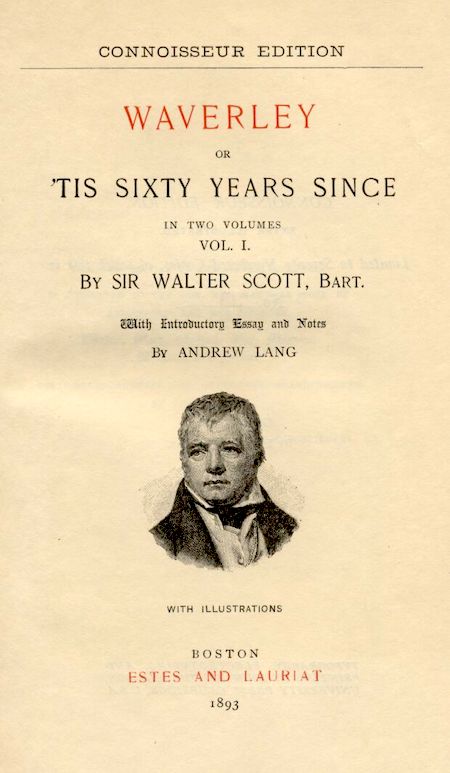
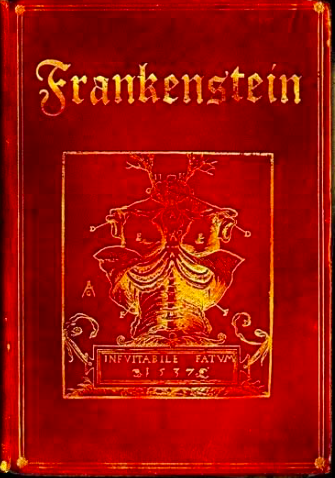
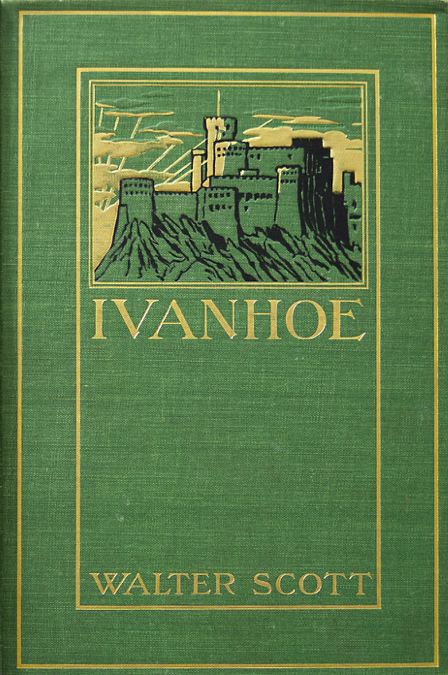
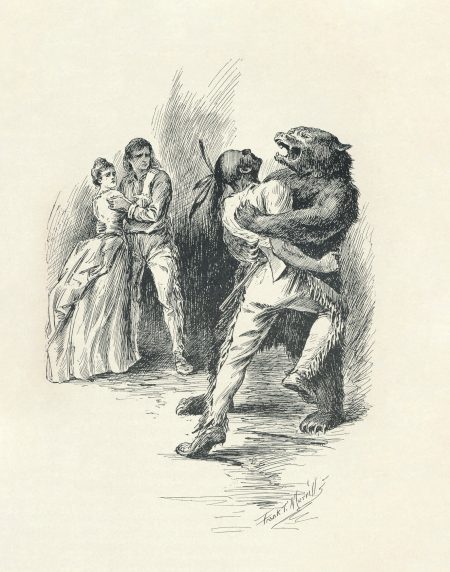
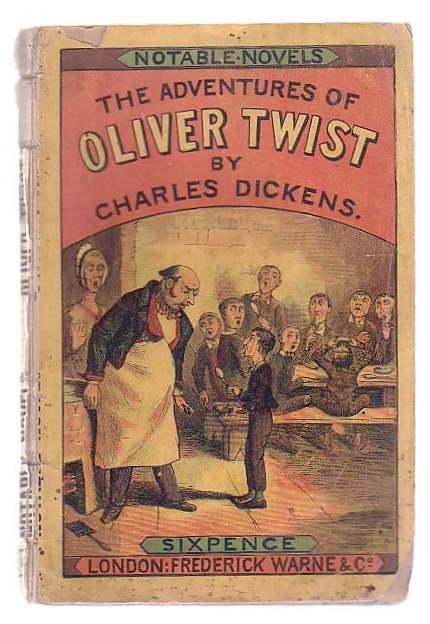

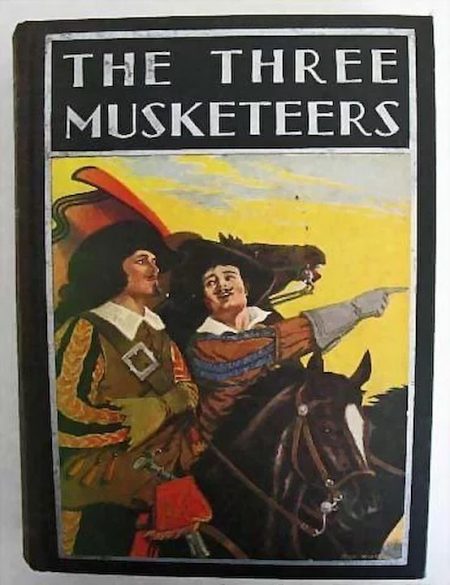
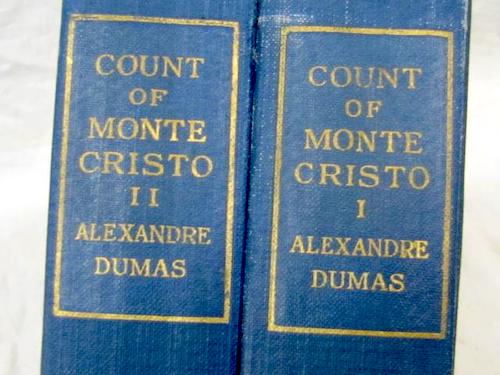
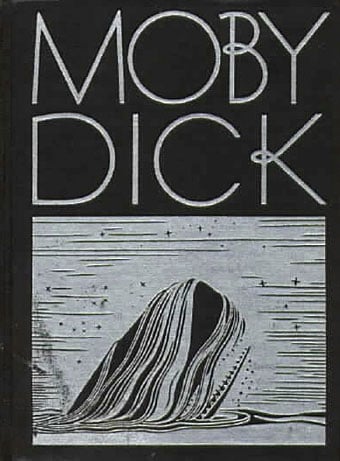
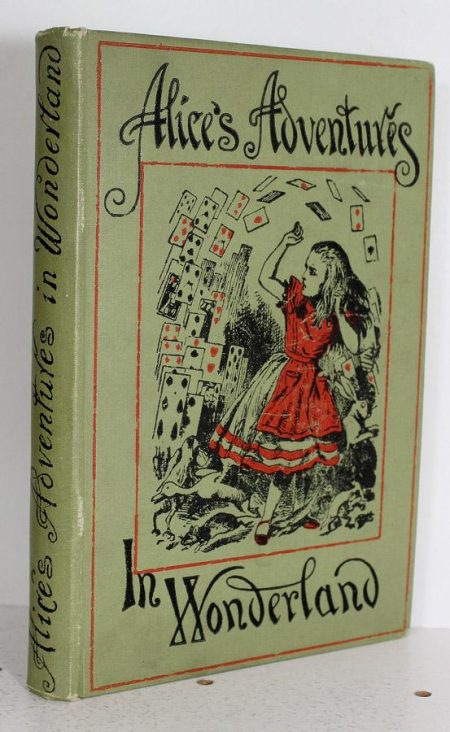
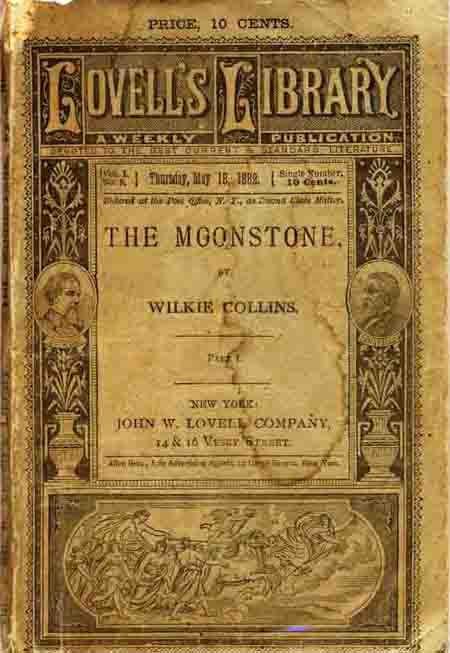
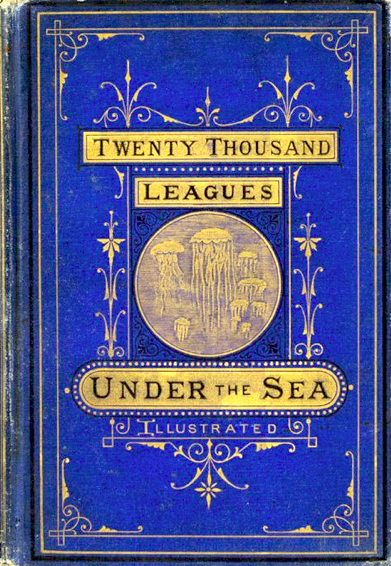
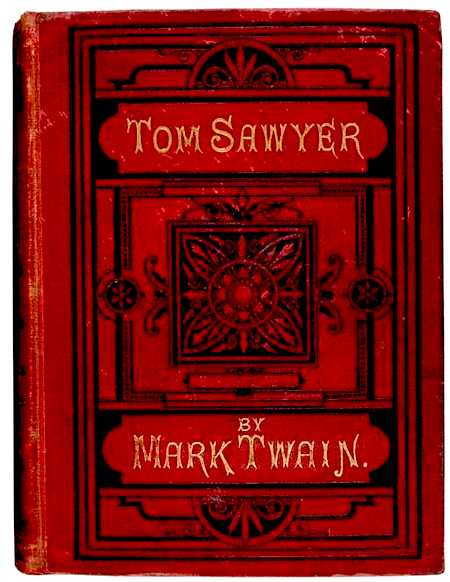
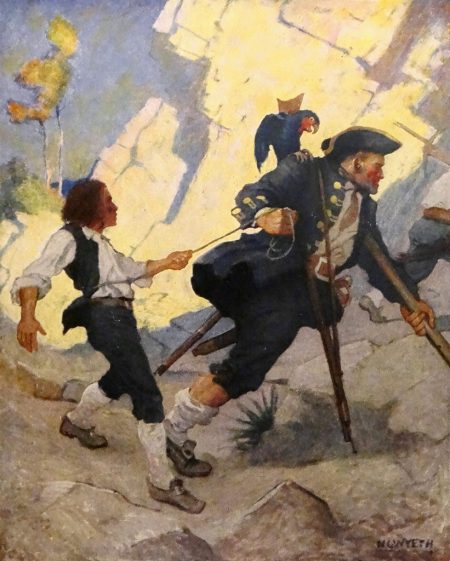
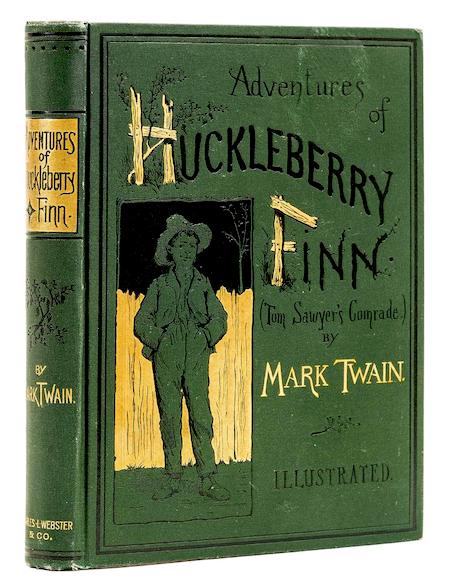
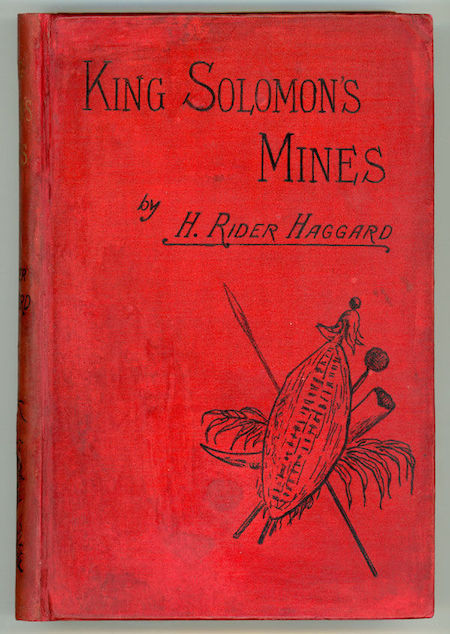
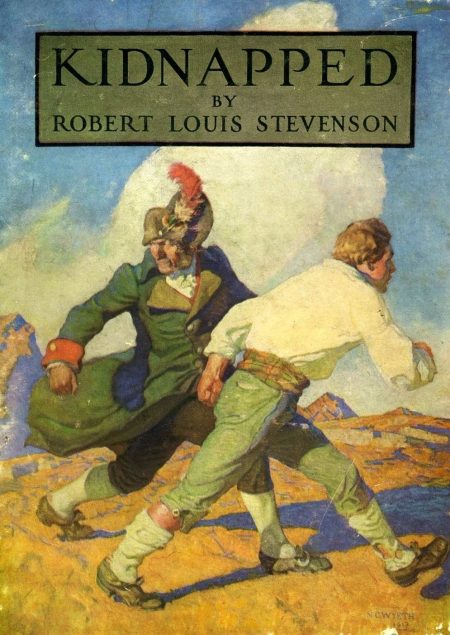
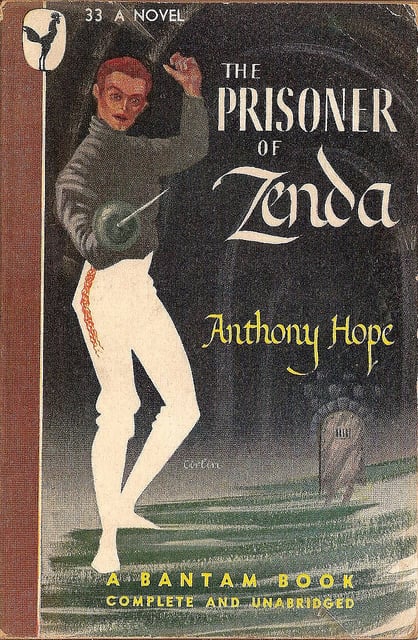
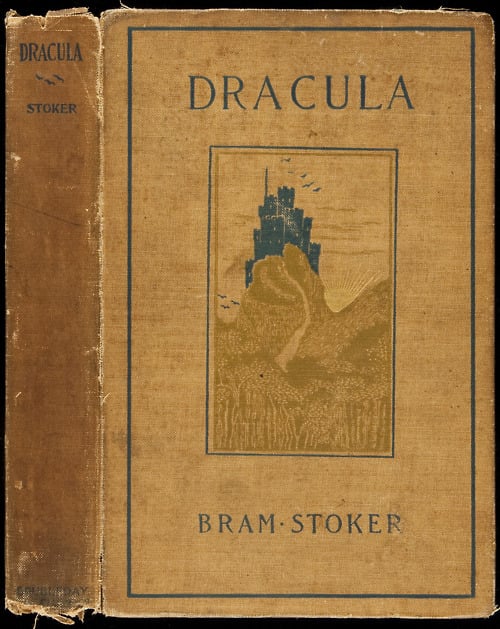
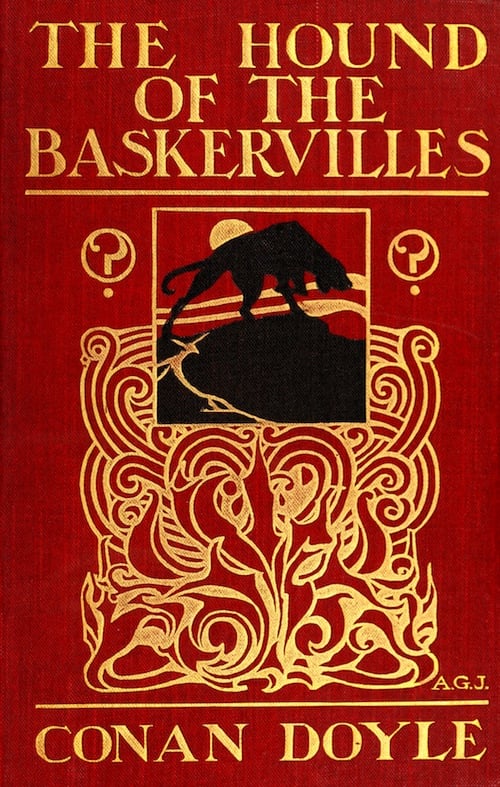
ALSO SEE: 100 BEST ADVENTURES OF THE OUGHTS (1904–1913)
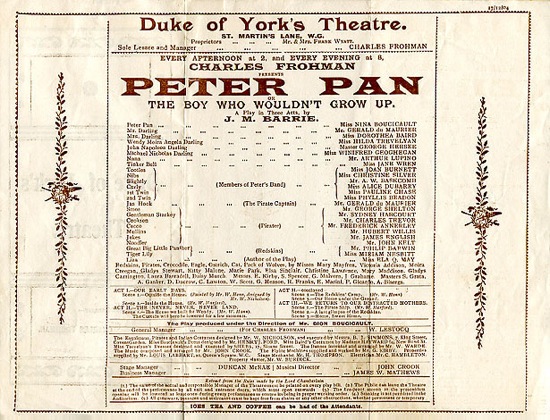
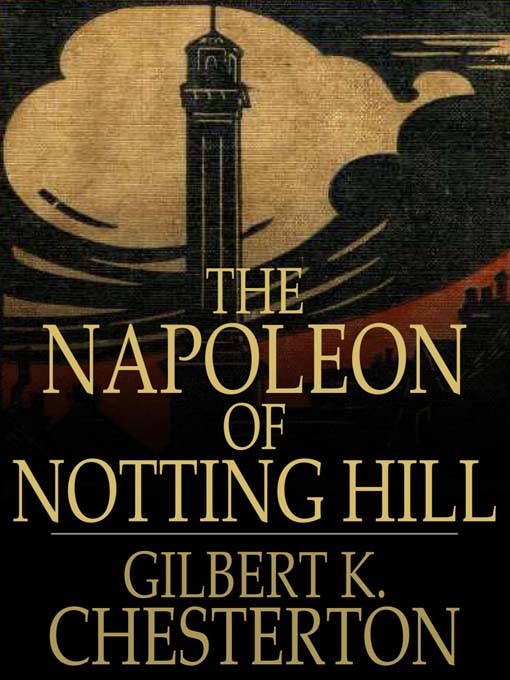
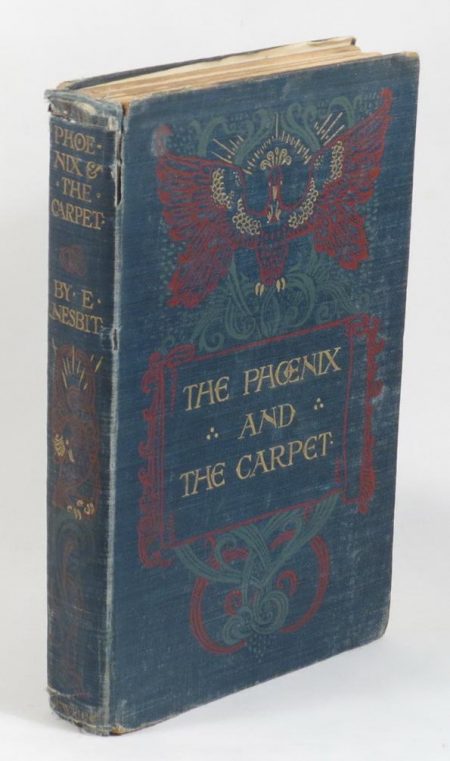
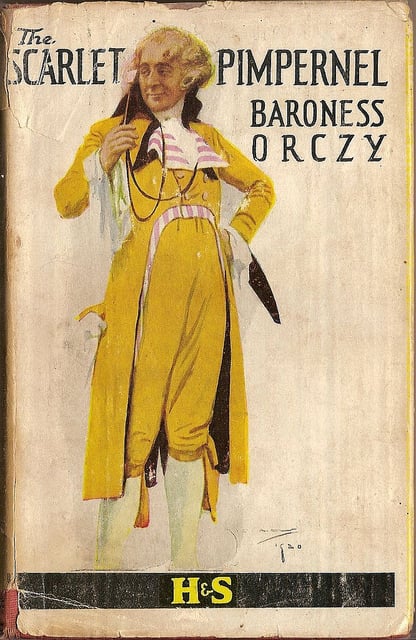
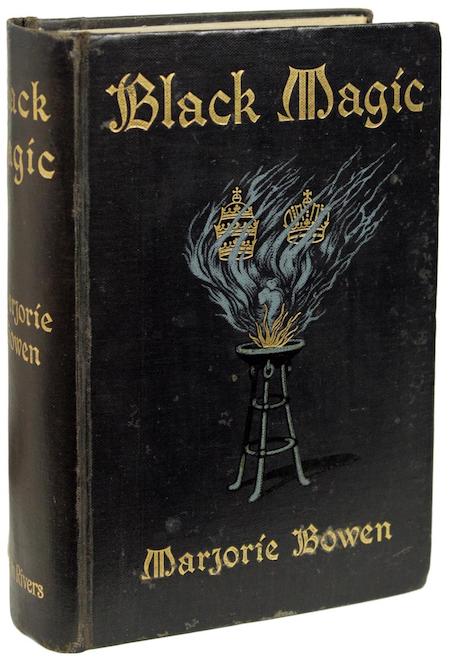

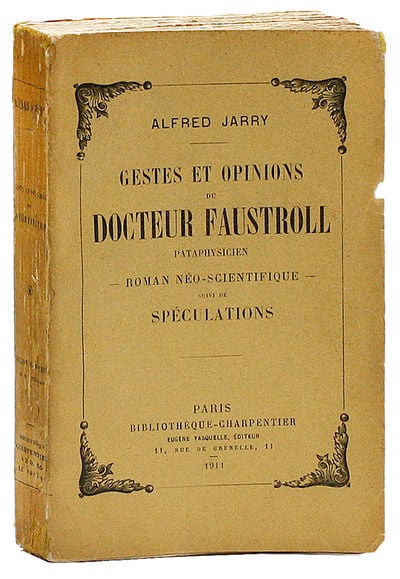
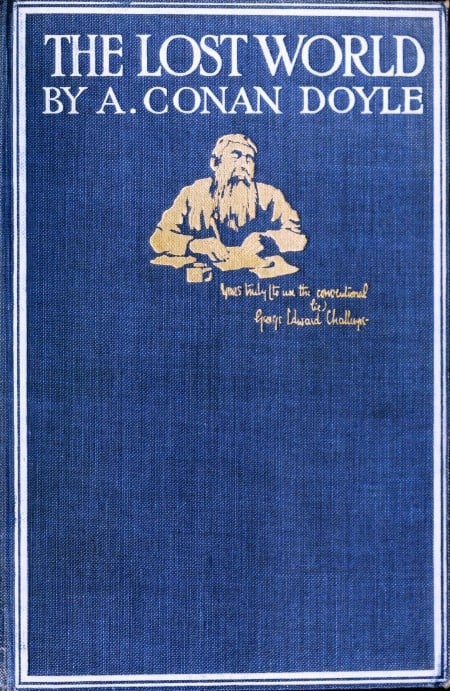
ALSO SEE: 100 BEST ADVENTURES OF THE TEENS (1914–1923)

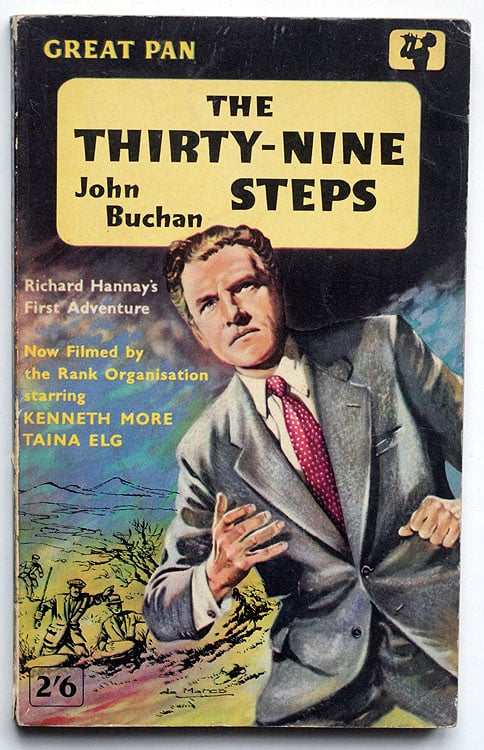
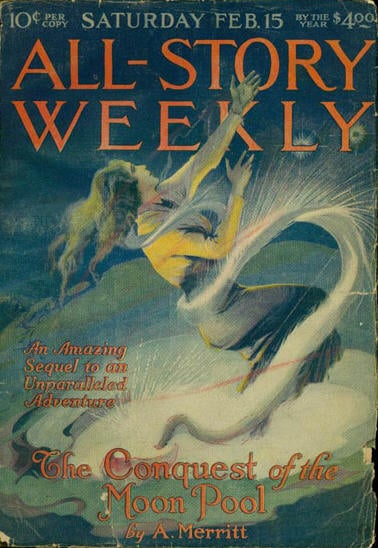
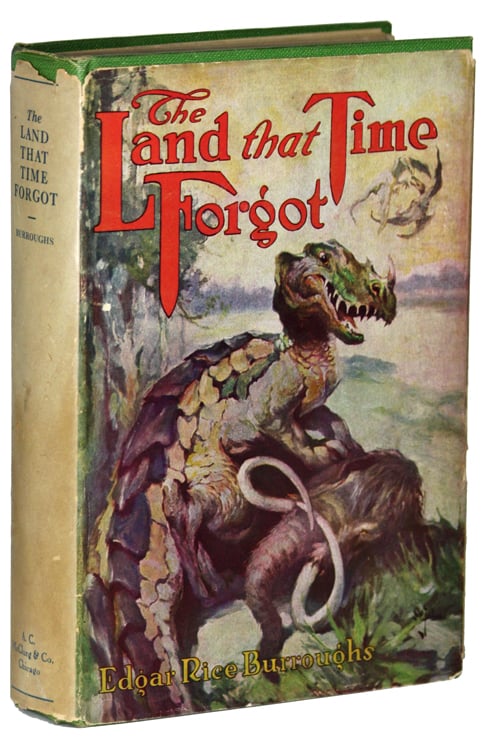
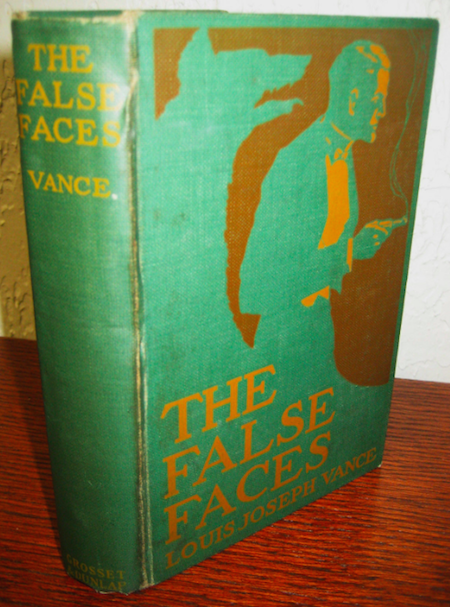
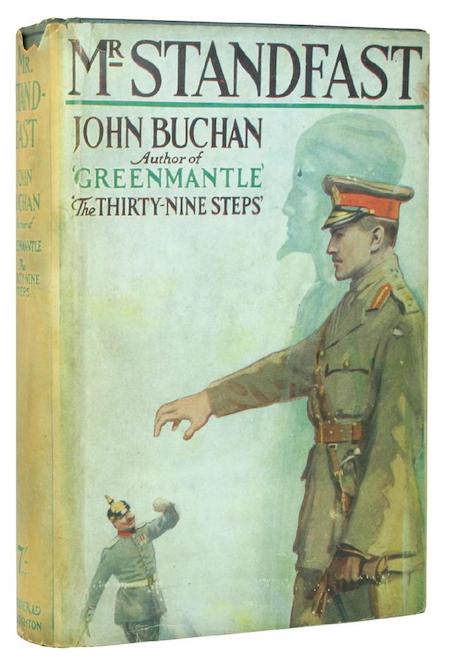
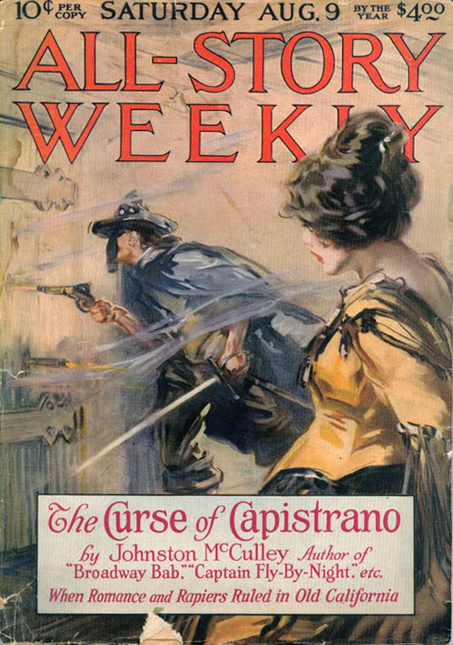
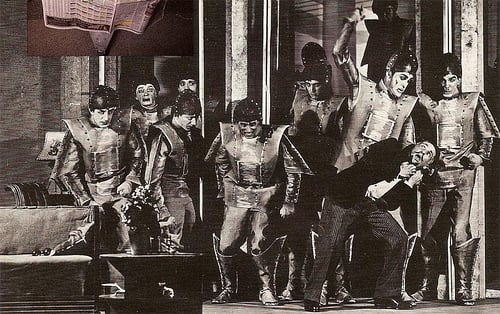
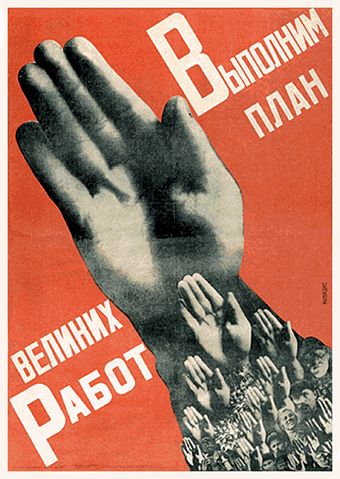
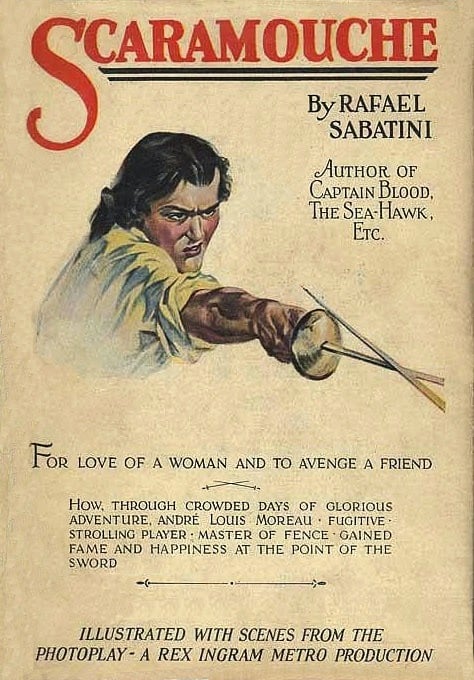
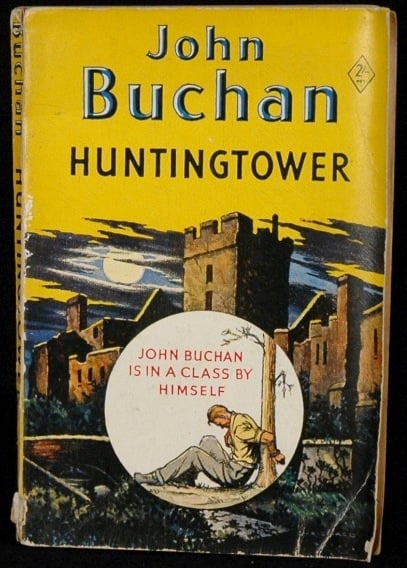
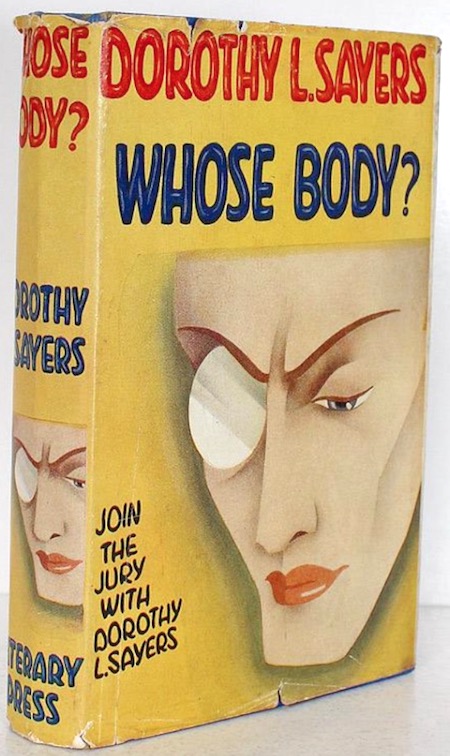
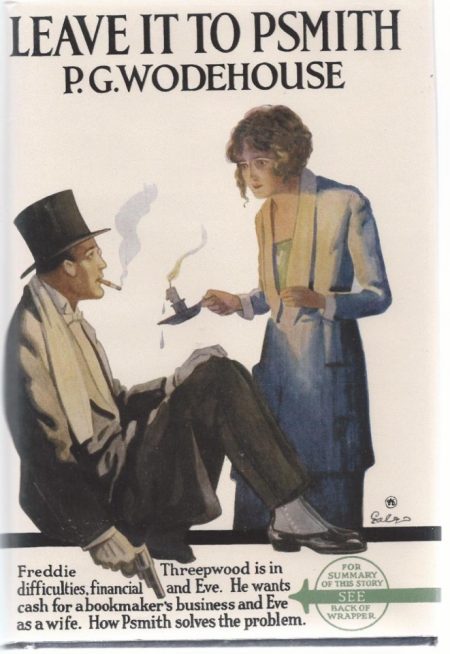
ALSO SEE: 100 BEST ADVENTURES OF THE TWENTIES (1924–1933)
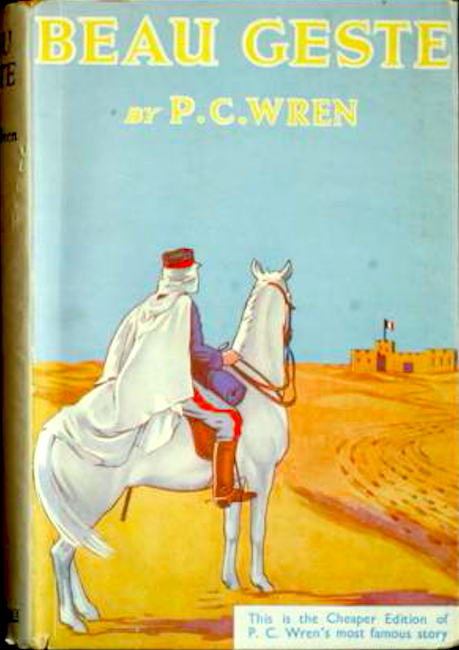
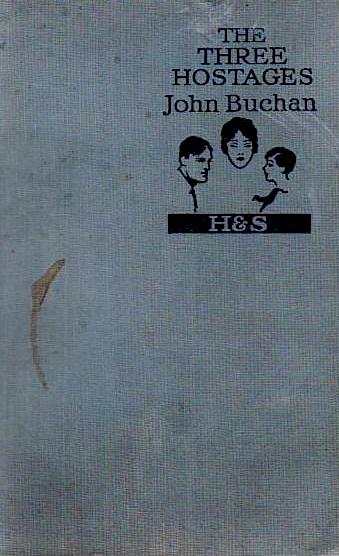
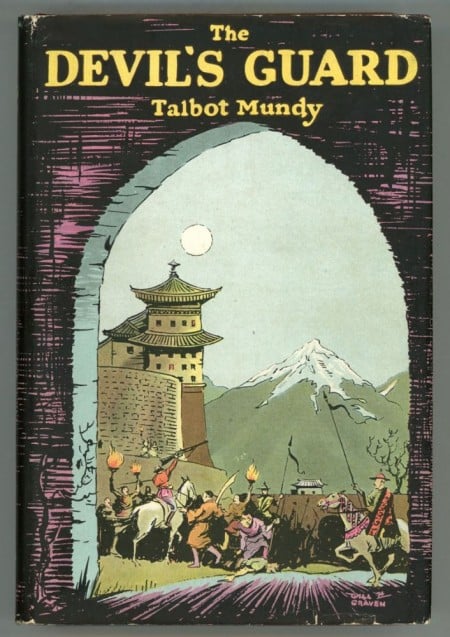
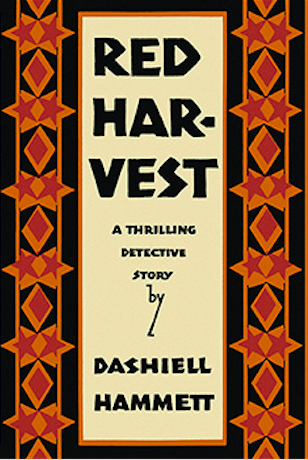
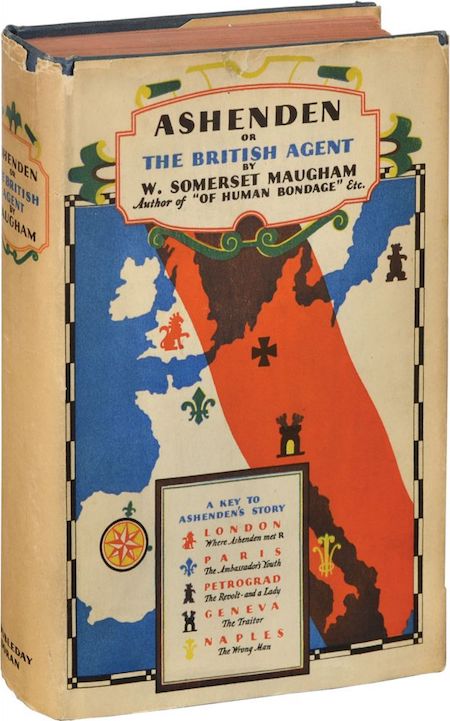
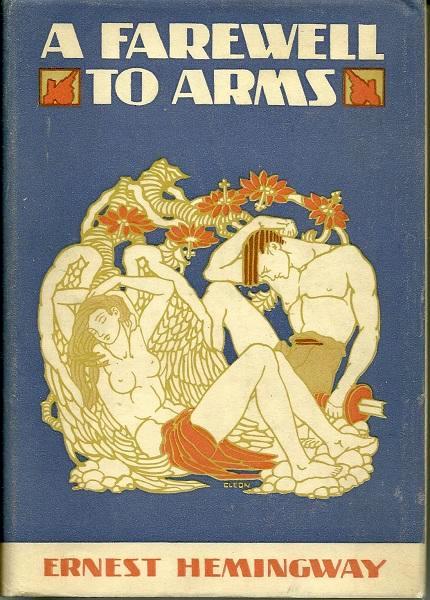
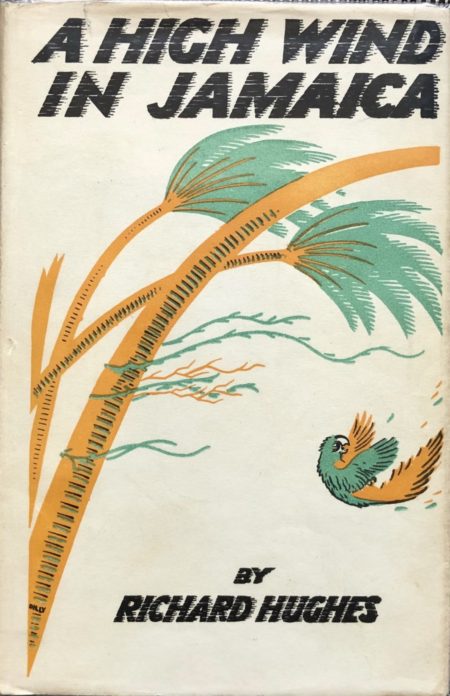

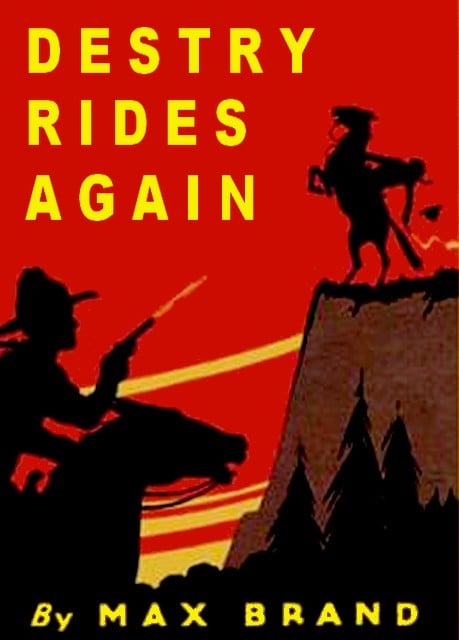
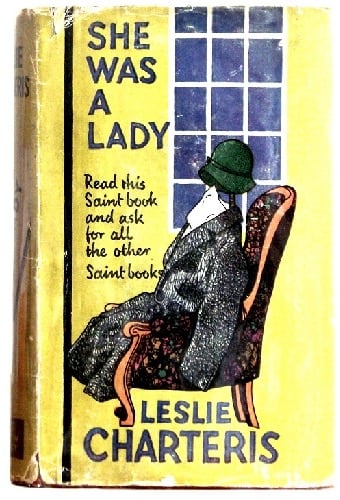
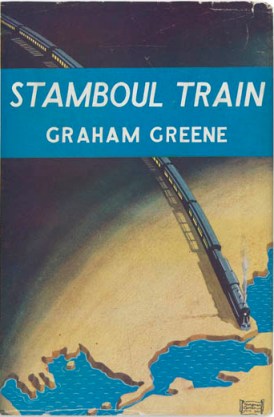
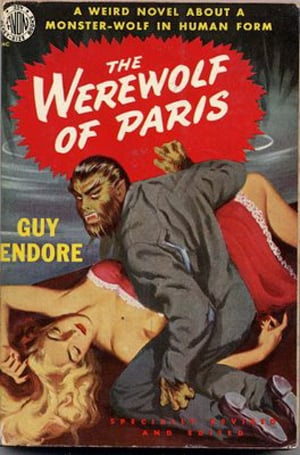
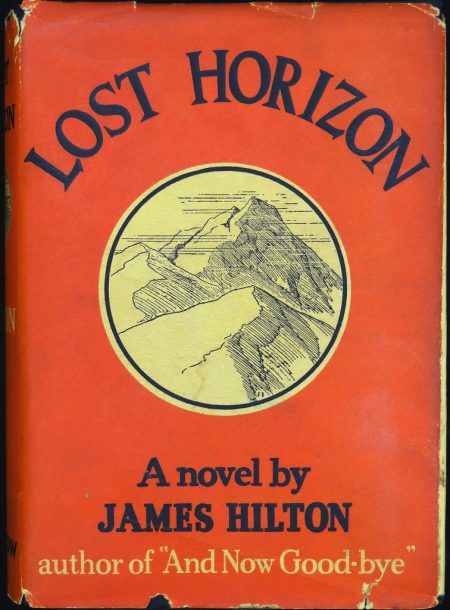
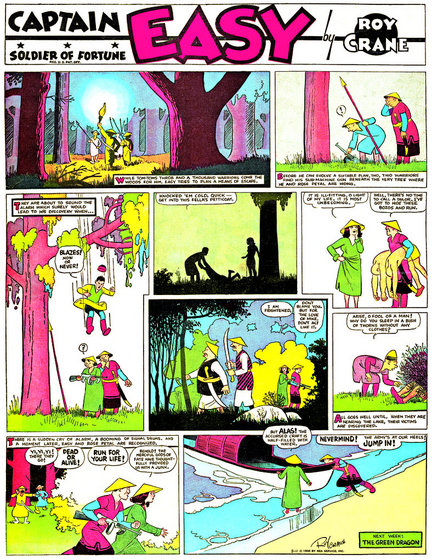
ALSO SEE: 100 BEST ADVENTURES OF THE THIRTIES (1934–1943)
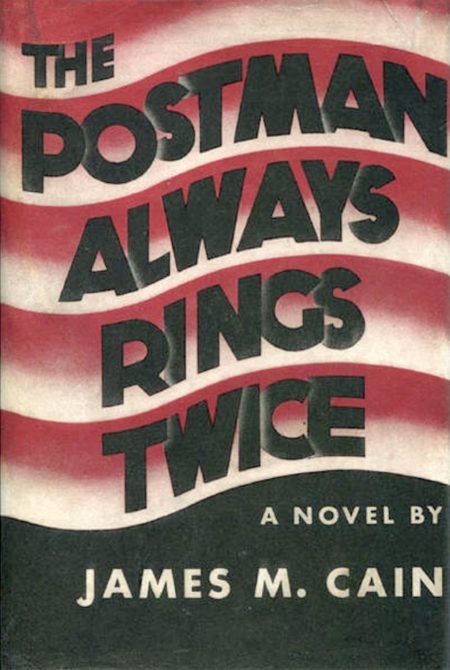
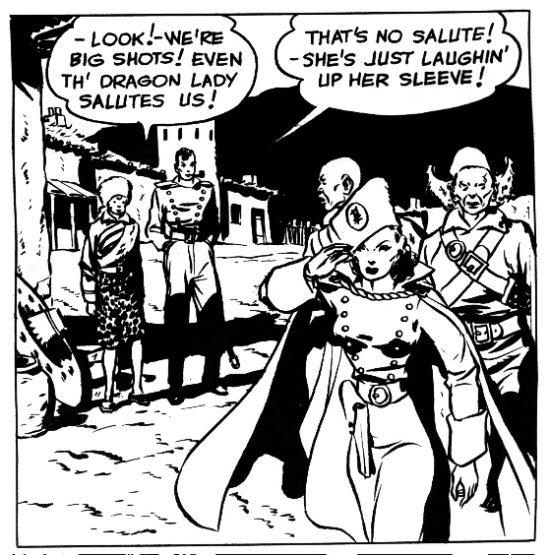
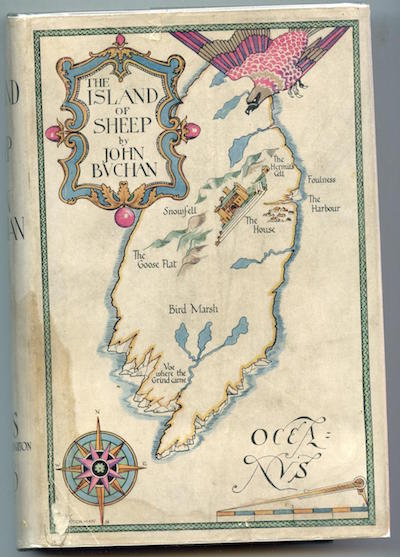
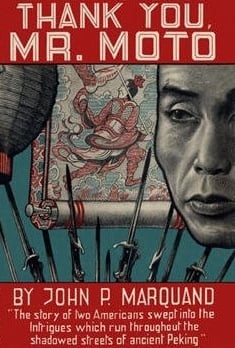
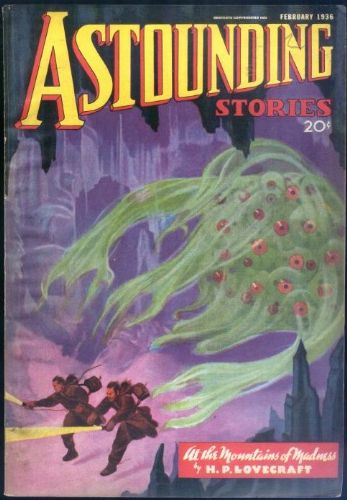
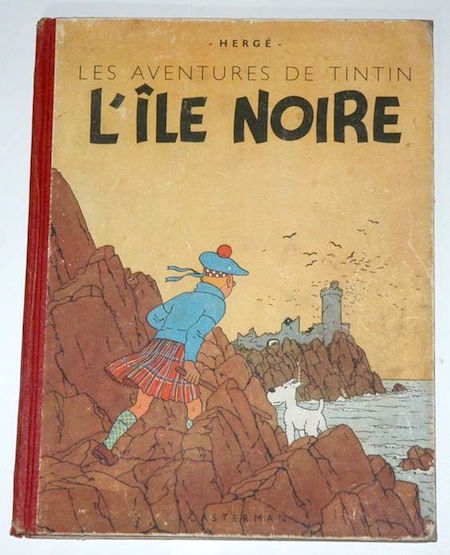

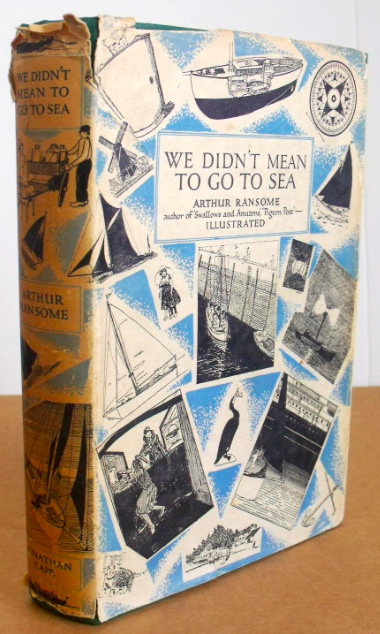
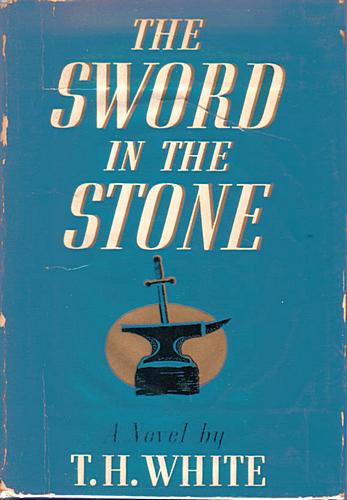
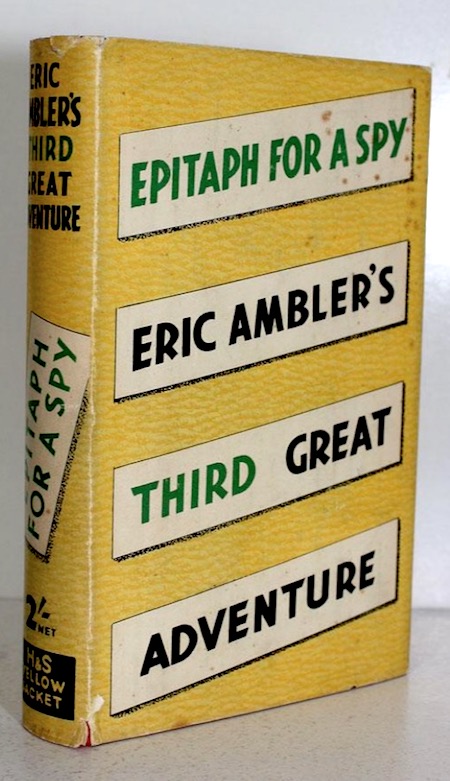
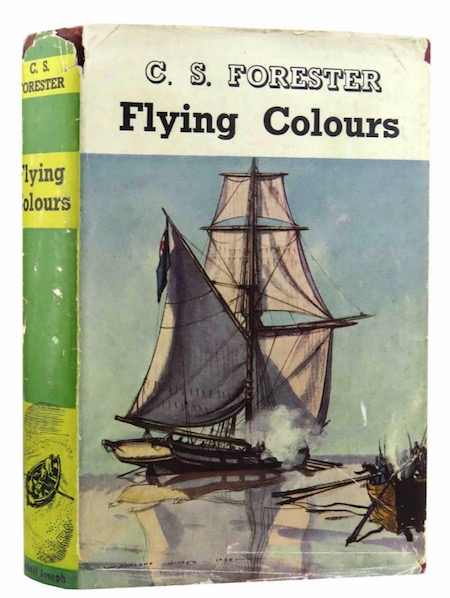


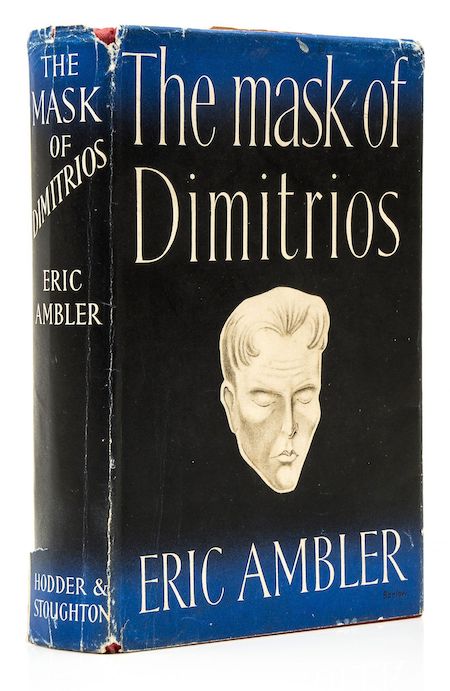
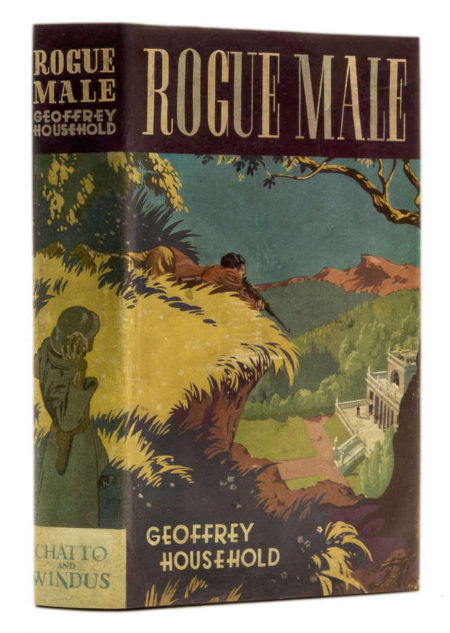
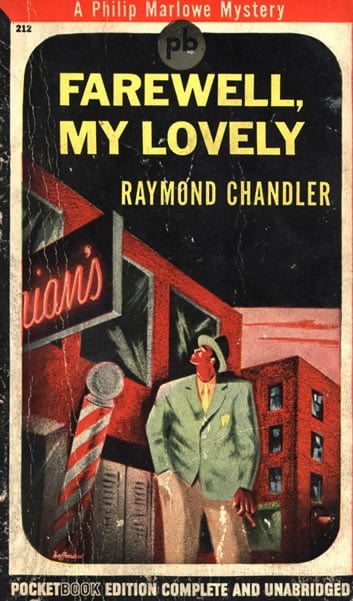
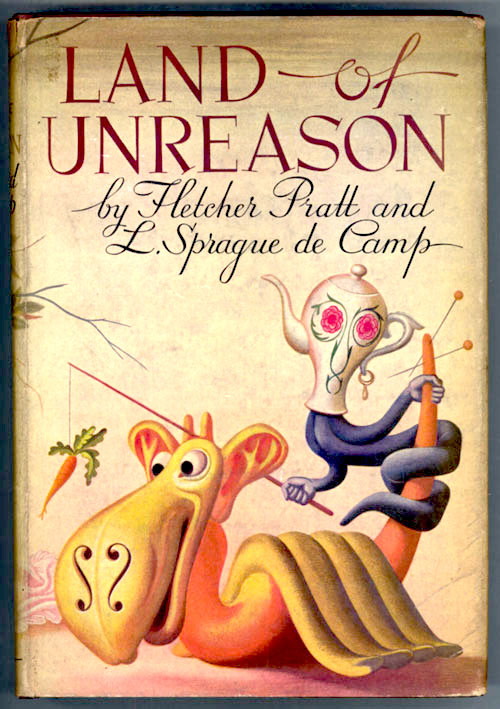
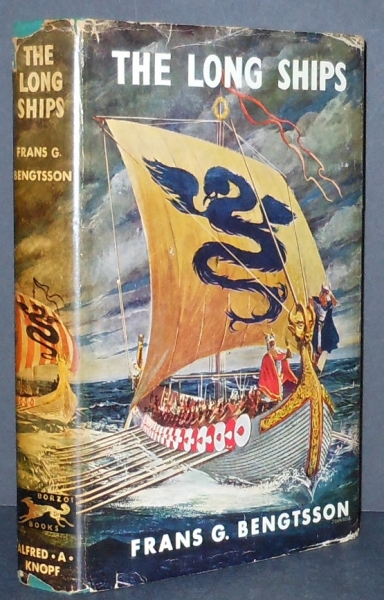
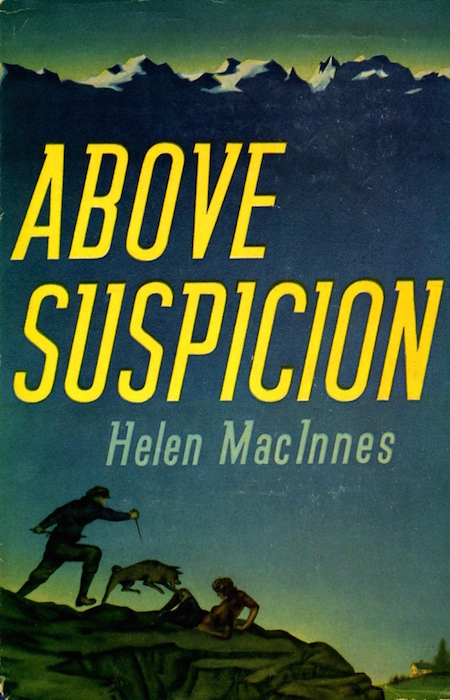
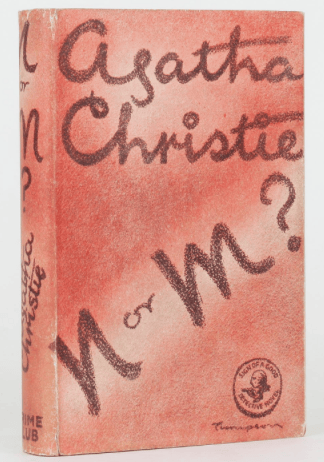
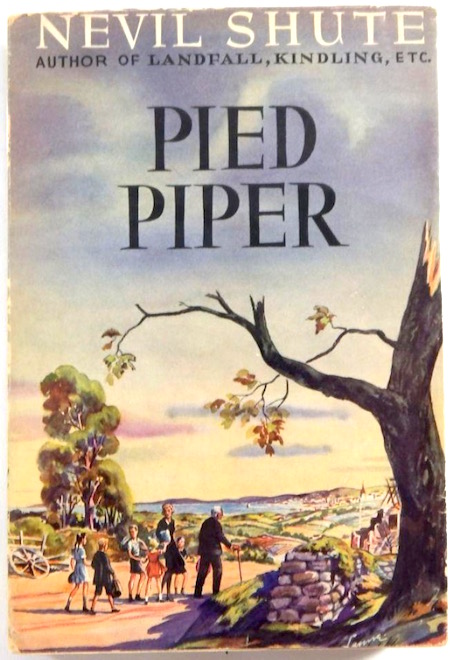
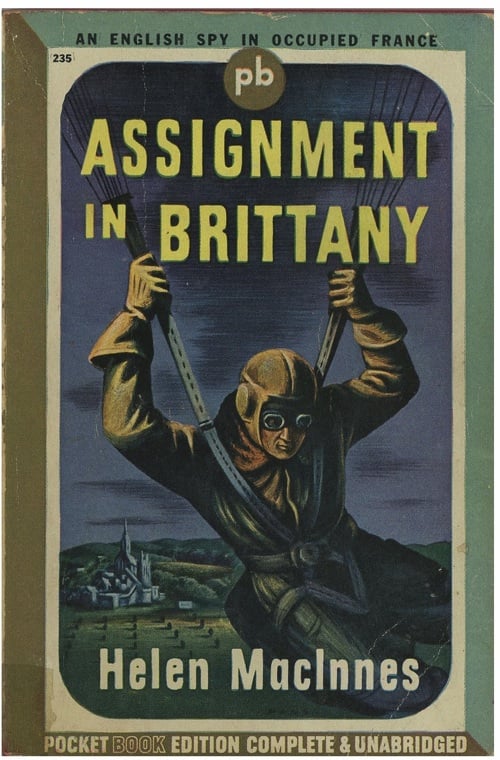

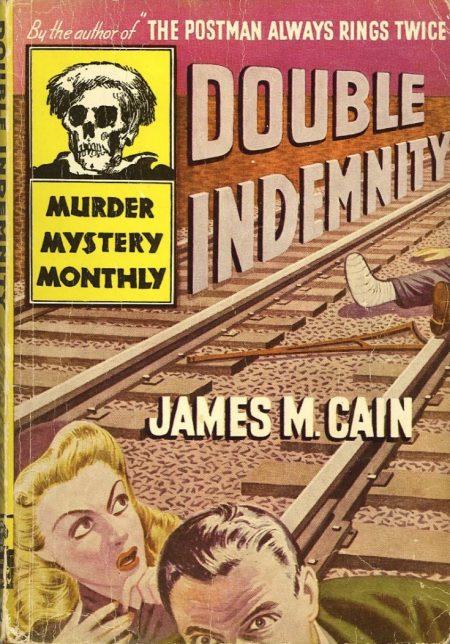
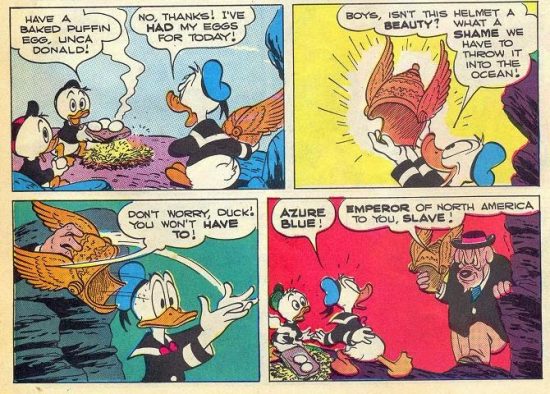
ALSO SEE: 100 BEST ADVENTURES OF THE FORTIES (1944–1953)
I must mention the 1945 collection The Pocket Book of Adventure Stories, edited by Philip Van Doren Stern. I’ve read it many times. Stories include: Hemingway’s “Fifty Grand,” Steinbeck’s “Flight,” Somerset Maugham’s “Red,” Richard Connell’s “The Most Dangerous Game,” and other classics.
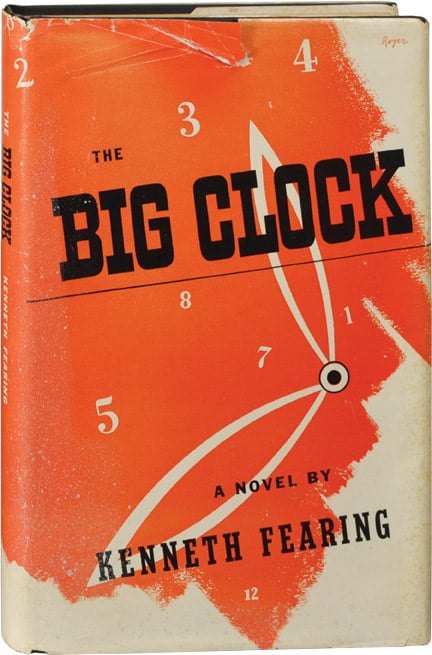
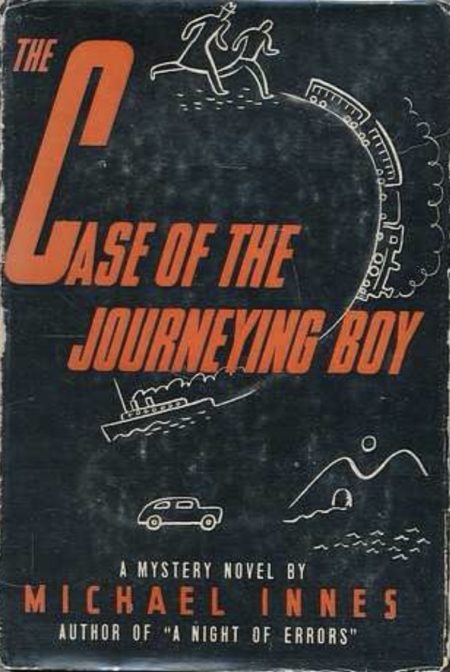
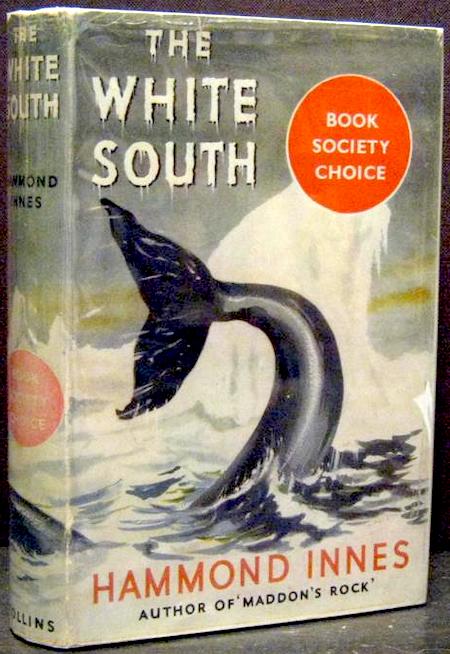
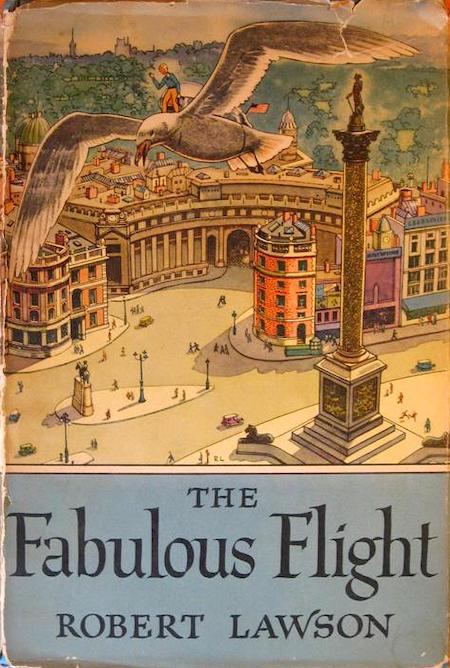

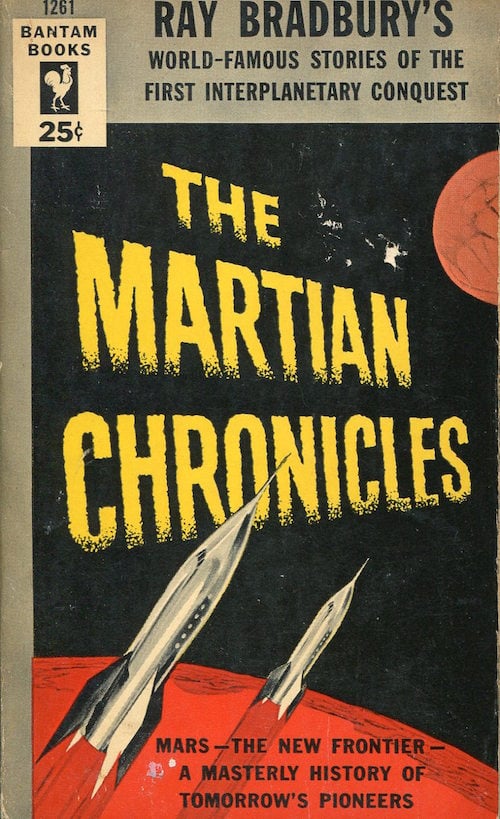
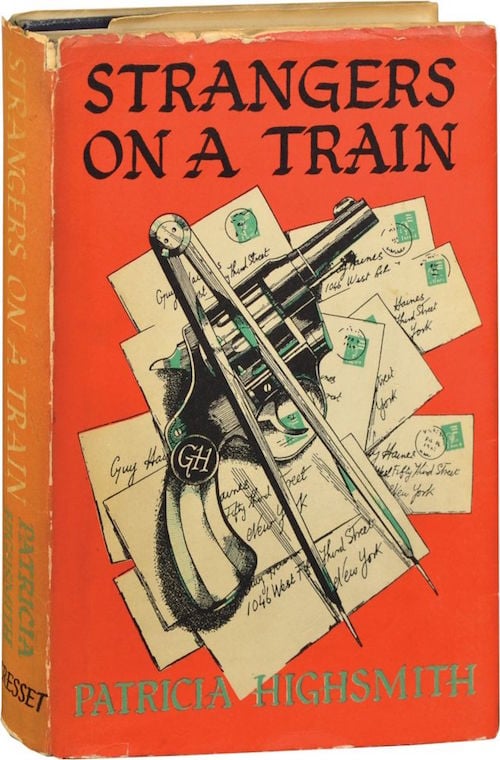
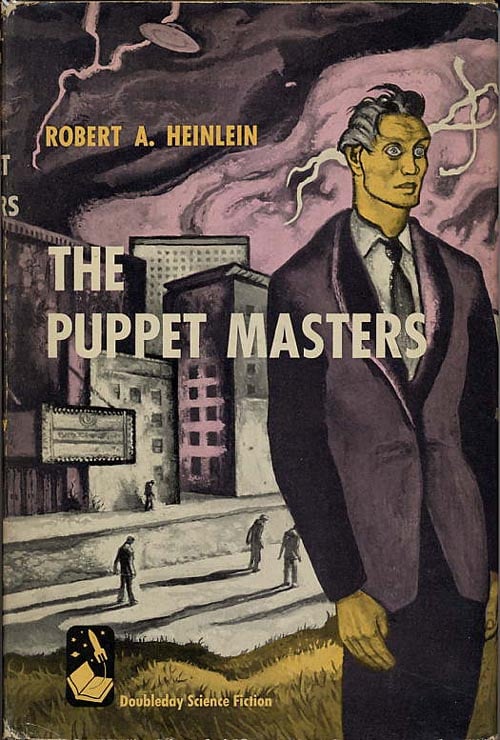
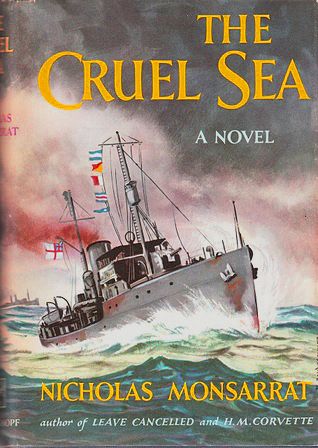
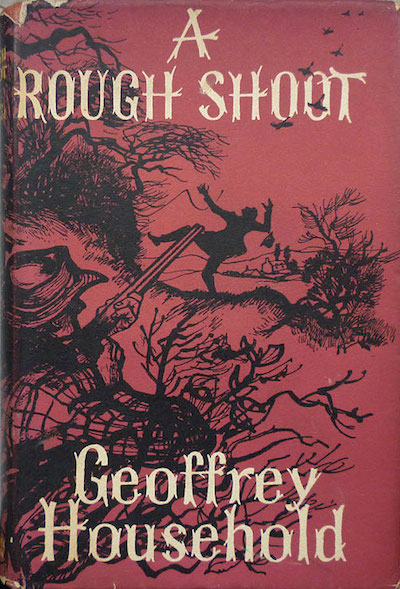
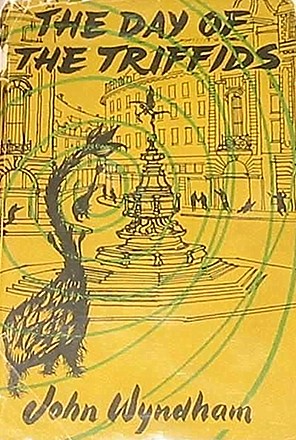
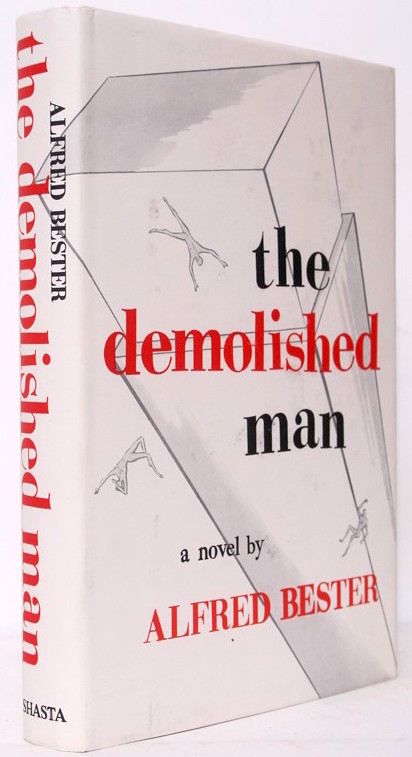
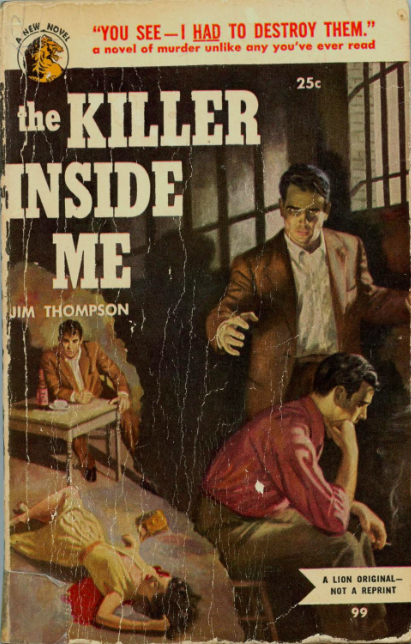
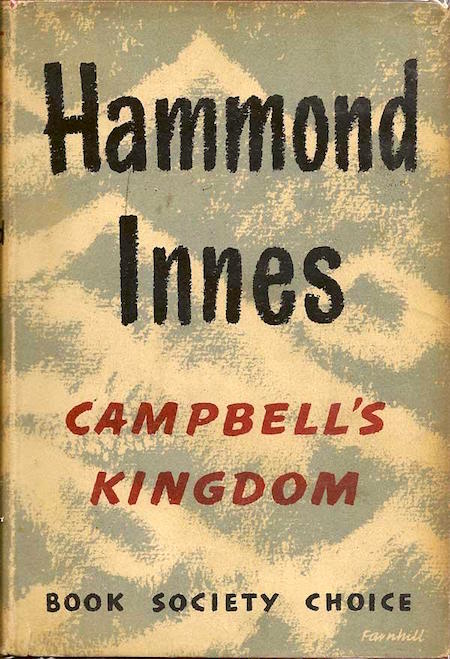
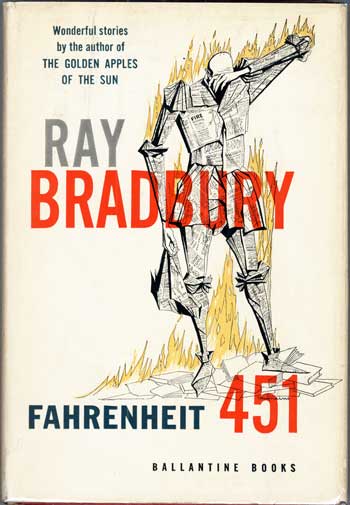


ALSO SEE: 100 BEST ADVENTURES OF THE FIFTIES (1954–1963)
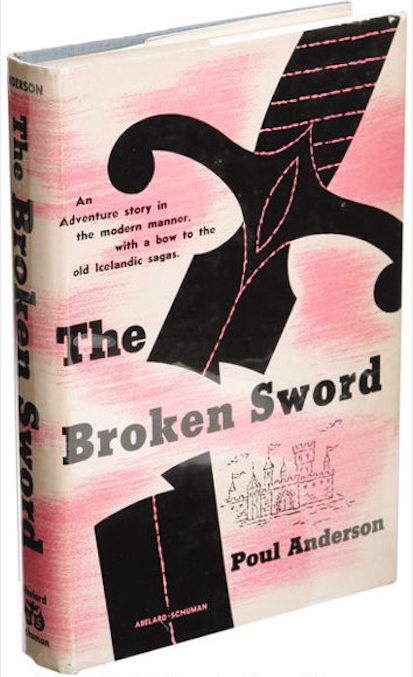
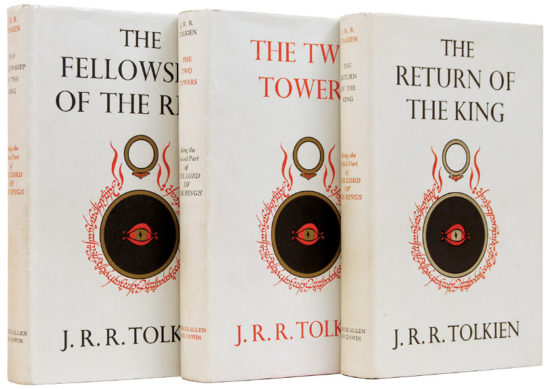
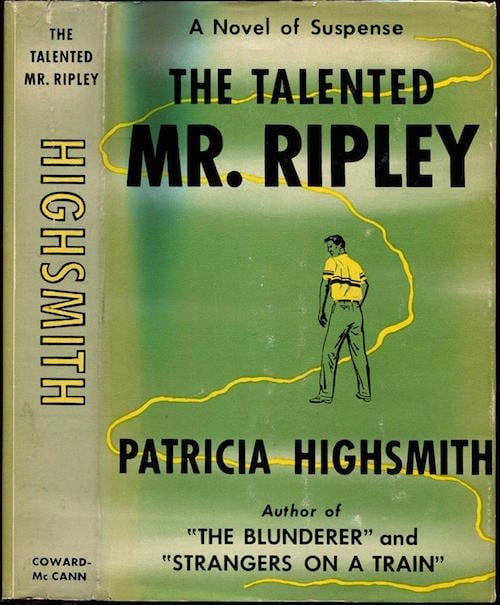
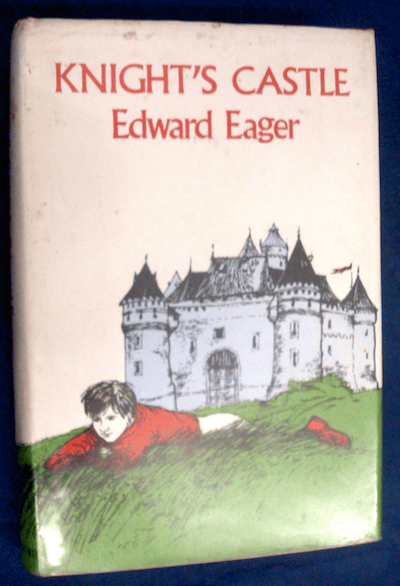
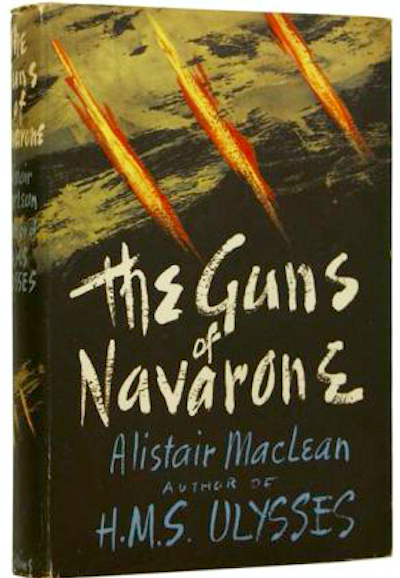
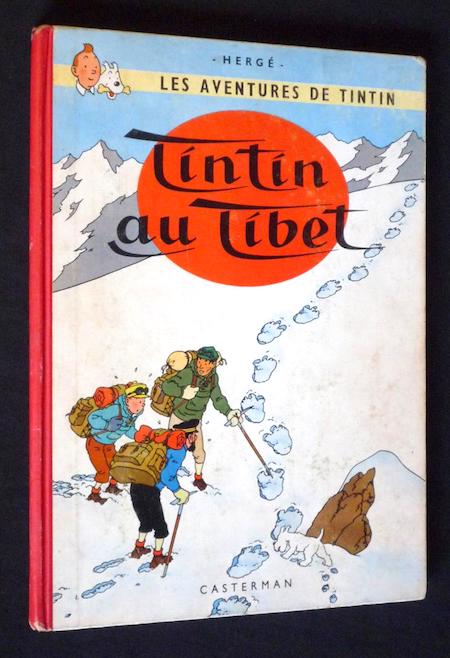
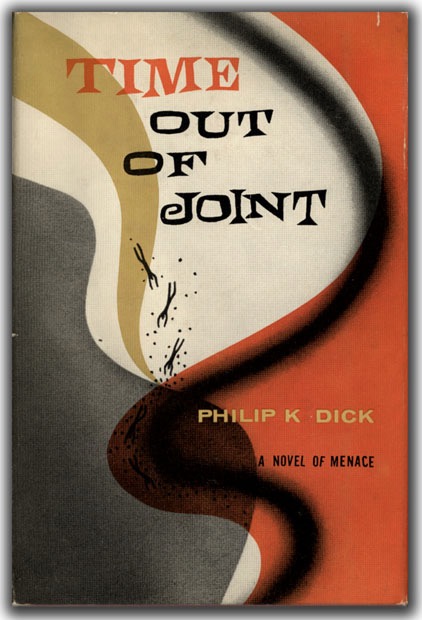
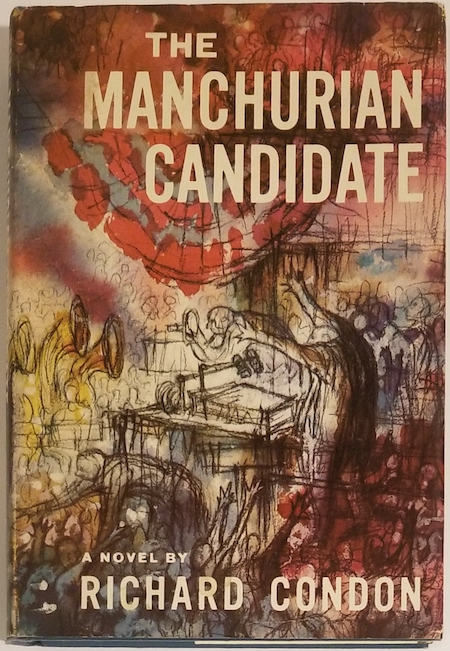
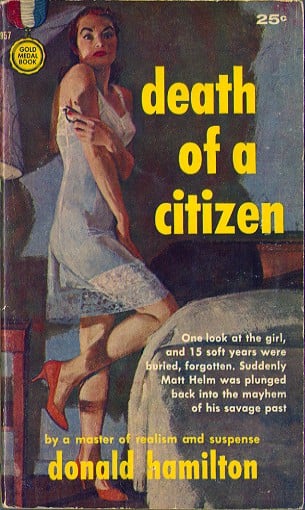
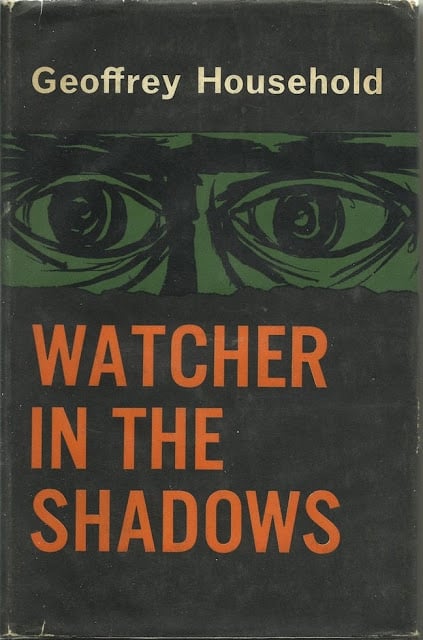
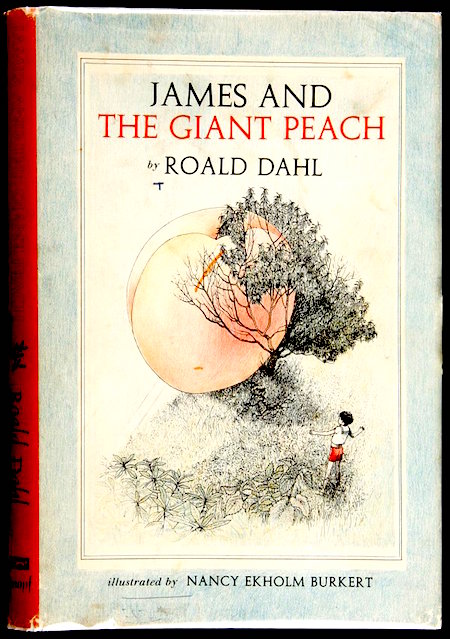
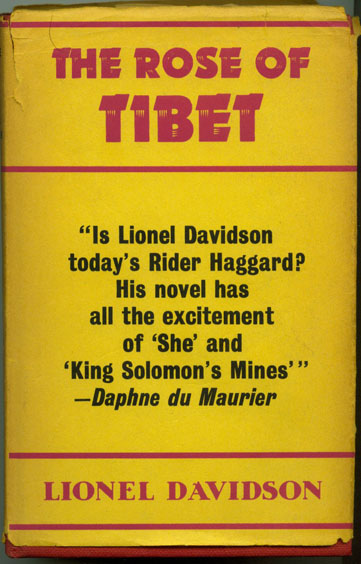


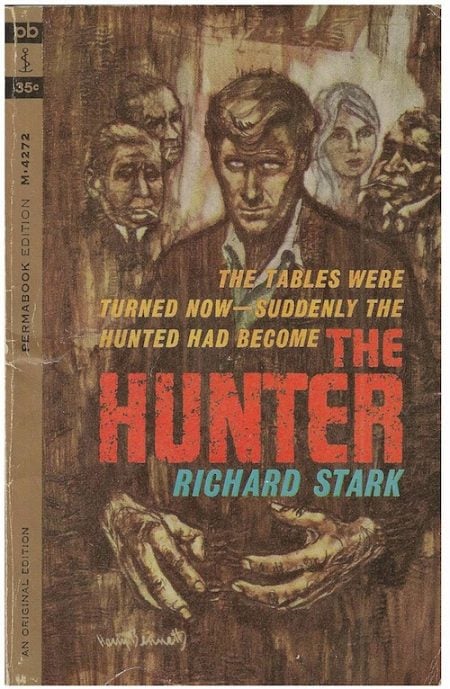
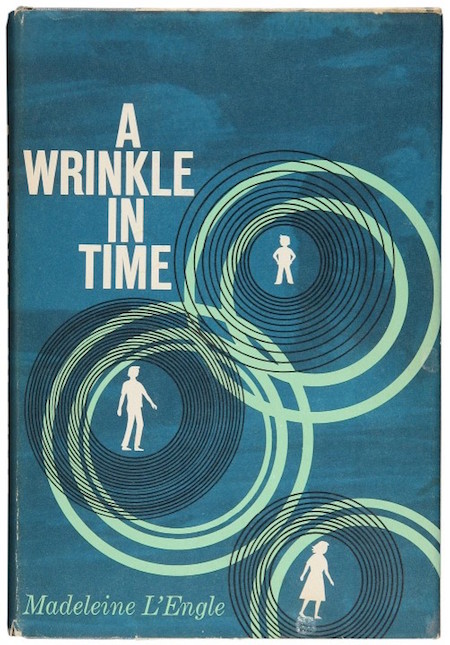
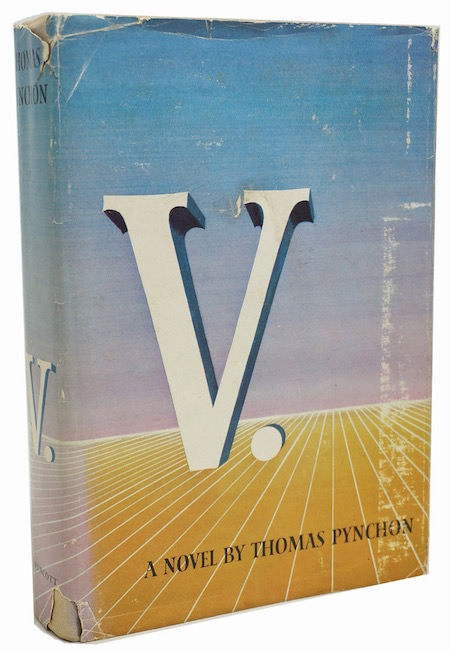
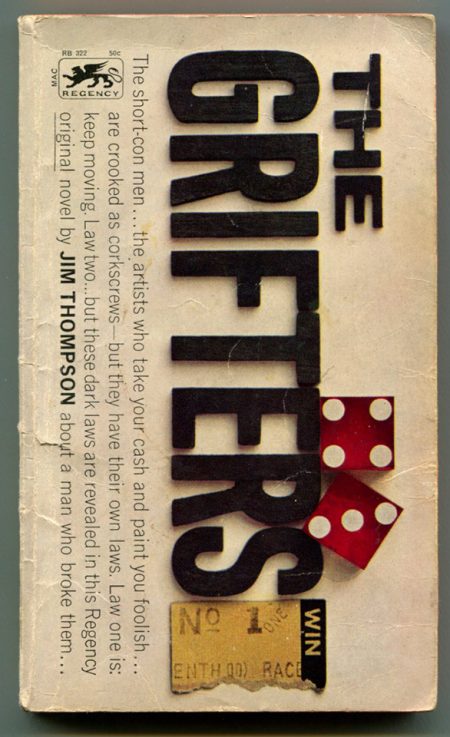
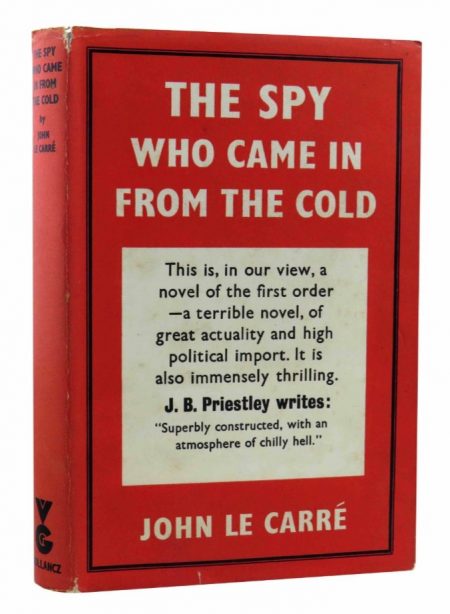
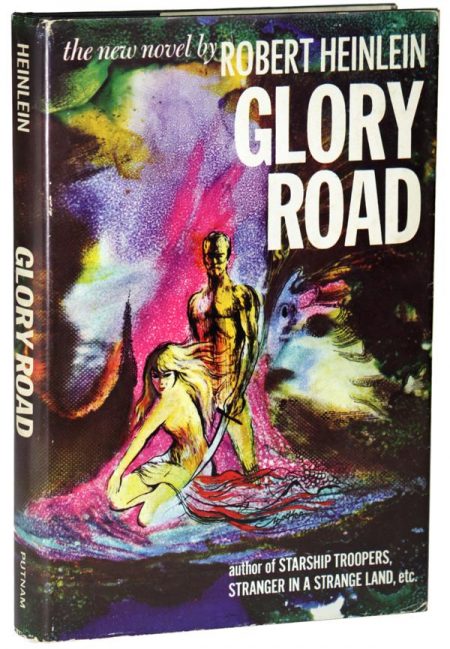
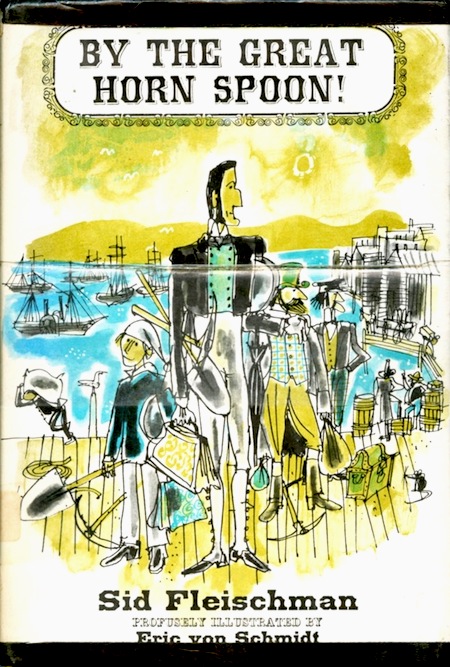
ALSO SEE: 100 BEST ADVENTURES OF THE SIXTIES (1964–1973)
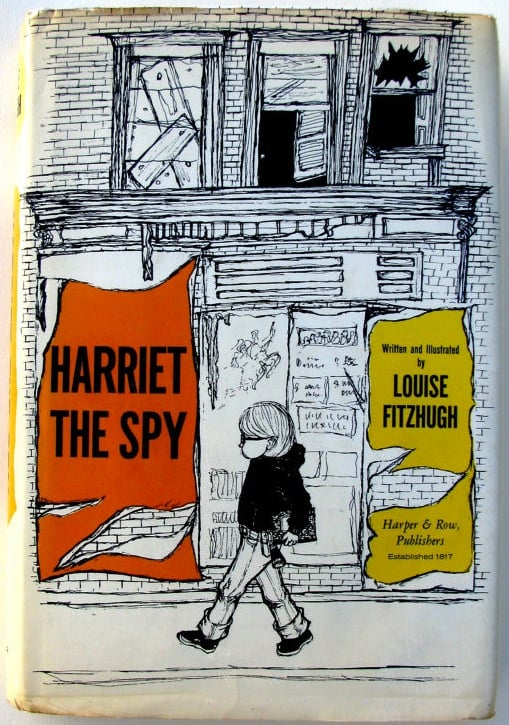
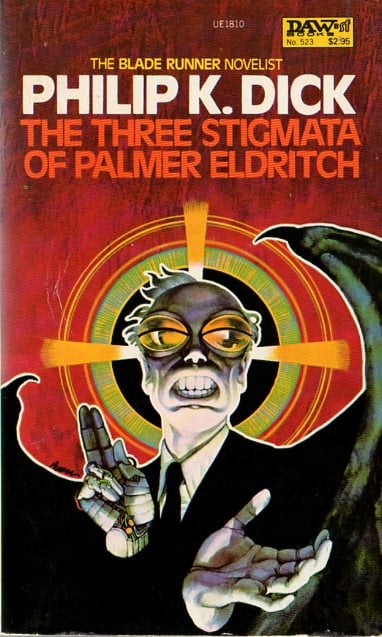
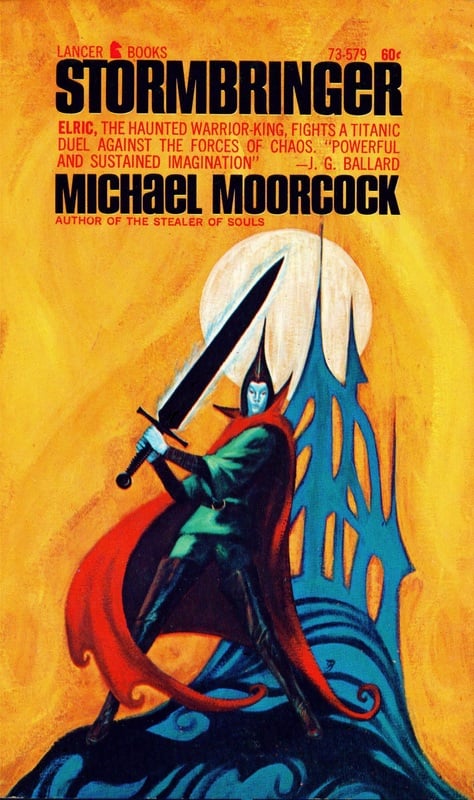

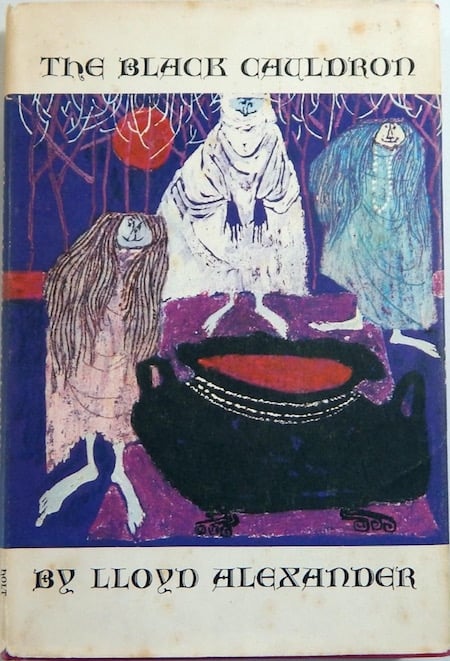
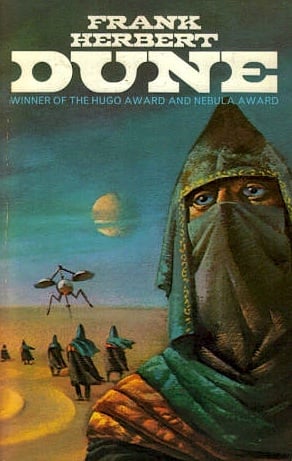
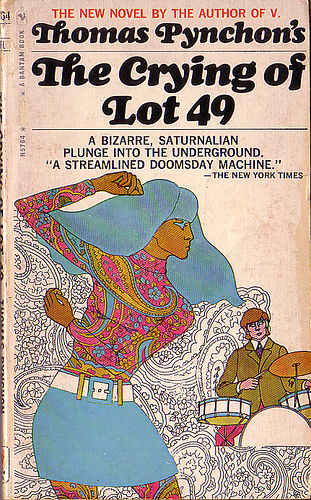


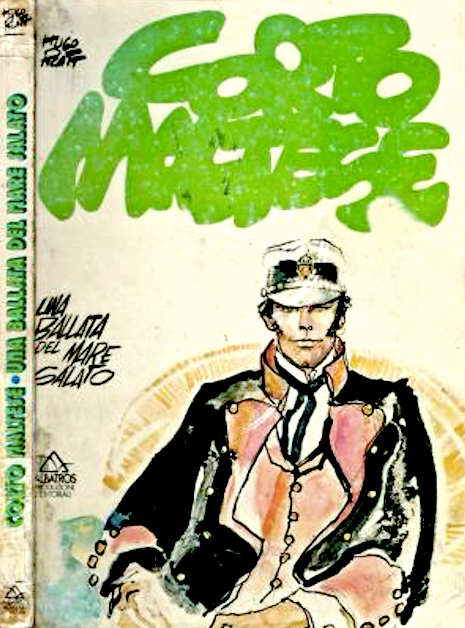
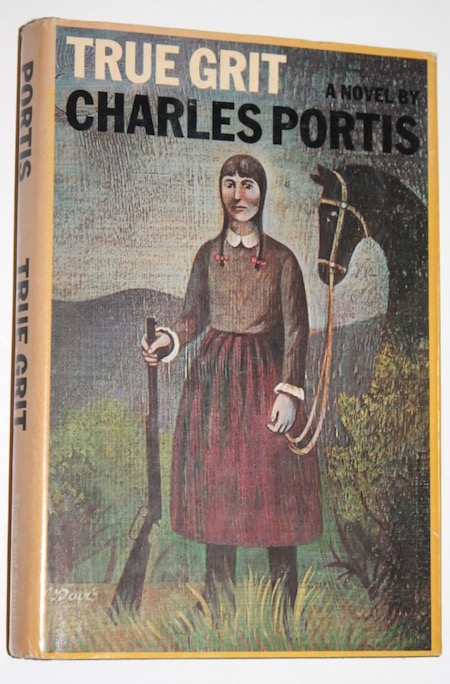

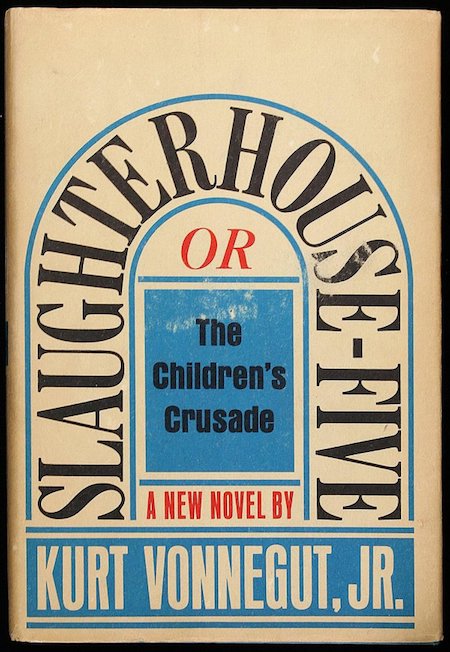
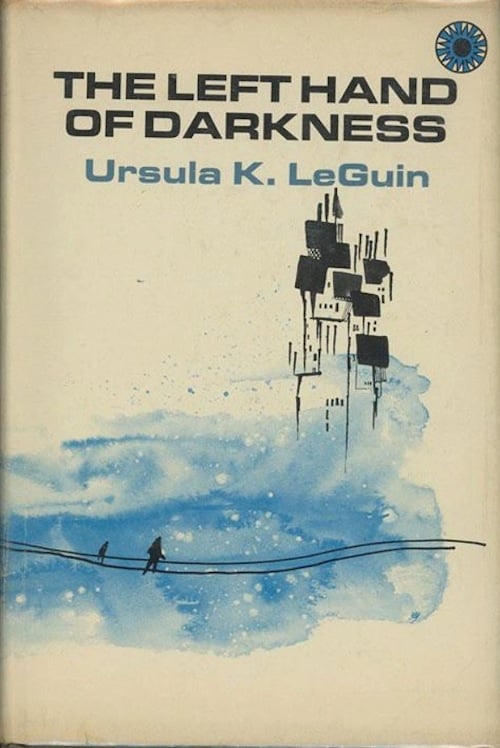

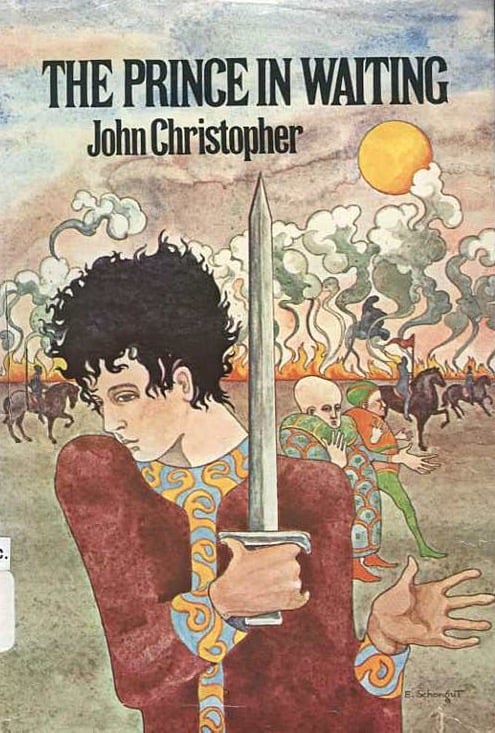
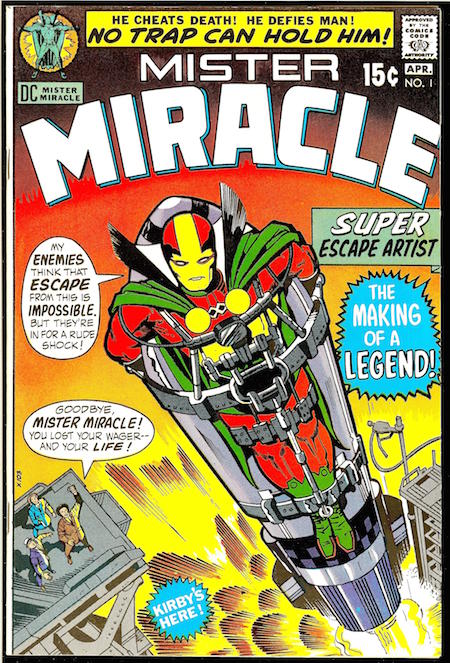
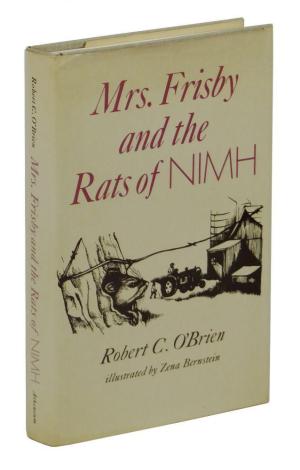

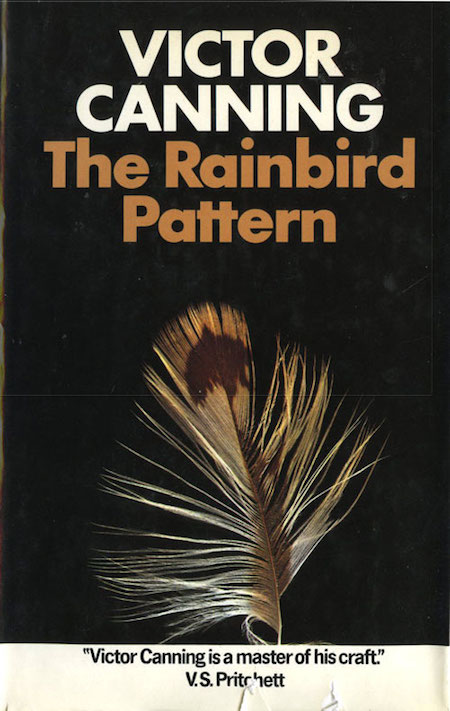
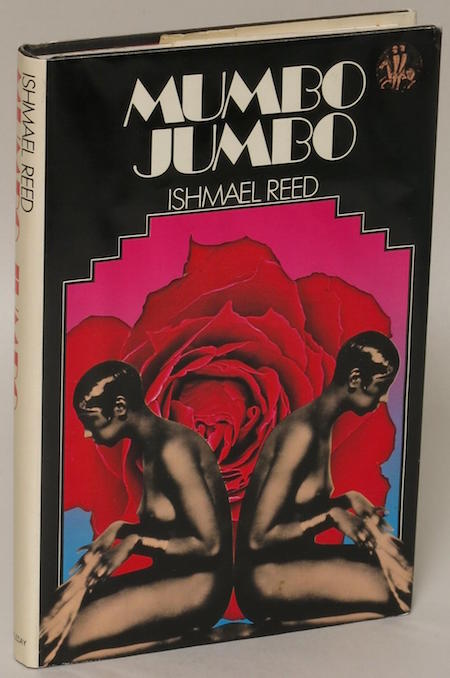
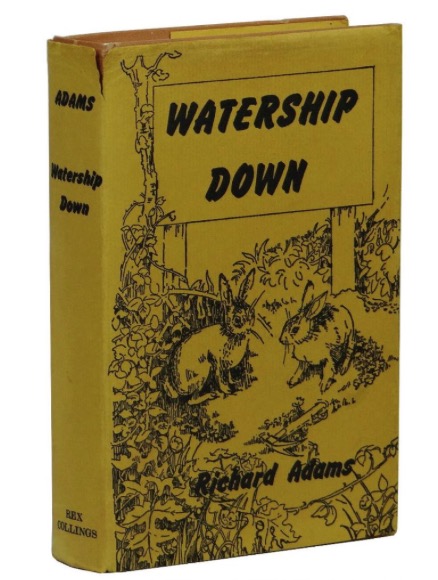
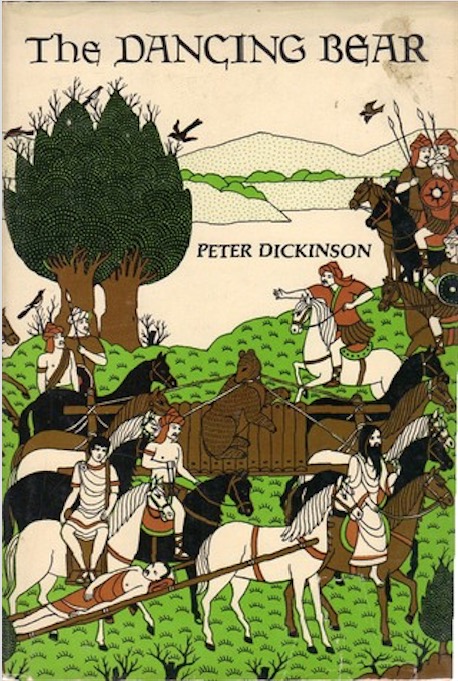
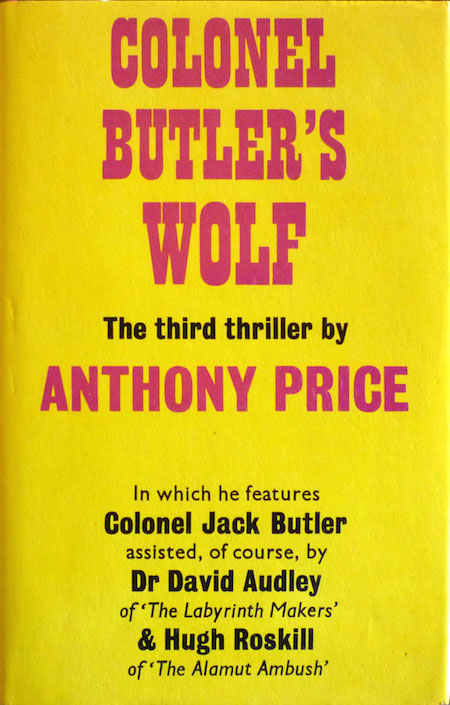
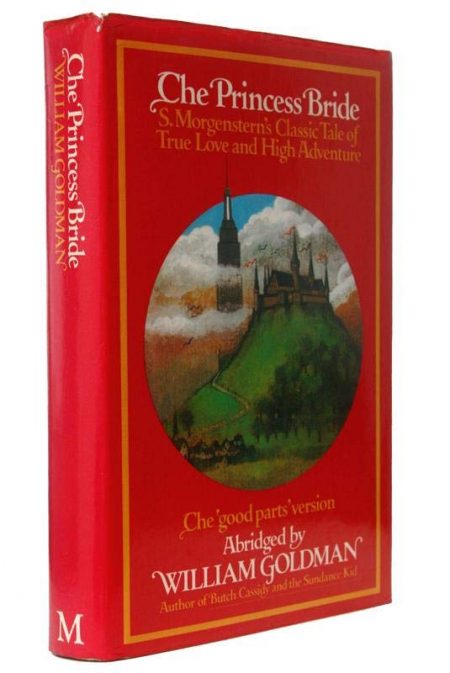
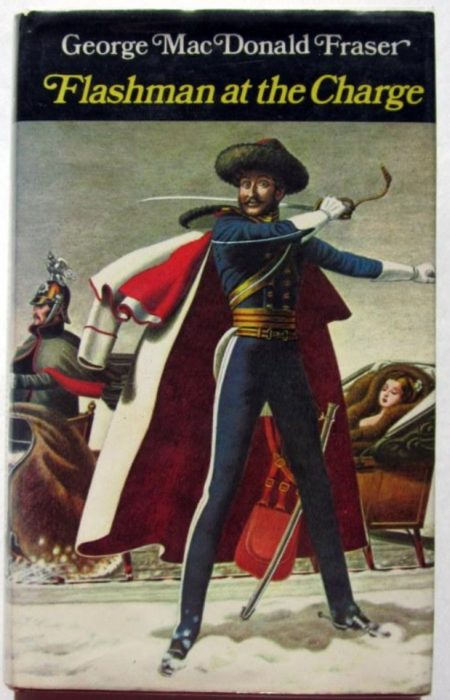
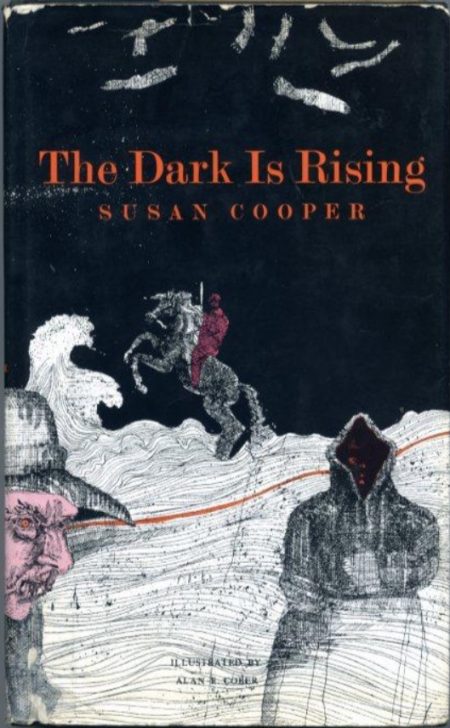
ALSO SEE: 100 BEST ADVENTURES OF THE SEVENTIES (1974–1983)

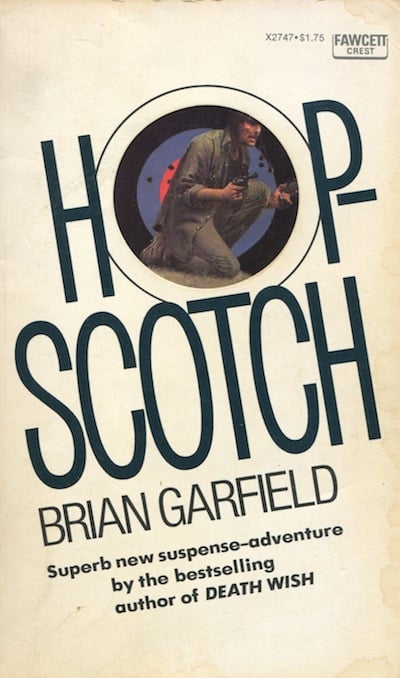

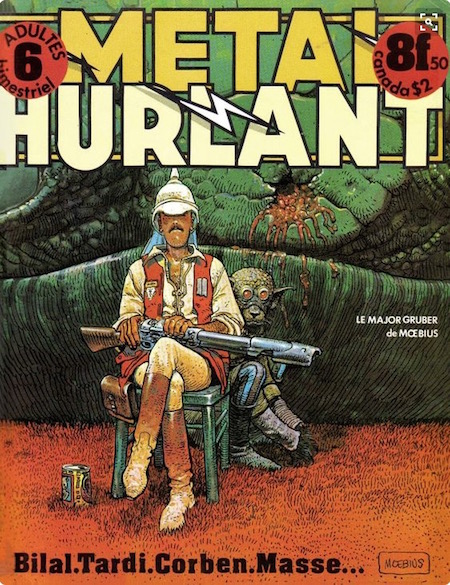
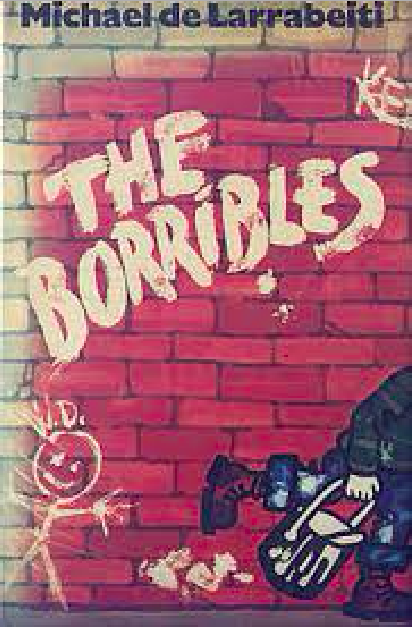
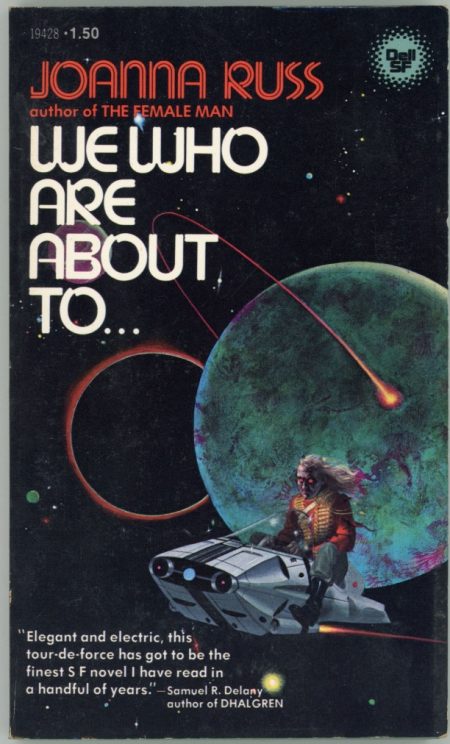


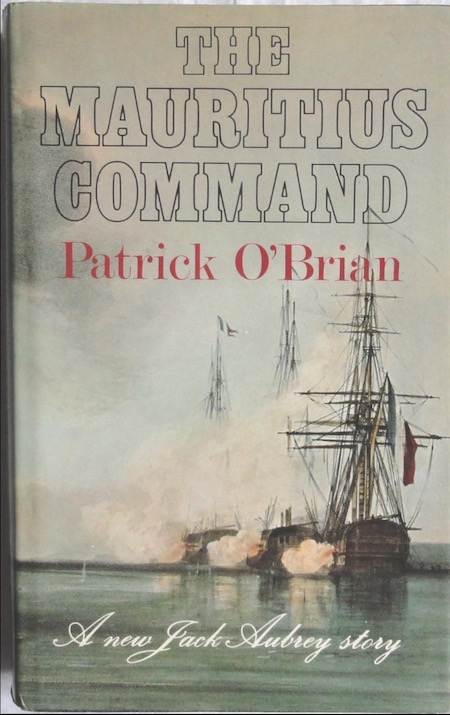
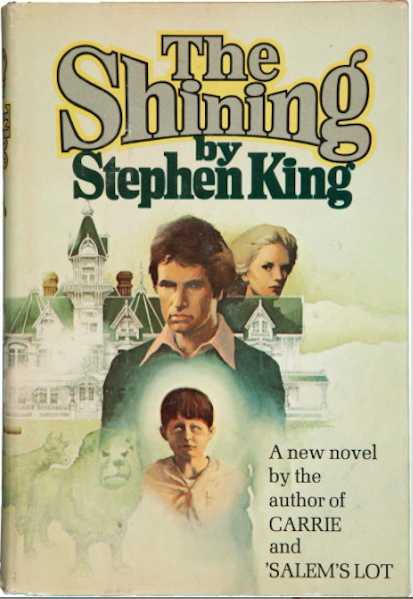
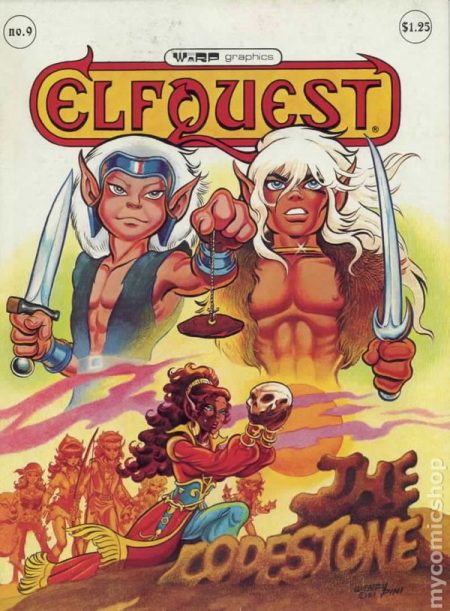
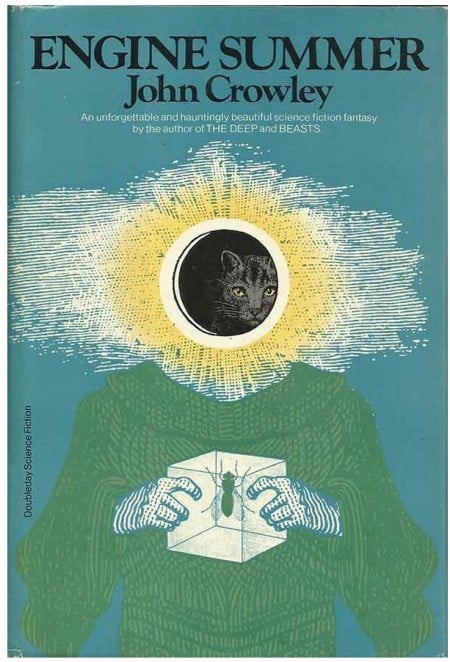
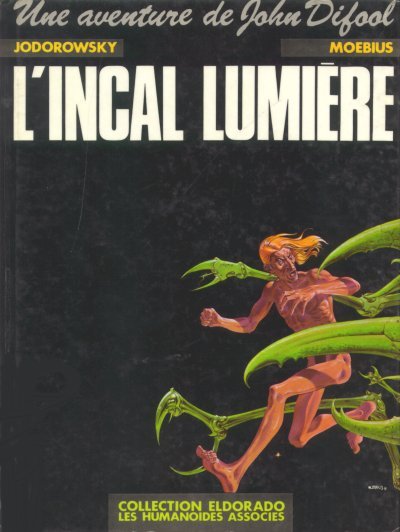
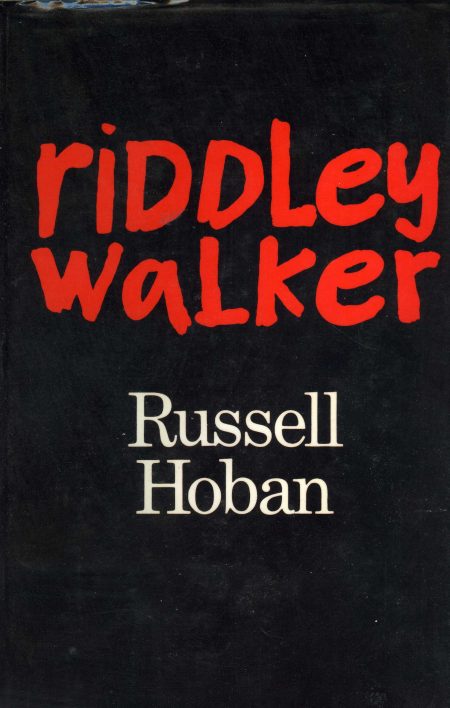
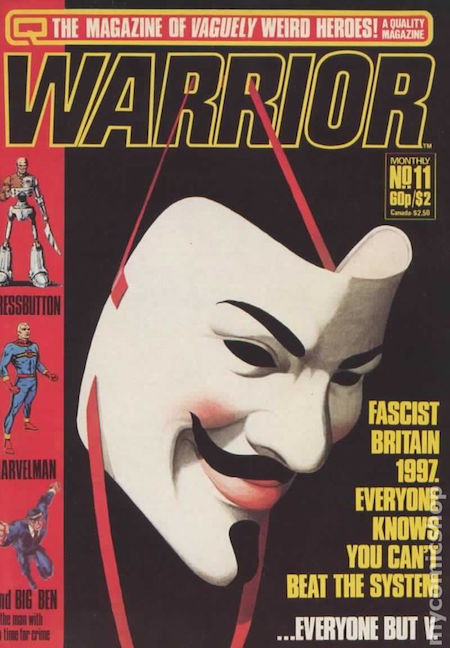
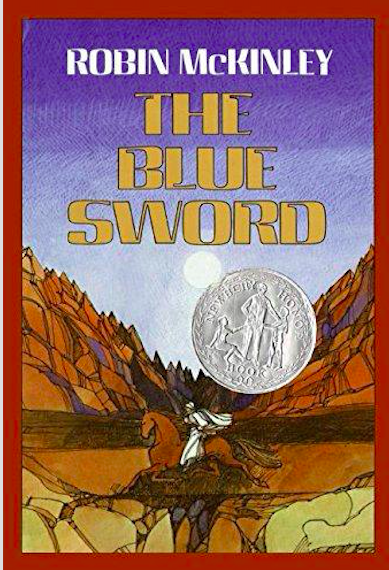


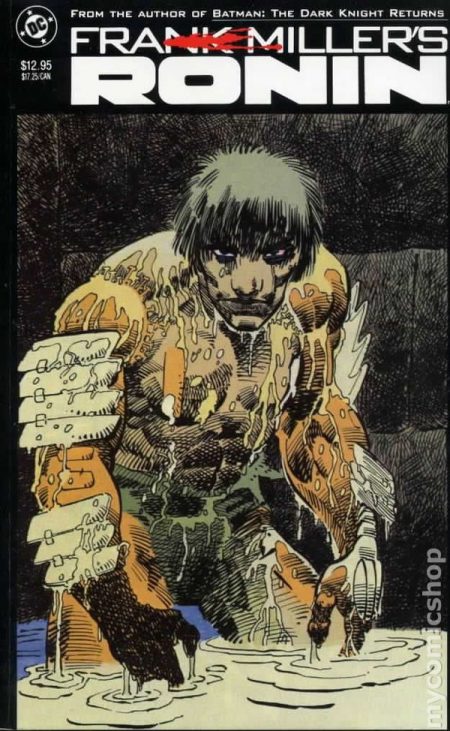
For notes towards a list of Best Adventures of the Eighties, Nineties, and Twenty-Oughts, please click here.
20 ADVENTURE THEMES AND MEMES: Index to All Adventure Lists | Introduction to Adventure Themes & Memes Series | Index to Entire Series | The Robinsonade (theme: DIY) | The Robinsonade (theme: Un-Alienated Work) | The Robinsonade (theme: Cozy Catastrophe) | The Argonautica (theme: All for One, One for All) | The Argonautica (theme: Crackerjacks) | The Argonautica (theme: Argonaut Folly) | The Argonautica (theme: Beautiful Losers) | The Treasure Hunt | The Frontier Epic | The Picaresque | The Avenger Drama (theme: Secret Identity) | The Avenger Drama (theme: Self-Liberation) | The Avenger Drama (theme: Reluctant Bad-Ass) | The Atavistic Epic | The Hide-And-Go-Seek Game (theme: Artful Dodger) | The Hide-And-Go-Seek Game (theme: Conspiracy Theory) | The Hide-And-Go-Seek Game (theme: Apophenia) | The Survival Epic | The Ruritanian Fantasy | The Escapade
JOSH GLENN’S *BEST ADVENTURES* LISTS: BEST 250 ADVENTURES OF THE 20TH CENTURY | 100 BEST OUGHTS ADVENTURES | 100 BEST RADIUM AGE (PROTO-)SCI-FI ADVENTURES | 100 BEST TEENS ADVENTURES | 100 BEST TWENTIES ADVENTURES | 100 BEST THIRTIES ADVENTURES | 75 BEST GOLDEN AGE SCI-FI ADVENTURES | 100 BEST FORTIES ADVENTURES | 100 BEST FIFTIES ADVENTURES | 100 BEST SIXTIES ADVENTURES | 75 BEST NEW WAVE SCI FI ADVENTURES | 100 BEST SEVENTIES ADVENTURES | 100 BEST EIGHTIES ADVENTURES | 75 BEST DIAMOND AGE SCI-FI ADVENTURES | 100 BEST NINETIES ADVENTURES (in progress) | 1994 | 1995 | 1996 | 1997 | 1998 | 1999 | 2000 | 2001 | 2002 | 2003 | NOTES ON 21st-CENTURY ADVENTURES.
